Holland, Michigan Tulip Festival
Meijer Gardens and Sculpture Park
May 2019
Beth and I decided to travel to Wisconsin to visit her family. Instead of making the trip in one day, we decided to split it up and stop in Ohio to visit the Amish country on the way to Wisconsin, and in Michigan on the way home to visit the Holland, Michigan Tulip Festival and the Frederick Meijer Gardens and Sculpture Park in Grand Rapids, Michigan.
We chose to stay in Berlin, Ohio at Zinck’s Inn, an Amish-run hotel. It was very nice!
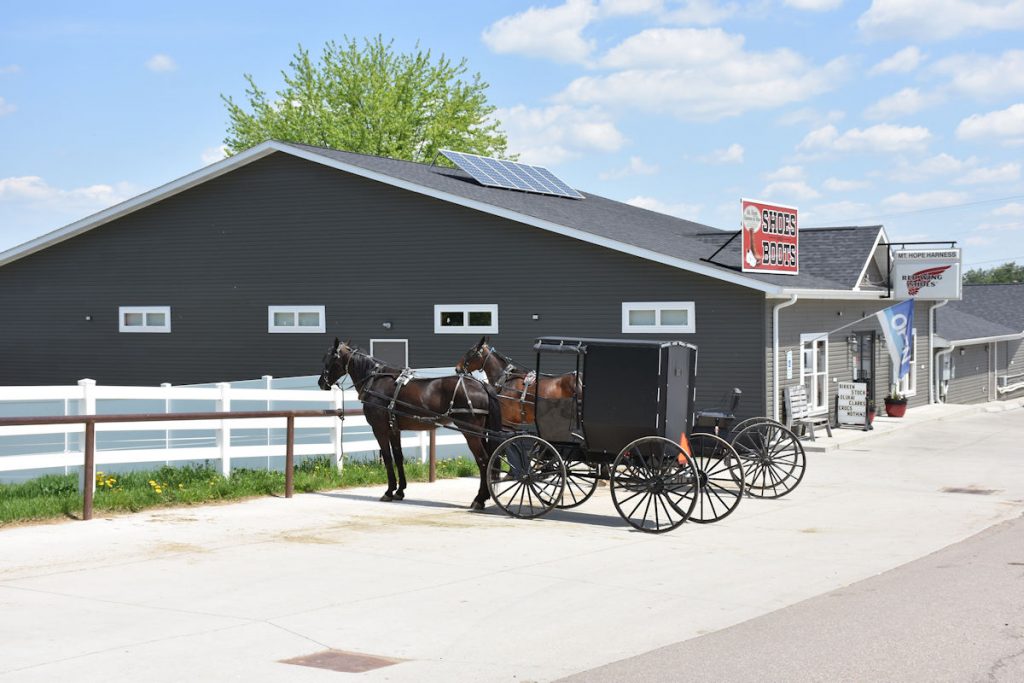
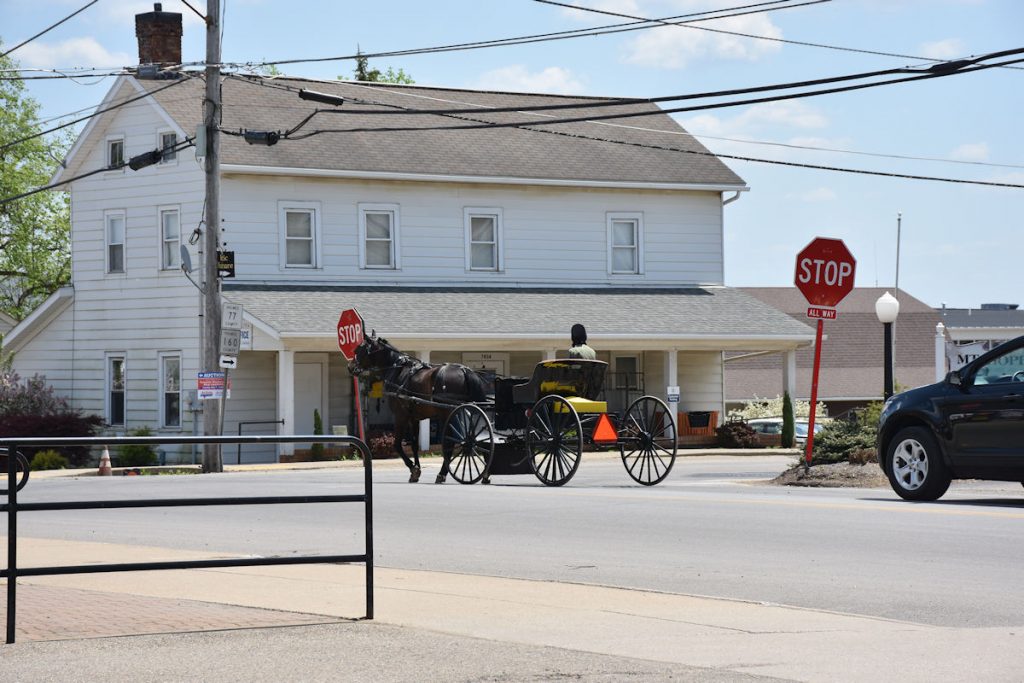
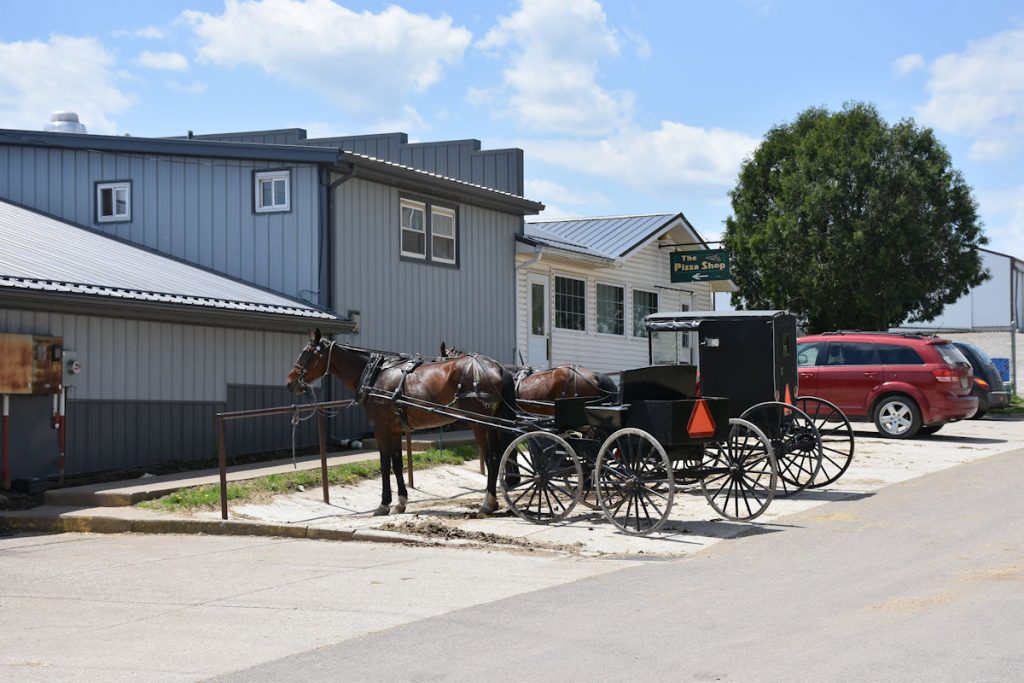
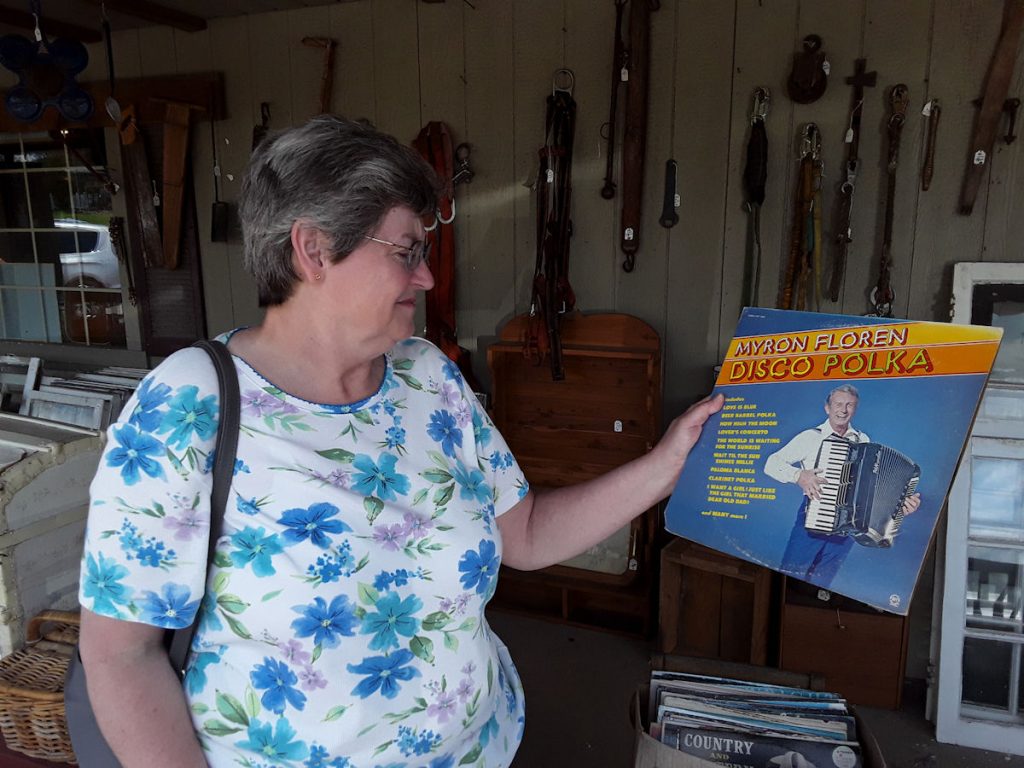
Beth found this Myron Floren polka album. Too bad we don’t have a record player anymore.
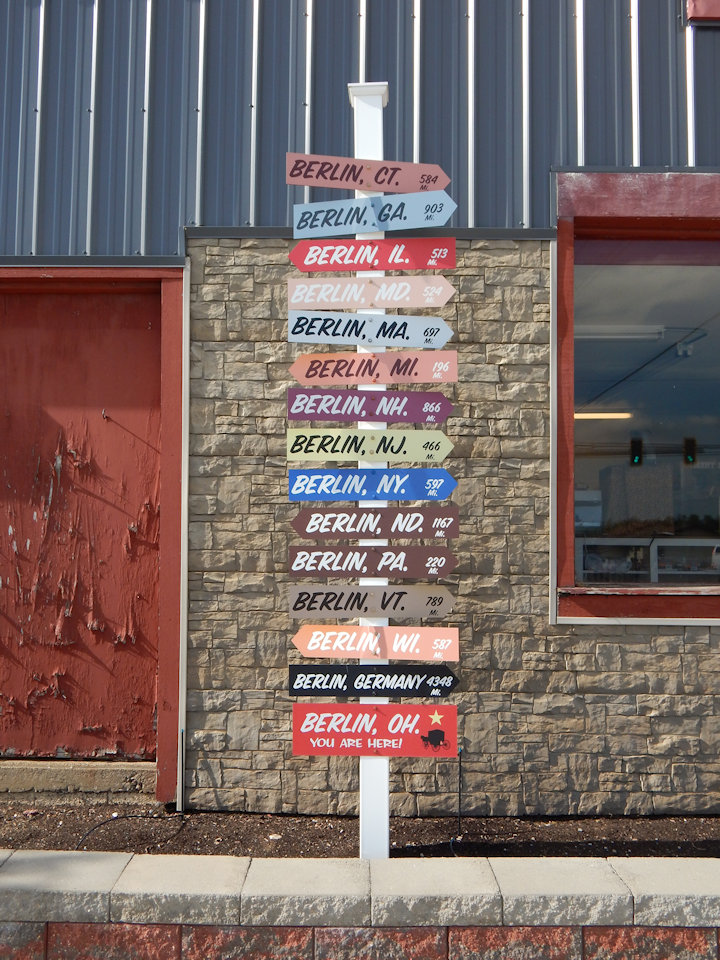
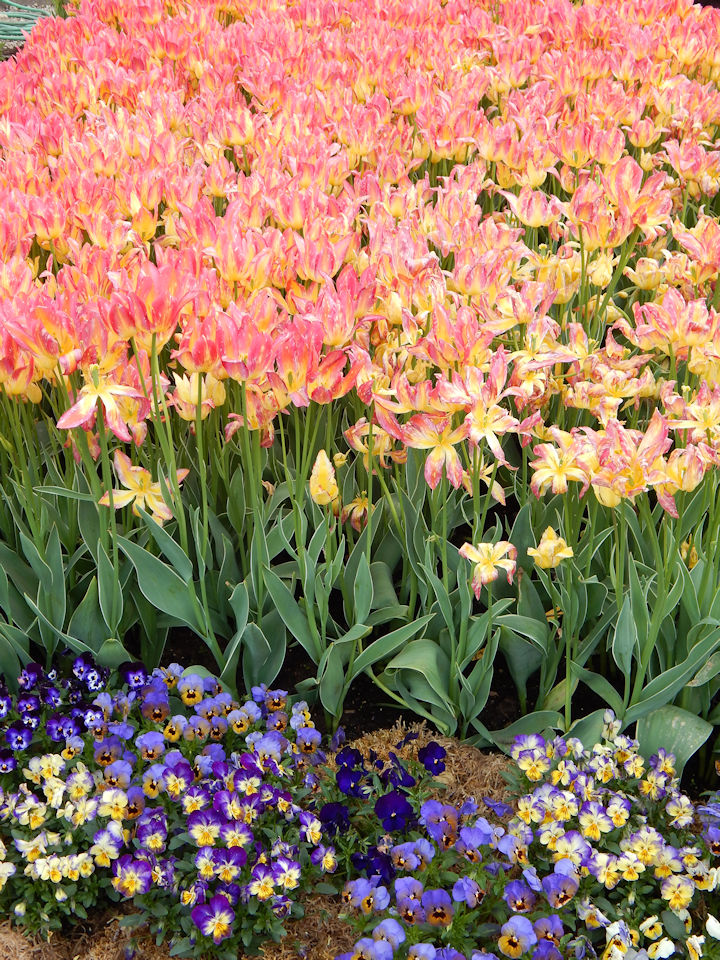
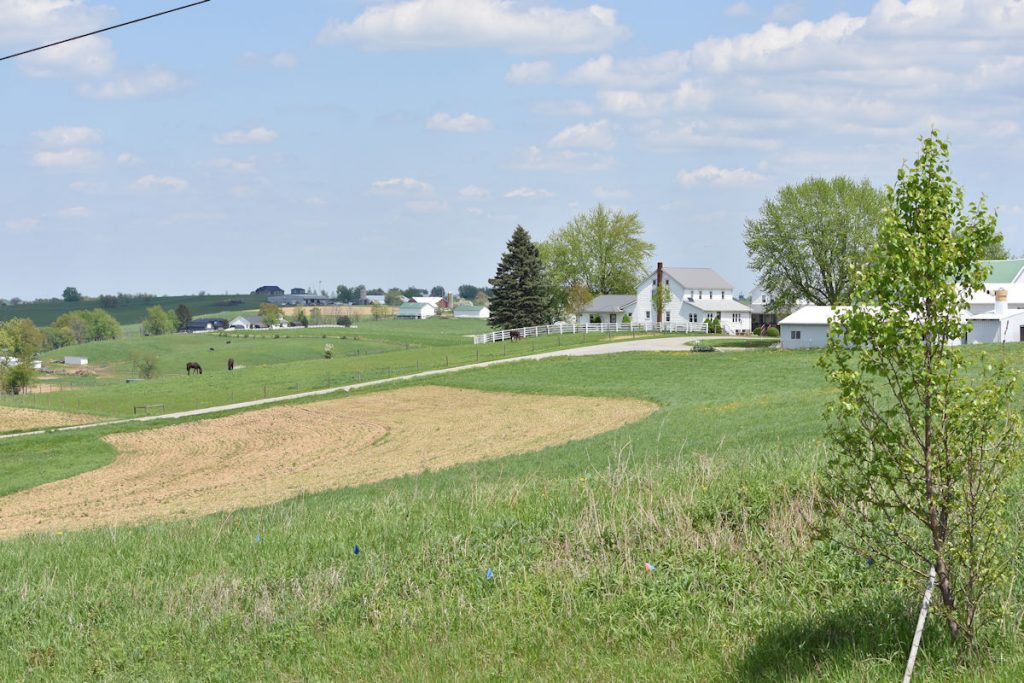
and drove around looking at the very clean, neat, and orderly farms in the area.
At dinner, we chatted with a very friendly Amish couple at the next table.
They were probably in their 70s and had lived here all their lives, and travel only with their horses.
The longest trip with the horses was 15 miles. Farther than that, and groups charter a van with driver.
********************
The next day, we continued through Amish country to Millersburg and Loudonville before getting on Old Rt 30 (Lincoln Highway).
The Lincoln highway is one of the first coast-to-coast roads and remains a nice alternative to the busy interstates.
We followed Rt 30 from mid-Ohio to just below Chicago, and enjoyed the quiet drive through small towns and past old farms.
We arrived at Beth’s home that afternoon and unpacked the car before starting to visit friends and family.
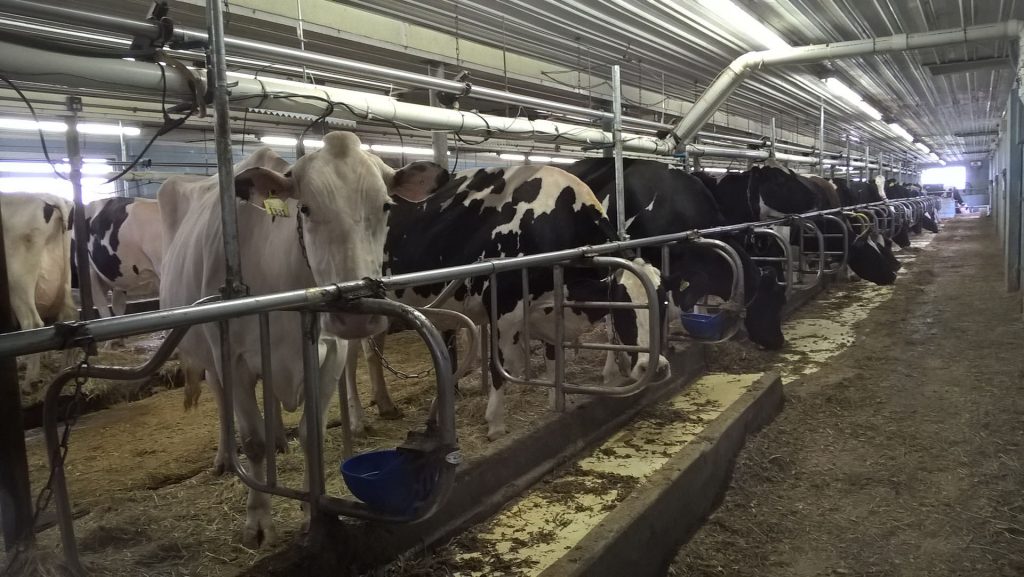
Hard work. Long days (starting at 4:30am). No days off. They love it!
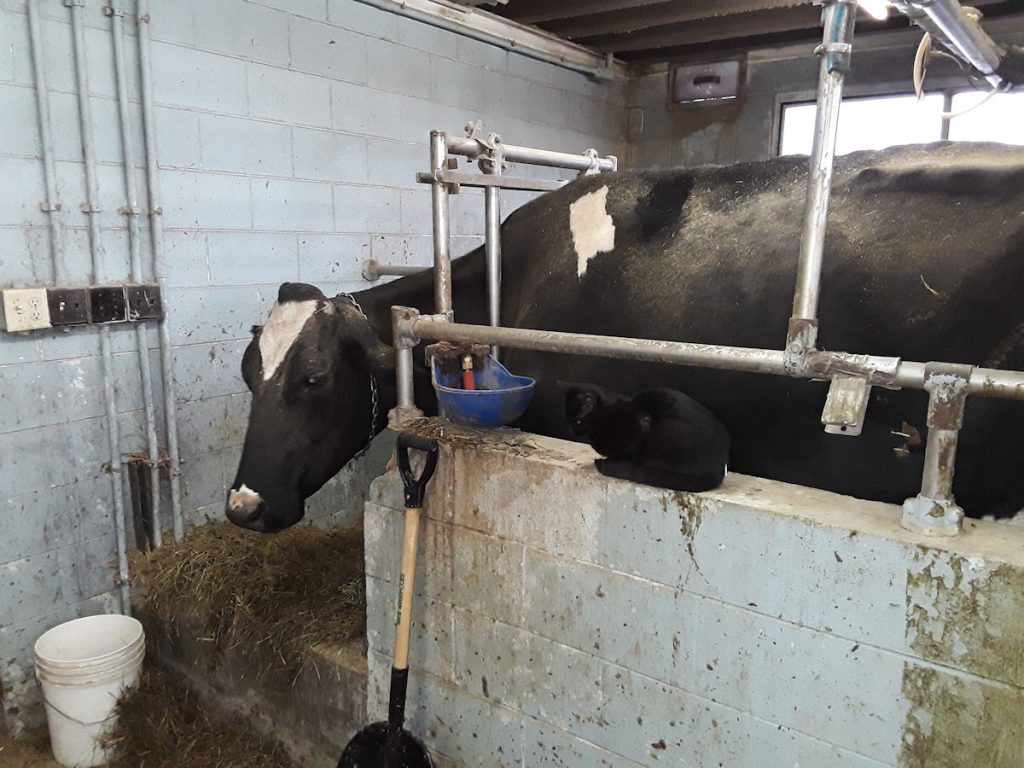
Hard to spot her on the ledge since she blends right in.
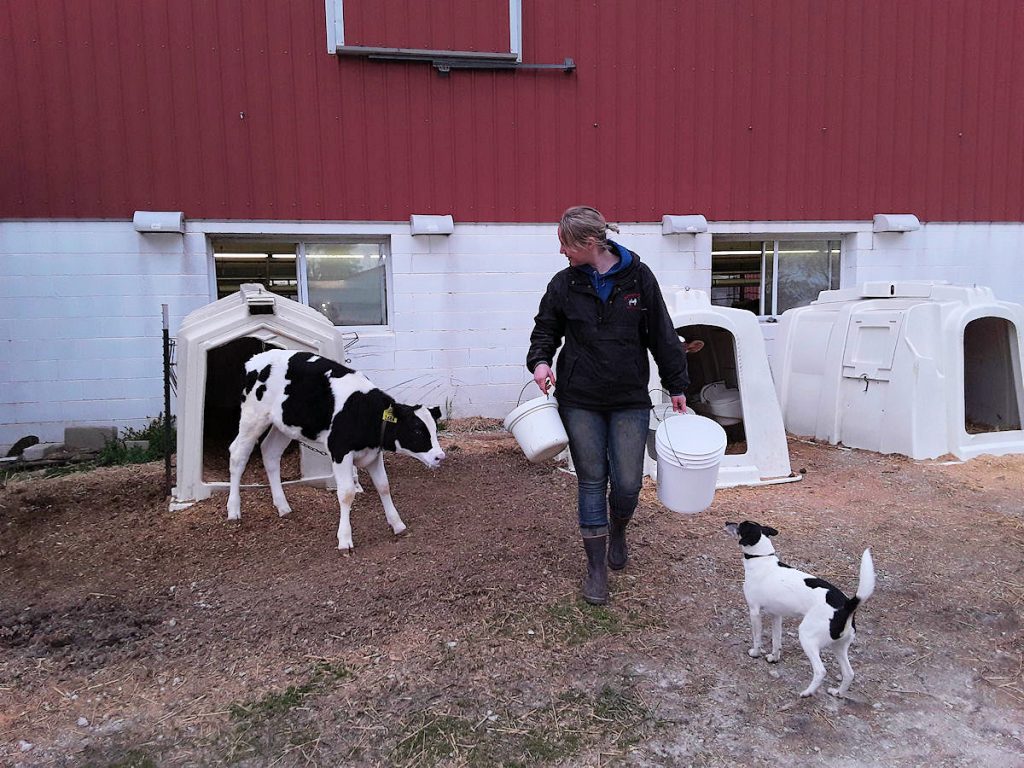
Here, Londa is busy feeding and caring for some of the dozen or so calves outside.
Rocky is her good helper. She also grew up on a dairy farm. (Can you tell she loves doing this?)
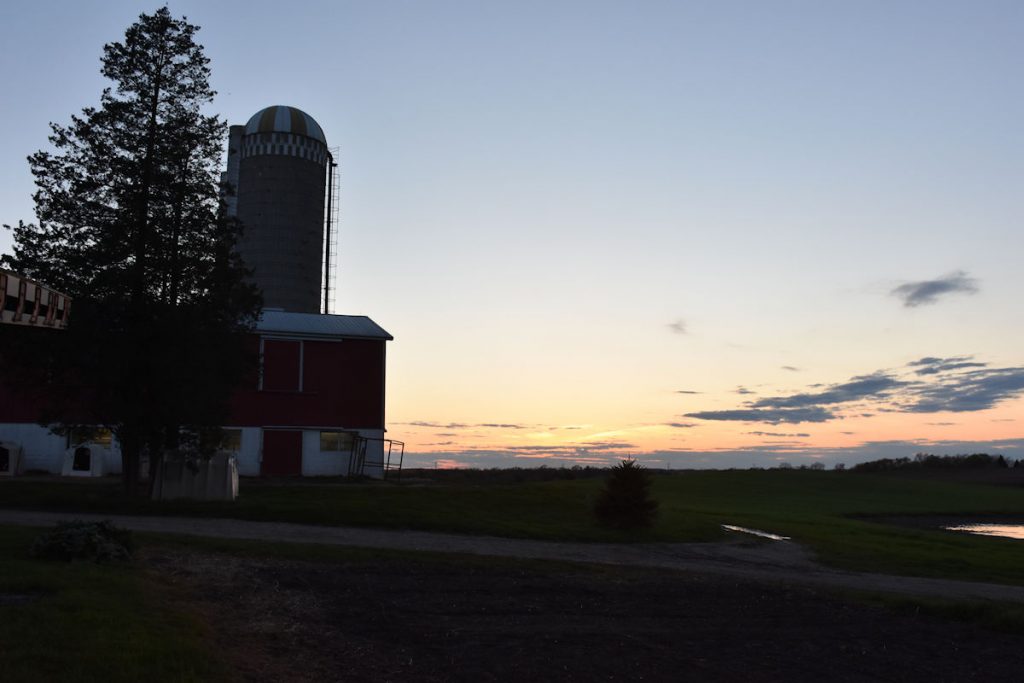
You can follow Hillpine Holsteins on Facebook at: https://www.facebook.com/HillpineHolsteins/
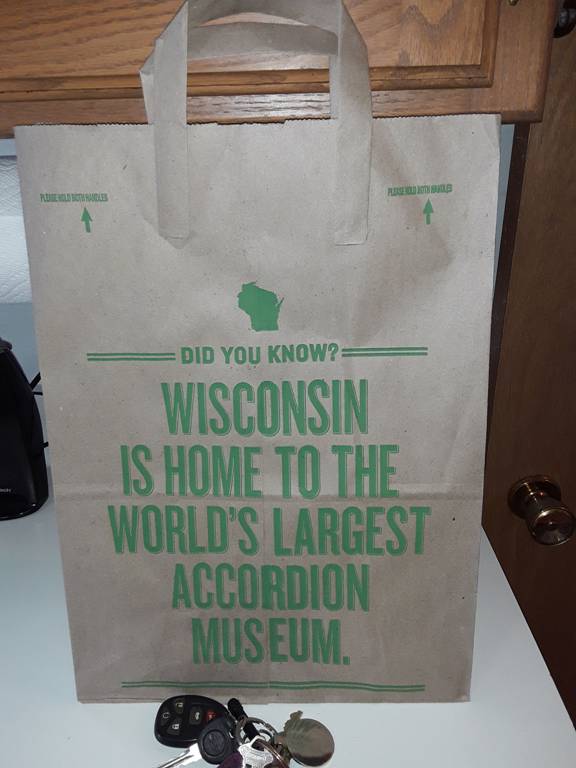
Holland, Michigan
After a week in Wisconsin, we had visited with many relatives and it was time to move on.
Our next stop is going to be Holland, Michigan, a city with a strong Dutch heritage (surprise!). Since it is home to a very large Tulip Festival each spring, we decided to schedule our trip so that we arrived just as the people were leaving. As good luck would have it, the tulips were a little late blooming this year, so they were at peak (and some were just blooming!) when we arrived and the crowds were gone. Perfect!
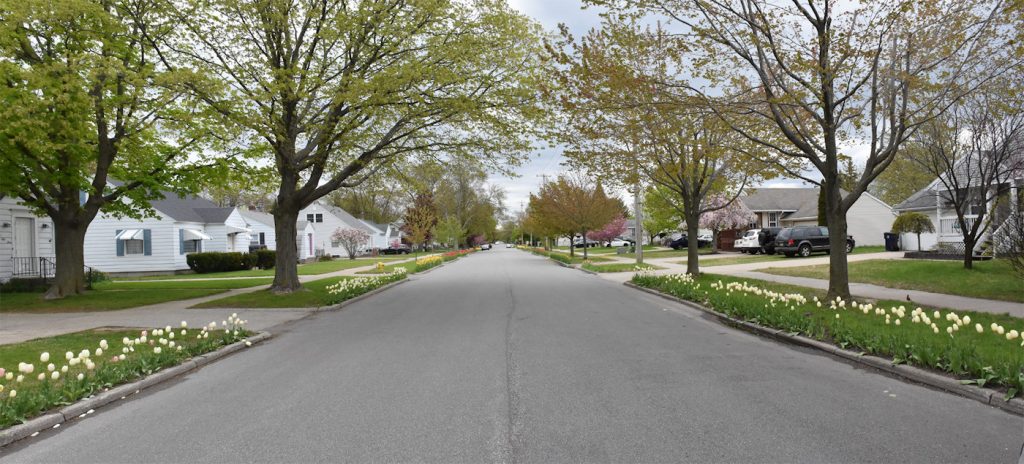
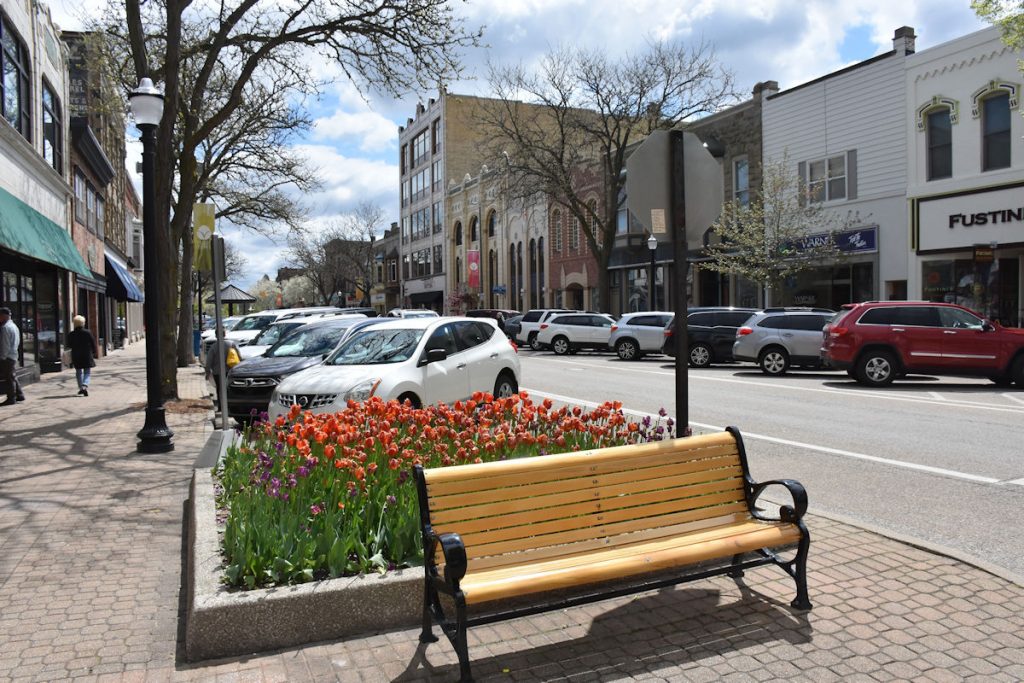
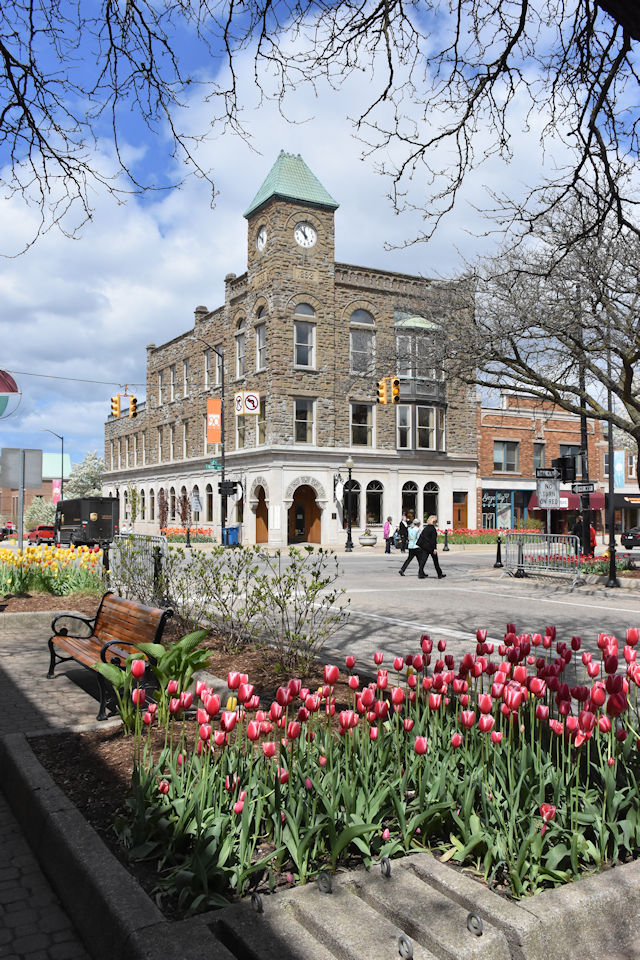
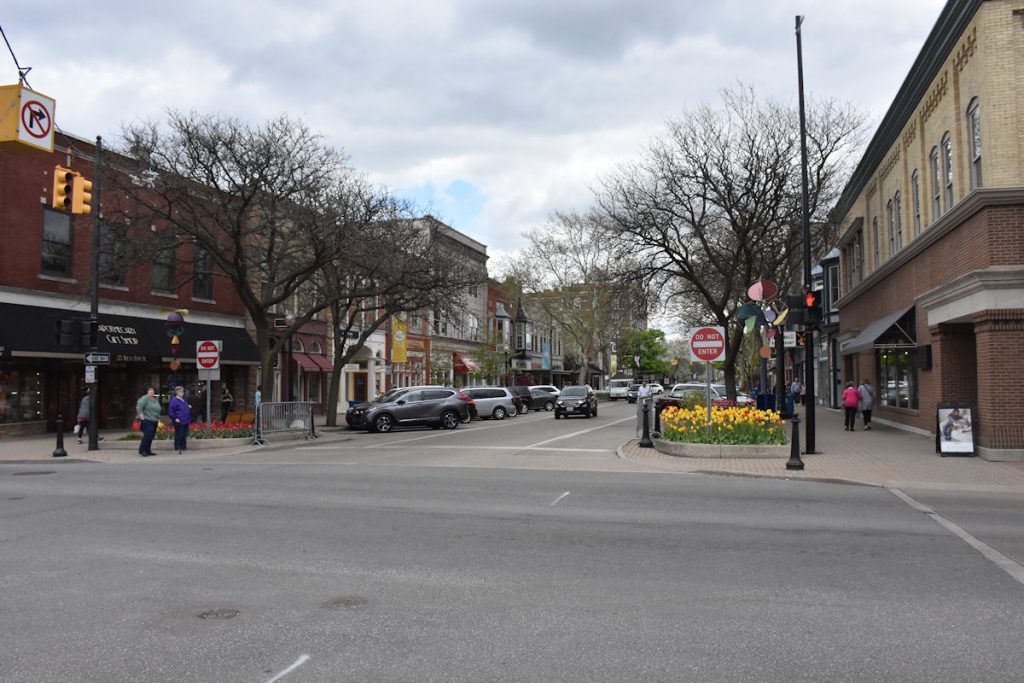
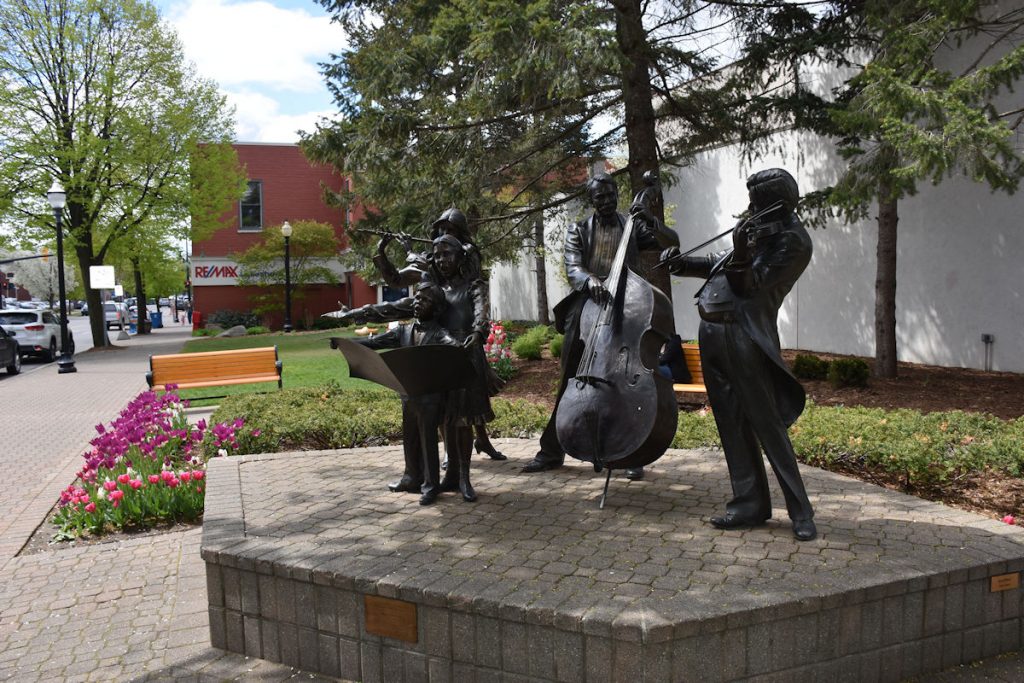
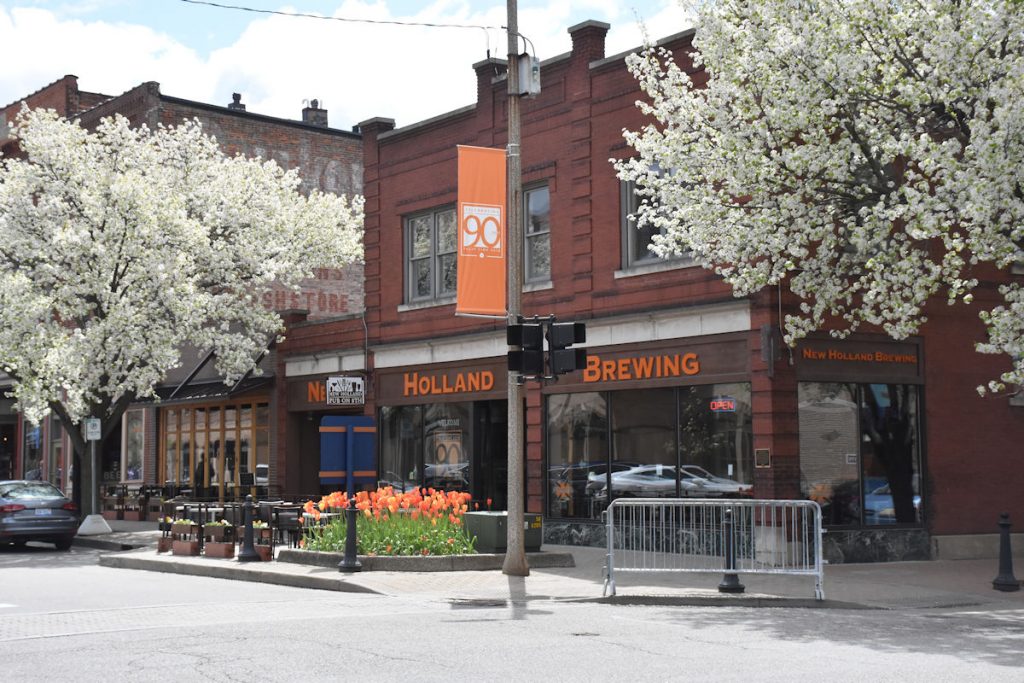

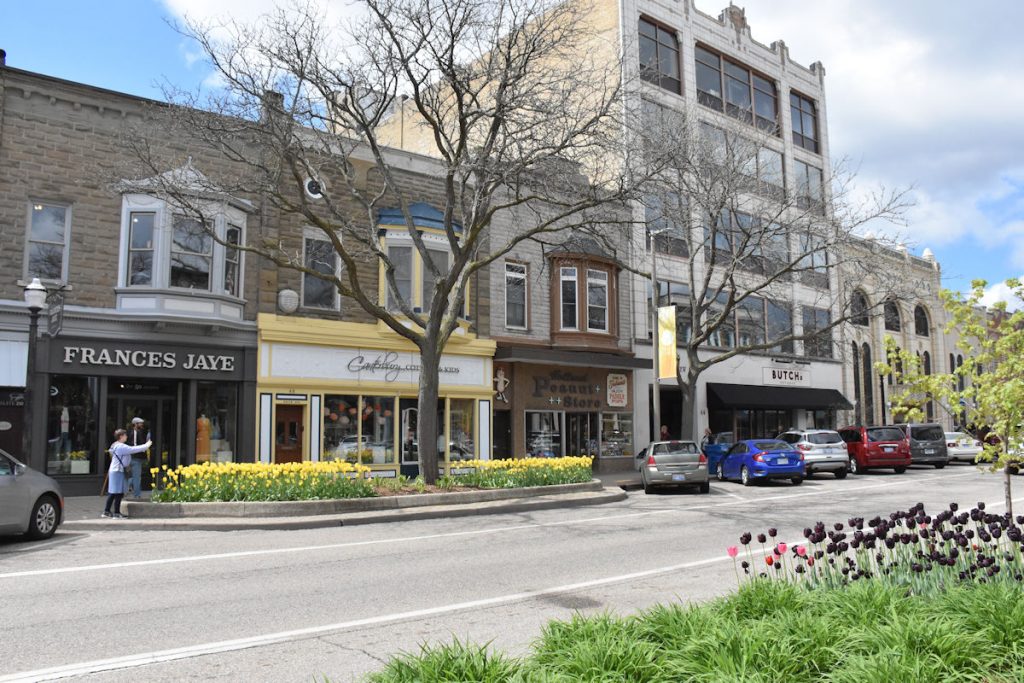
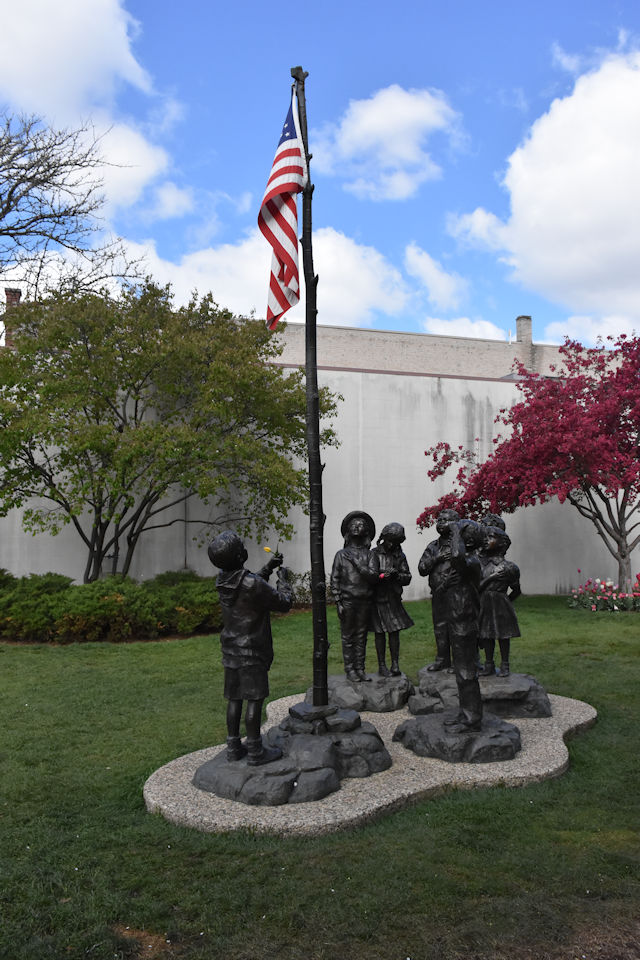

but this week he has a tulip.

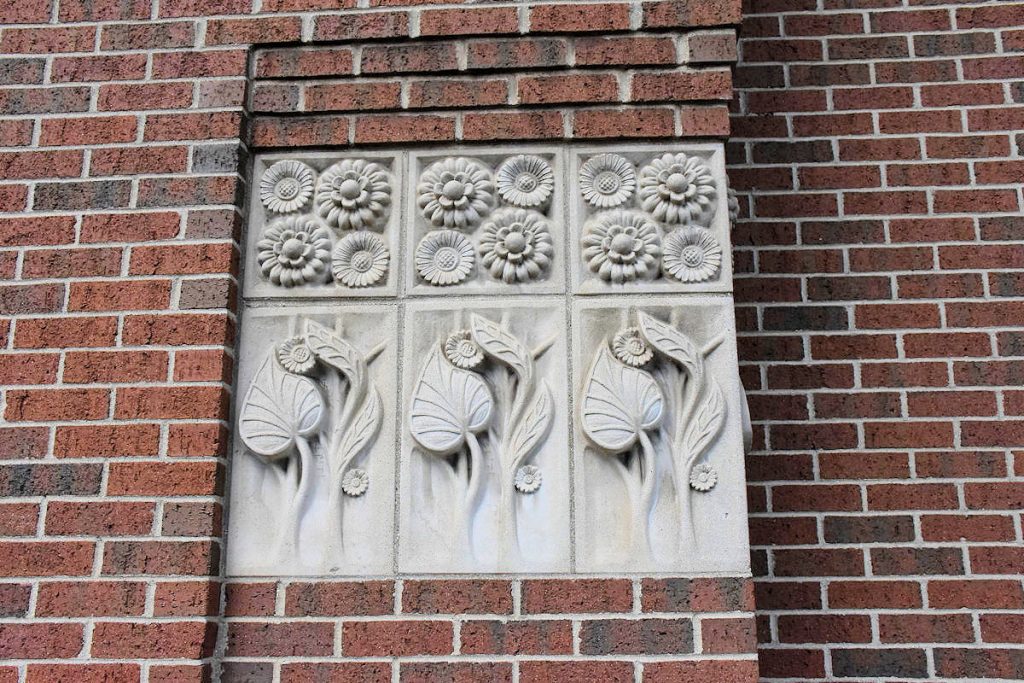
*****
Time for lunch! We stopped in at the Windmill Restaurant, which came highly recommended by the locals.
There was even a 10-minute waiting line, but it was well worth it!
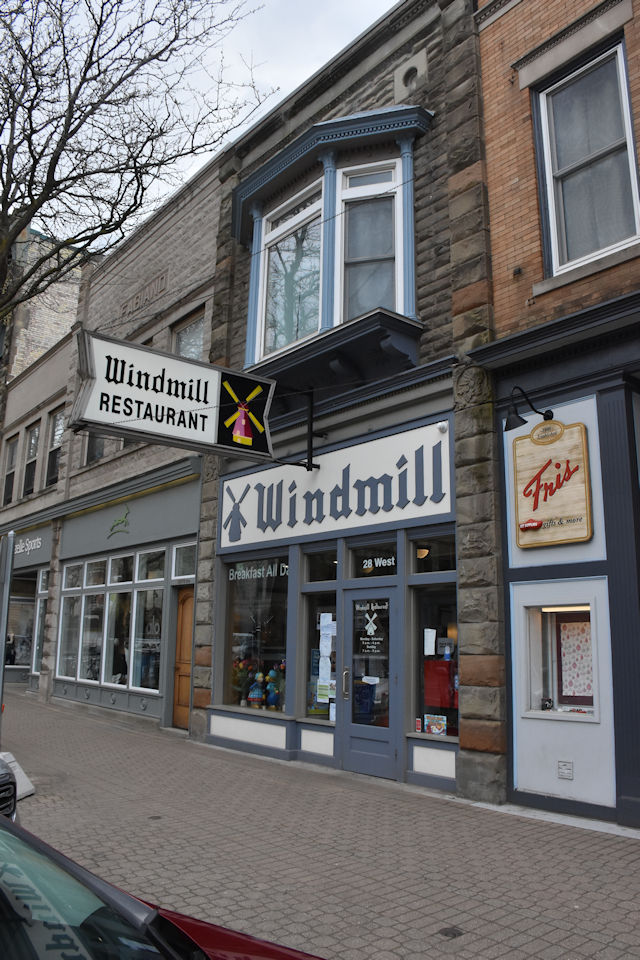
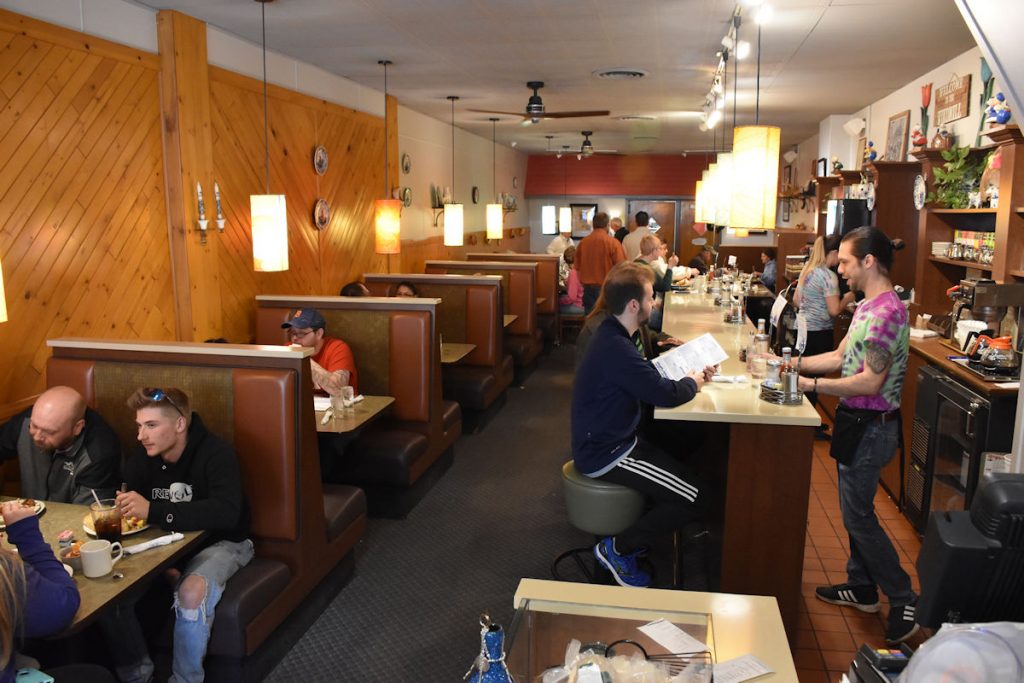
******
After lunch, it was time to walk down to the Window on the Waterfront.
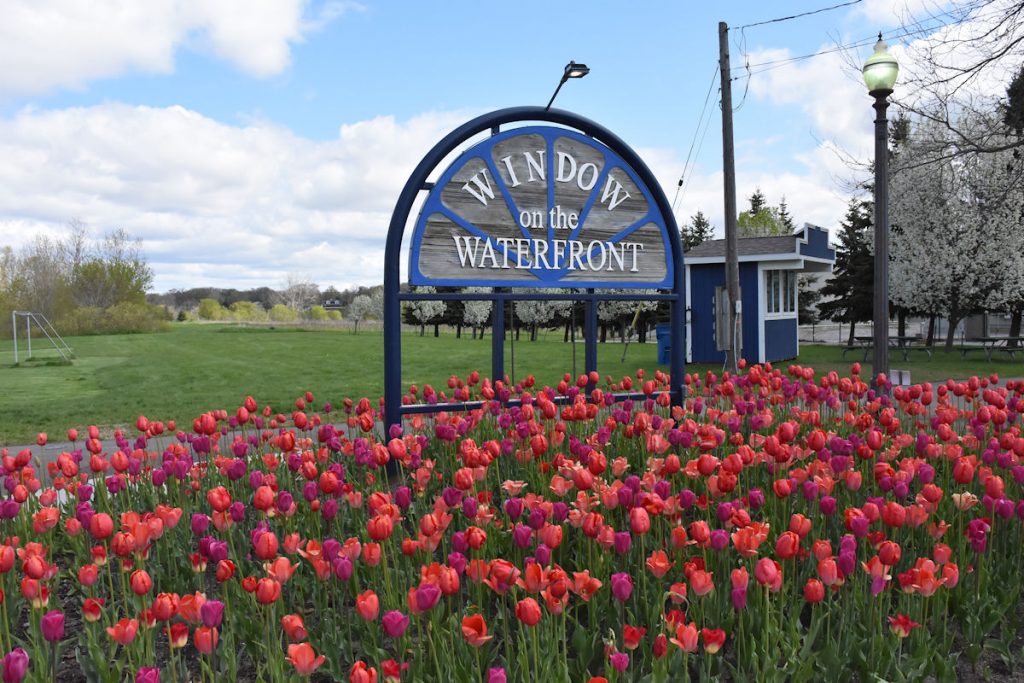
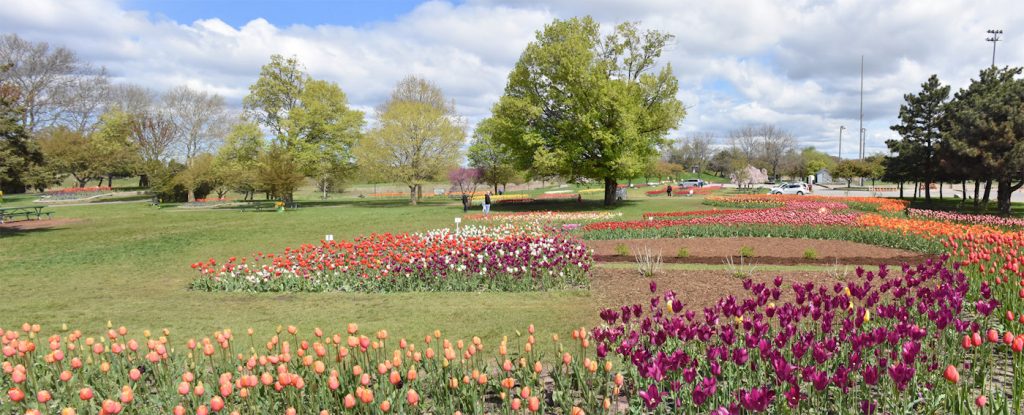
Everywhere you look – more tulips! Many were just blooming due to a late spring. Perfect timing!
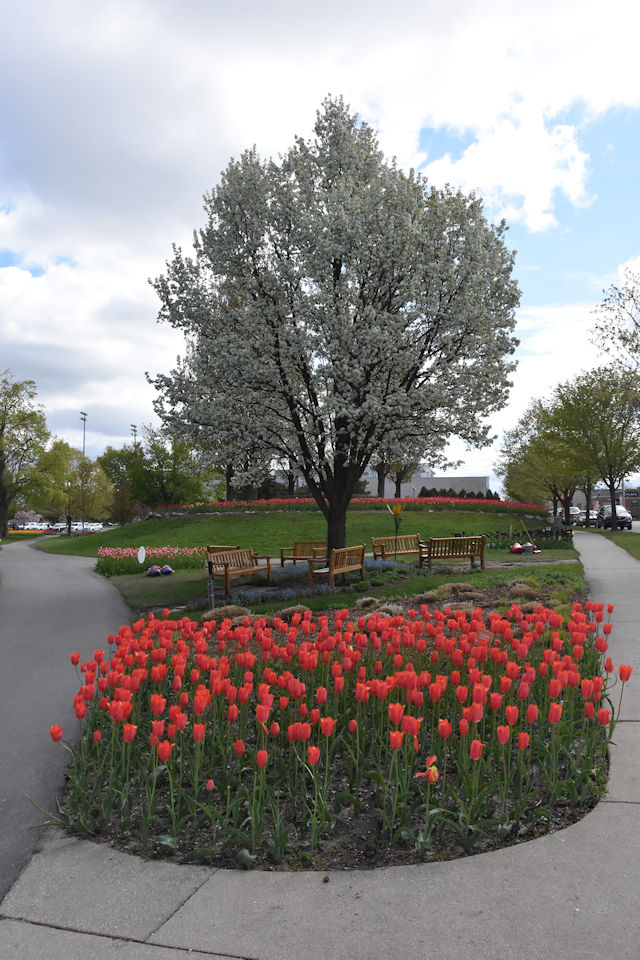
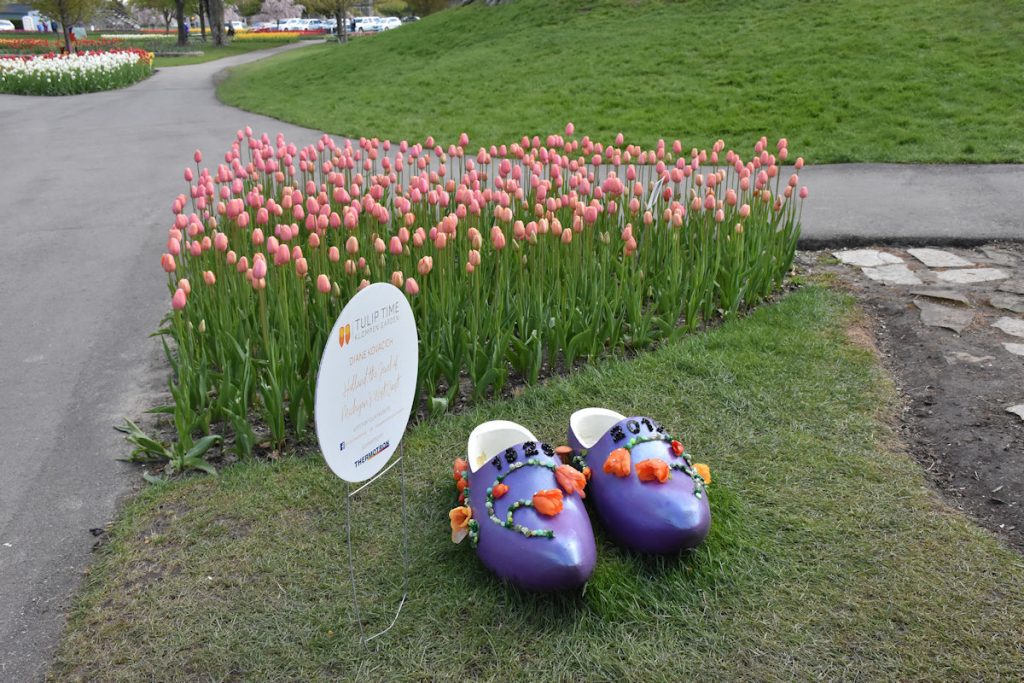
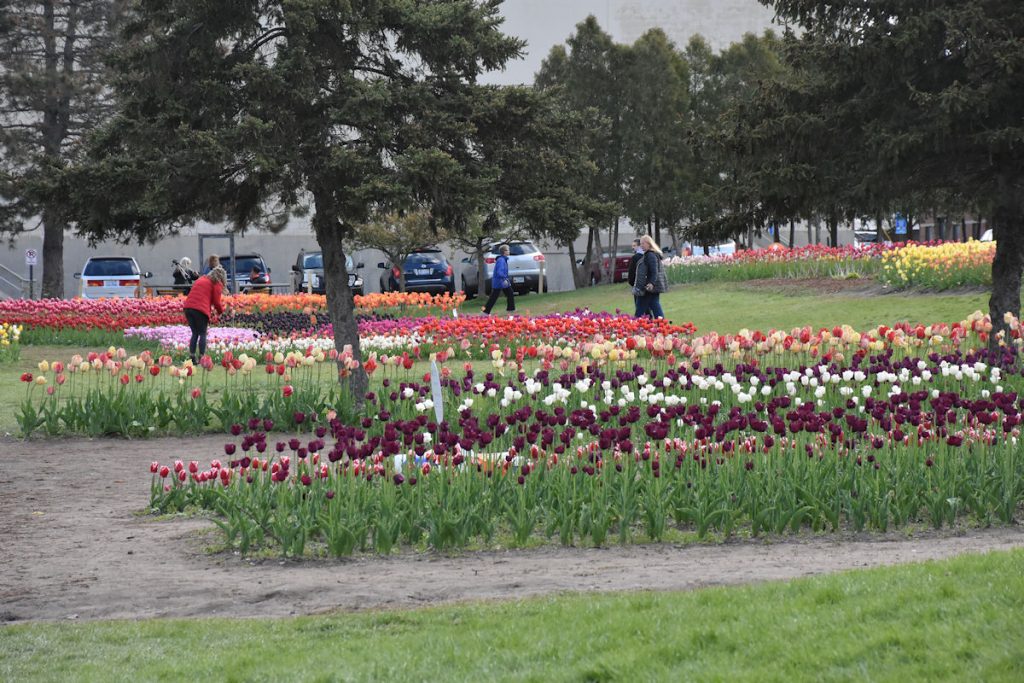
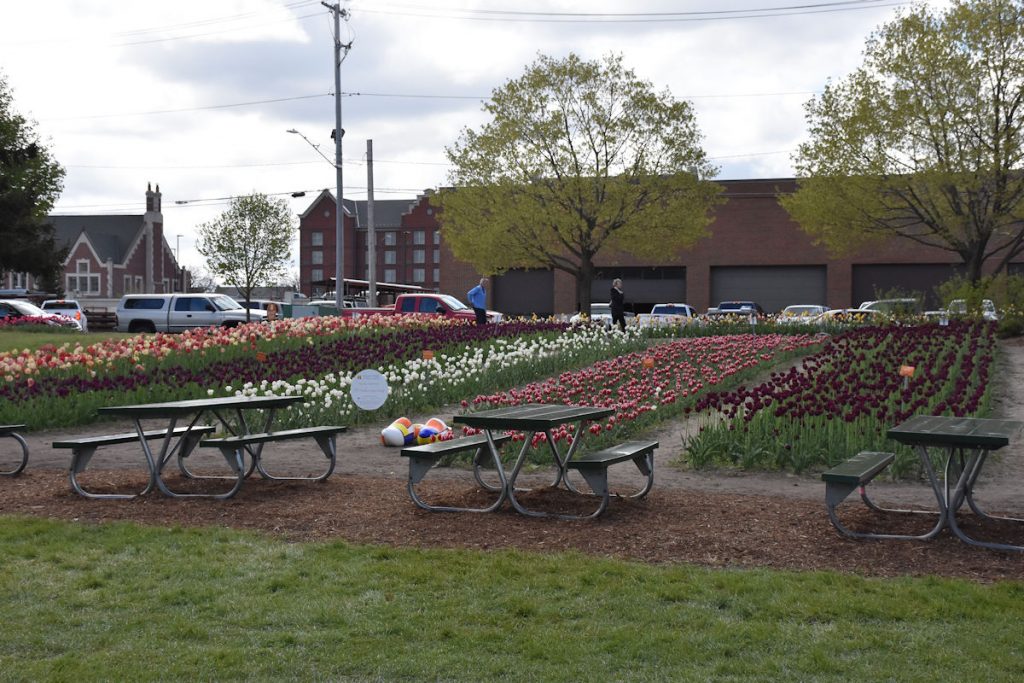
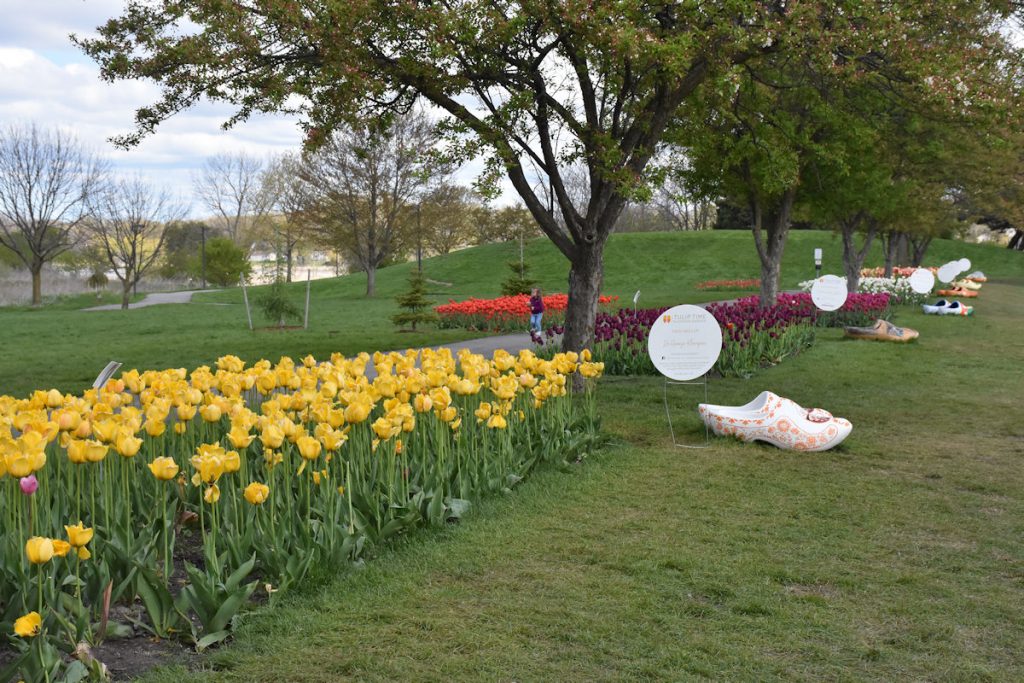
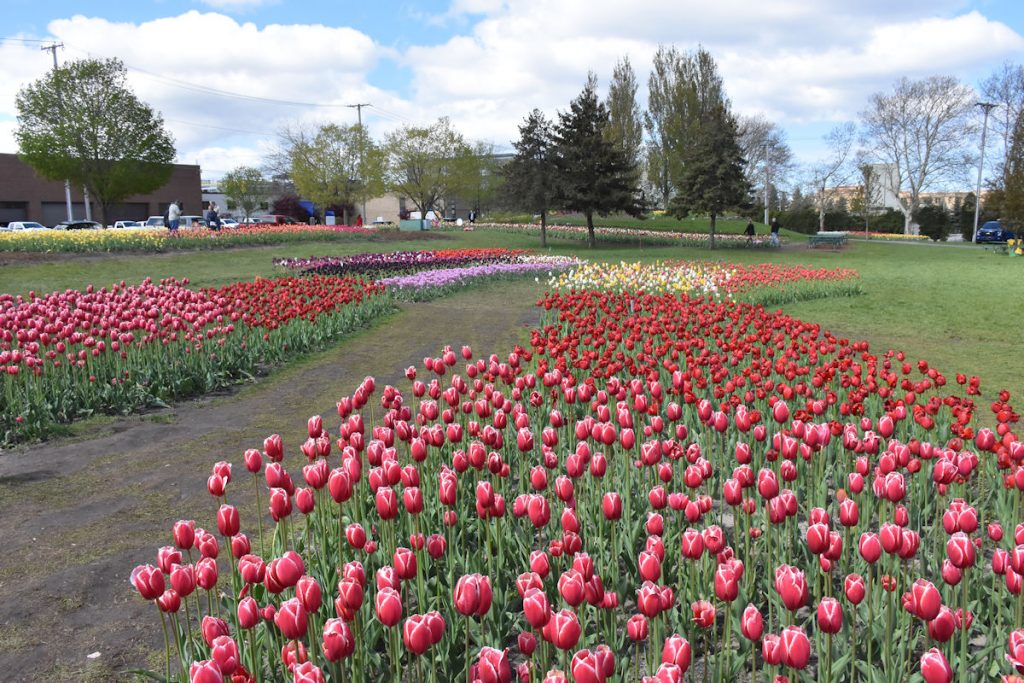
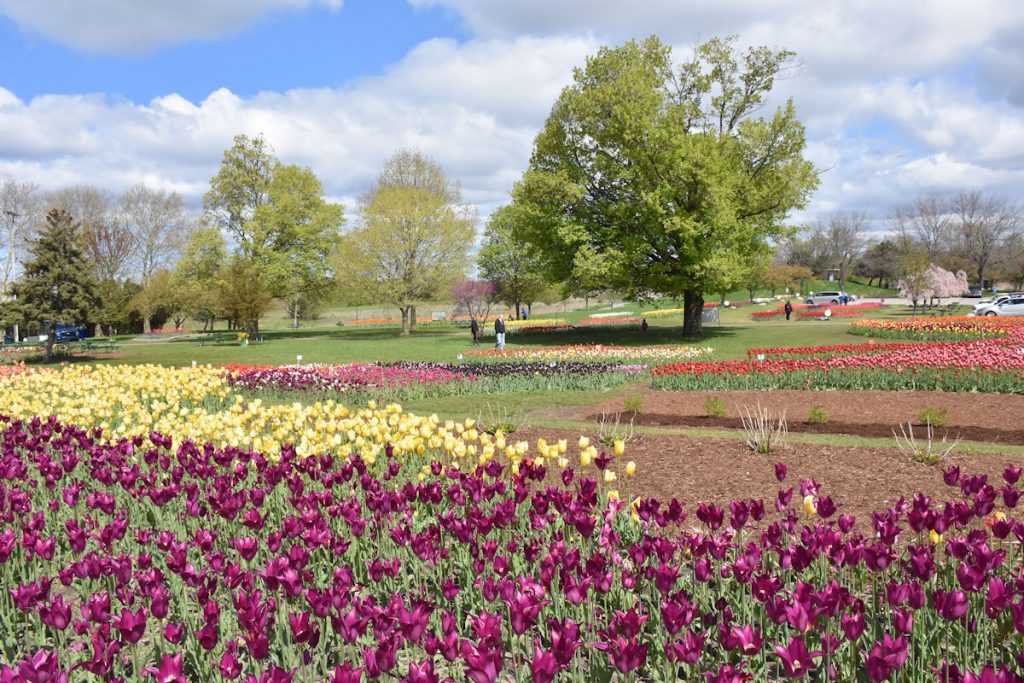
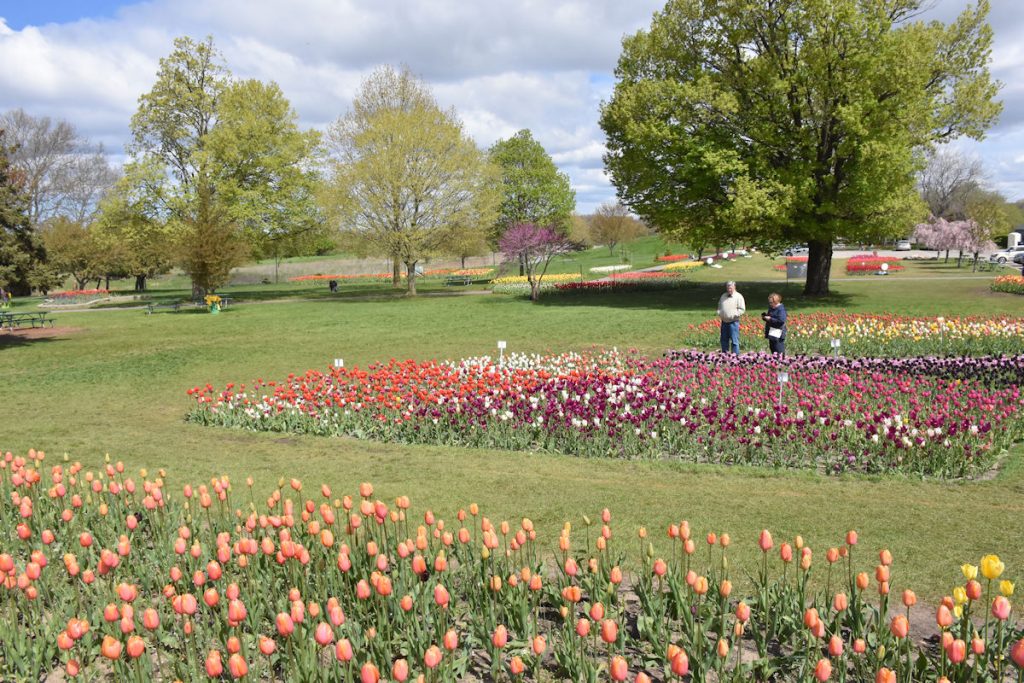

Next on our tour of Holland was Centennial Park, the city park in the town center.
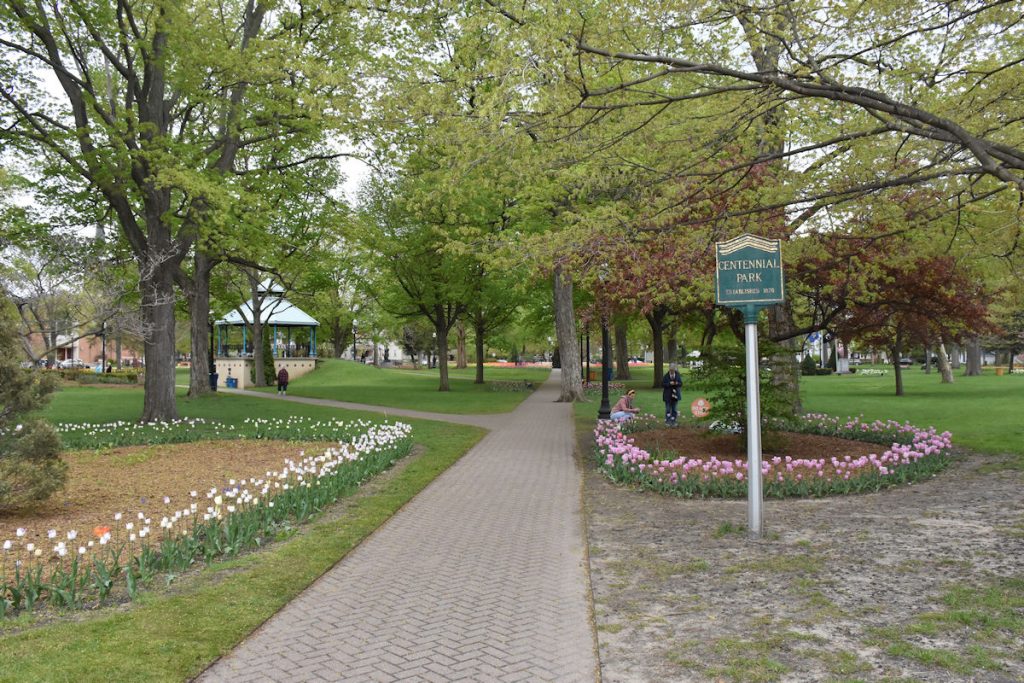
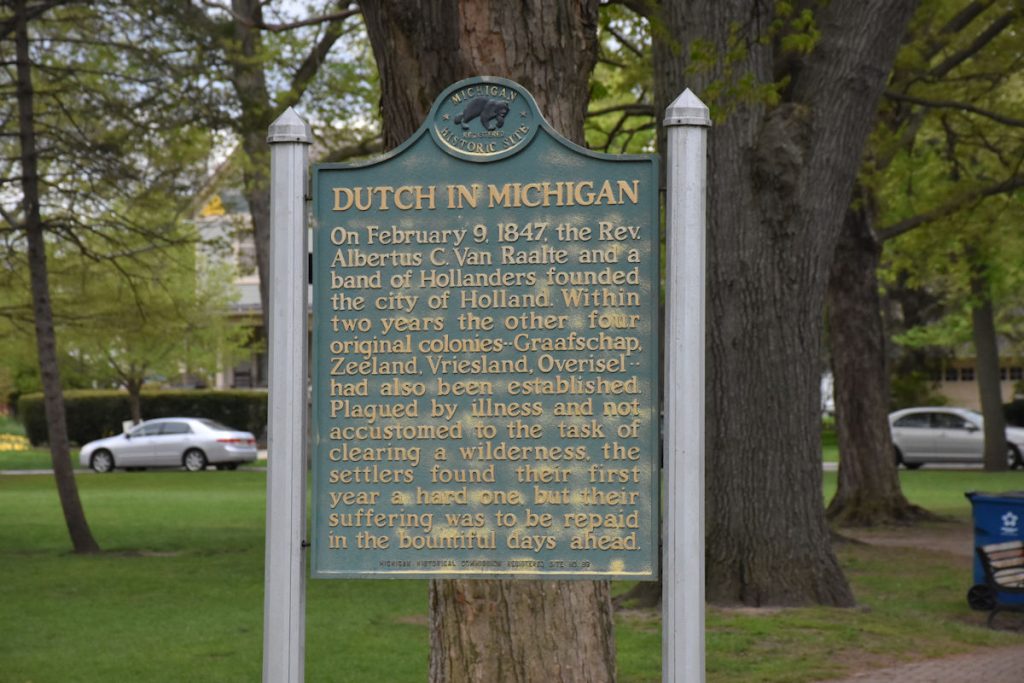
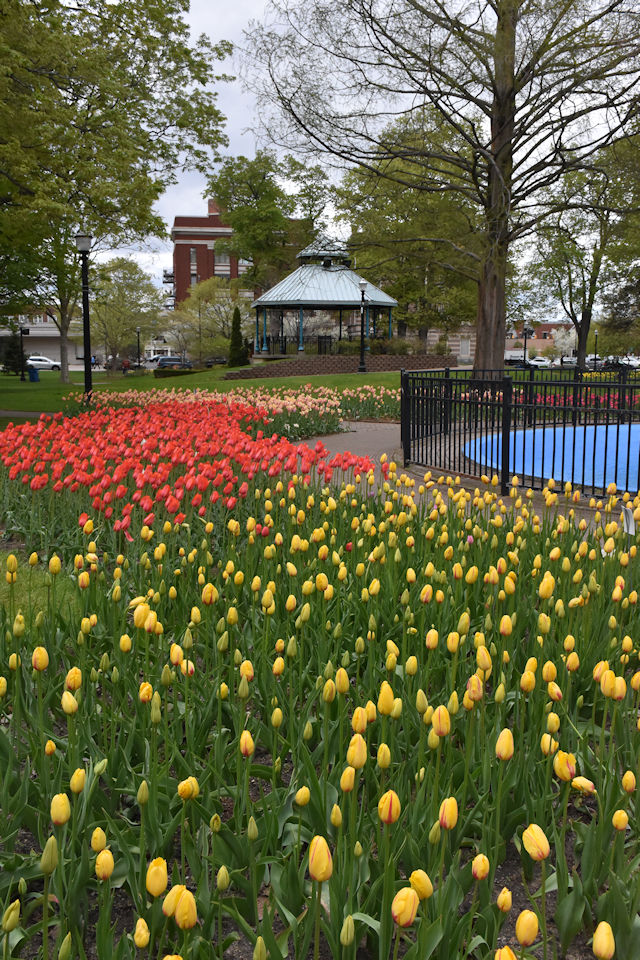
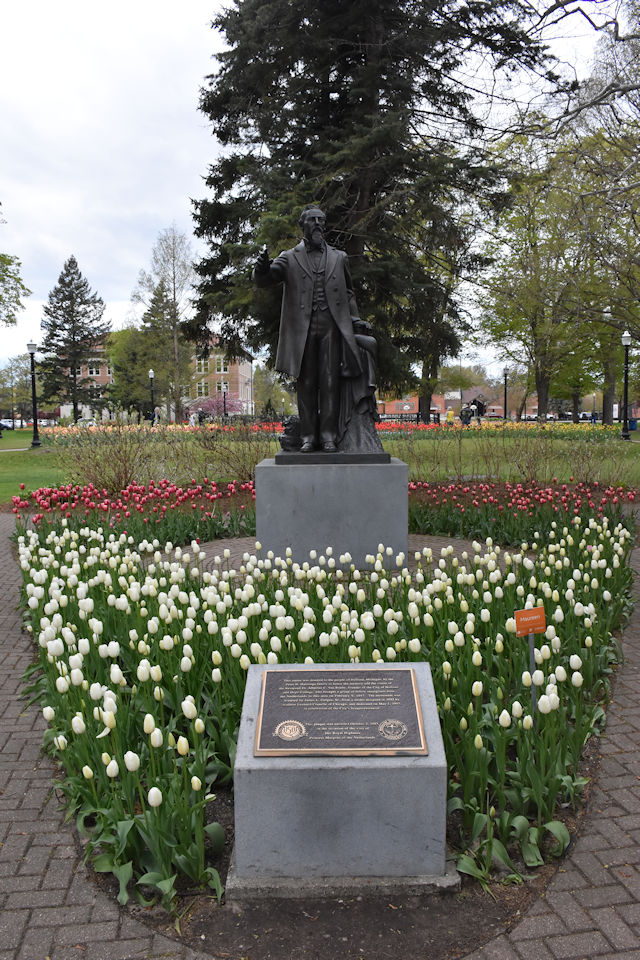
(see plaque below)
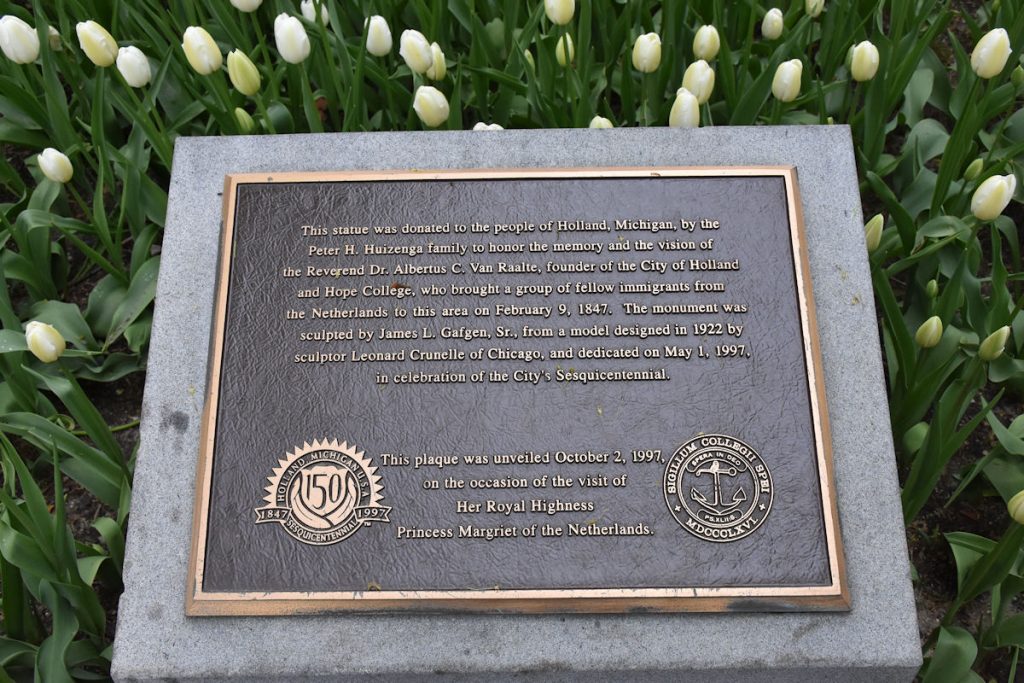
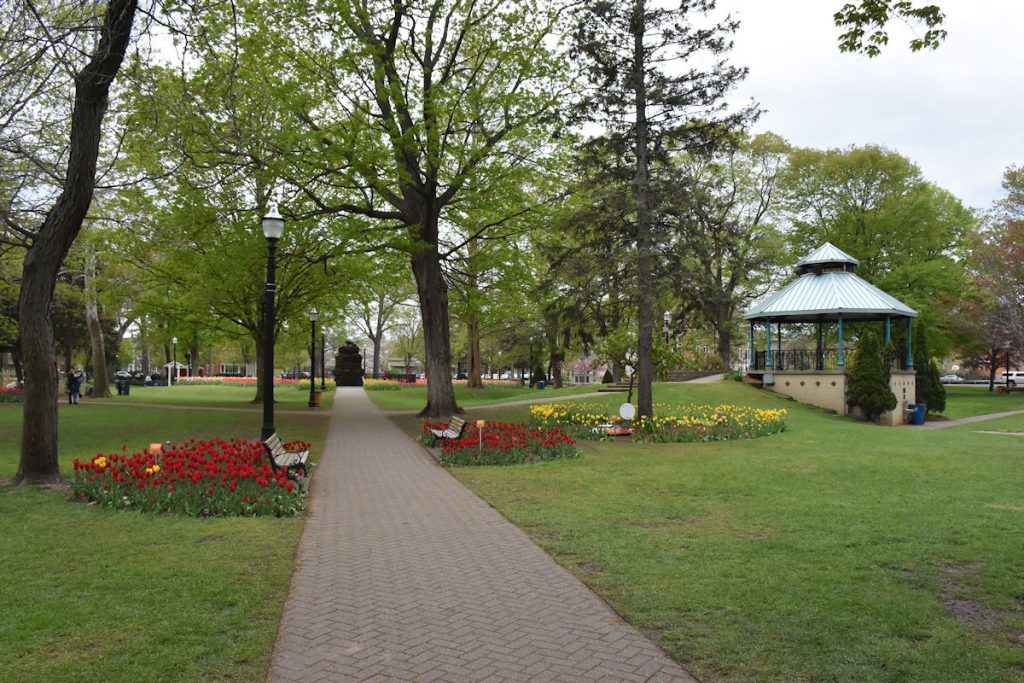
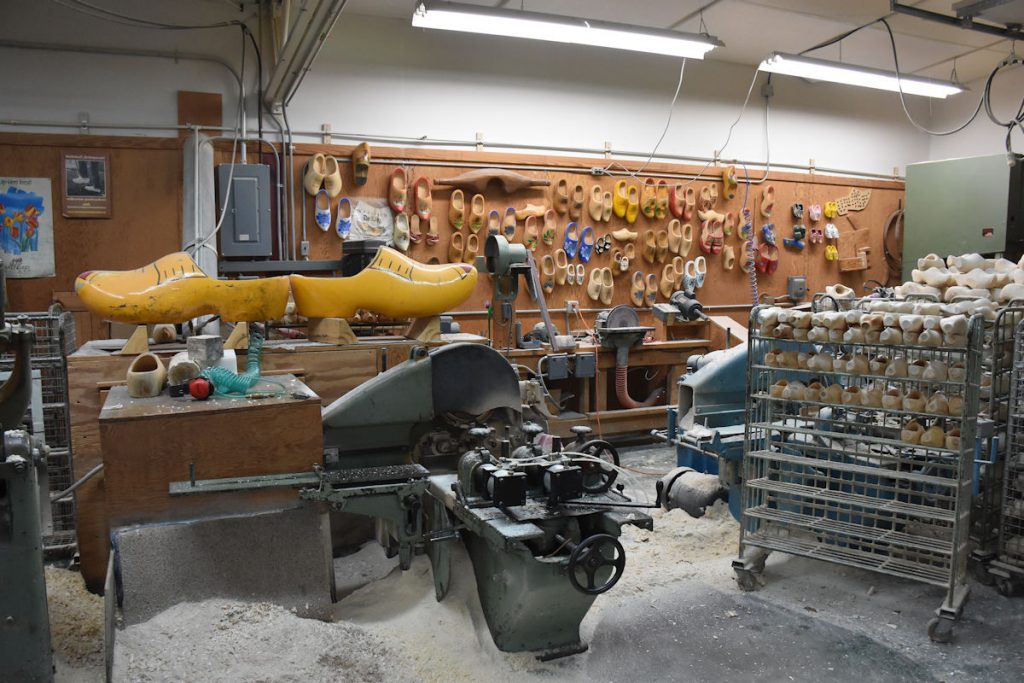
After a wonderful day of seeing more tulips than we had seen in our lifetimes, we headed up the road an hour to Grand Rapids, Michigan, where we visited the Gerald R. Ford Presidential Library and Museum. It was an interesting visit, and we learned a lot about this interesting man. We have to wonder how different the world might be today if he had not lost the election to Jimmy Carter in 1976. He seemed to be a man of integrity, and did the right thing, regardless of how it affected his popularity.
https://www.fordlibrarymuseum.gov/
After that, we headed back to the hotel to rest up for tomorrow – a big day!
Meijer Gardens and Sculpture Park
Tuesday – May 14
The Frederik Meijer Gardens and Sculpture Park is a 158-acre botanical garden and outdoor sculpture park located in Grand Rapids, Michigan. It is becoming one of the most significant sculpture experiences in the midwest and in 2005, The Wall Street Journal wrote that there is nothing quite like it this side of the Kroller-Muller Museum and Sculpture Park in the Netherlands. It is listed as one of the “30 Must-See Museums” in the world.
It was created through the generosity and planning of Fred and Lena Meijer, founders of the Meijer grocery store chain in the Midwest.
(By the way, they are not related to, or connected to, the Fred Meyer chain of stores nationwide.)
The signature distinction of the gardens is to equally emphasize sculpture and horticulture, in satisfaction of Fred Meijer’s objective of uniting human visual fine art with the visual beauty of nature.
It is presently the second-most popular cultural site in Michigan, having 600,000 visitors annually. It contains the largest tropical conservatory in Michigan, three indoor thematic gardens, an 8-acre Japanese Garden, various trails and boardwalks, and more.
Learn more about Meijer Gardens and Sculpture Park: https://www.meijergardens.org/discover/
( Notes below for individual sculptures with * are copied from the Meijer Gardens website)
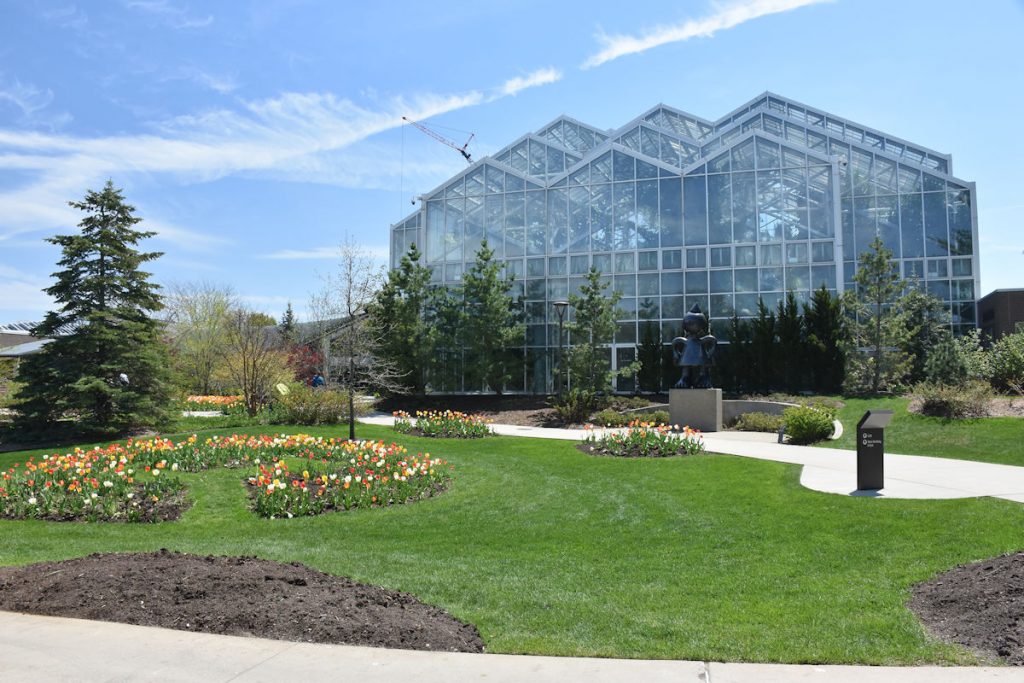
On the opposite side of the building, construction crews are working on expanding the park.

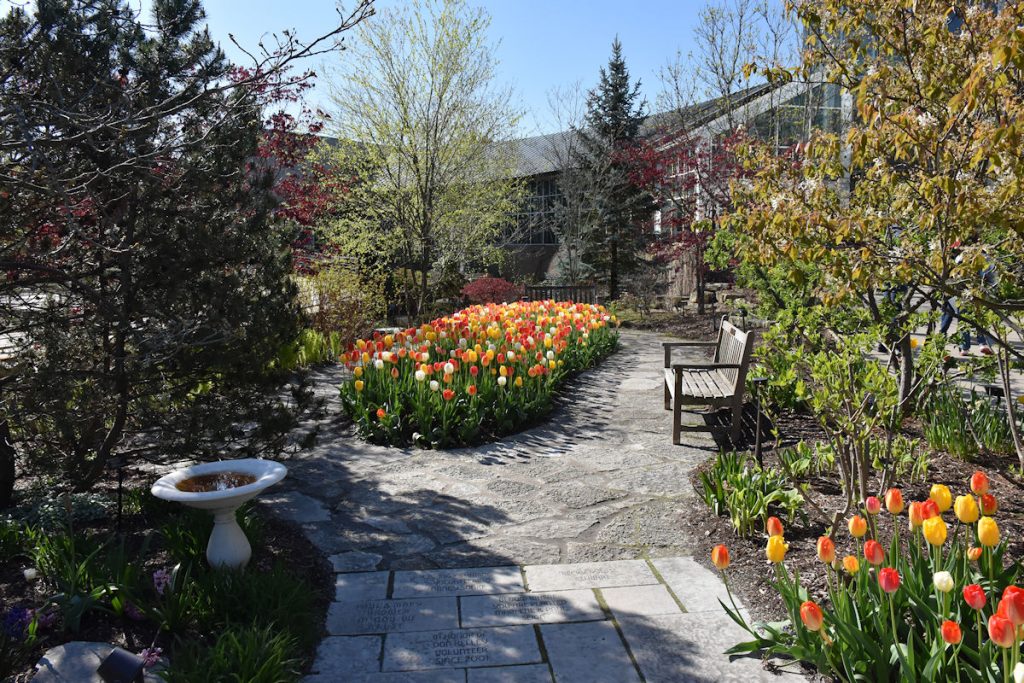
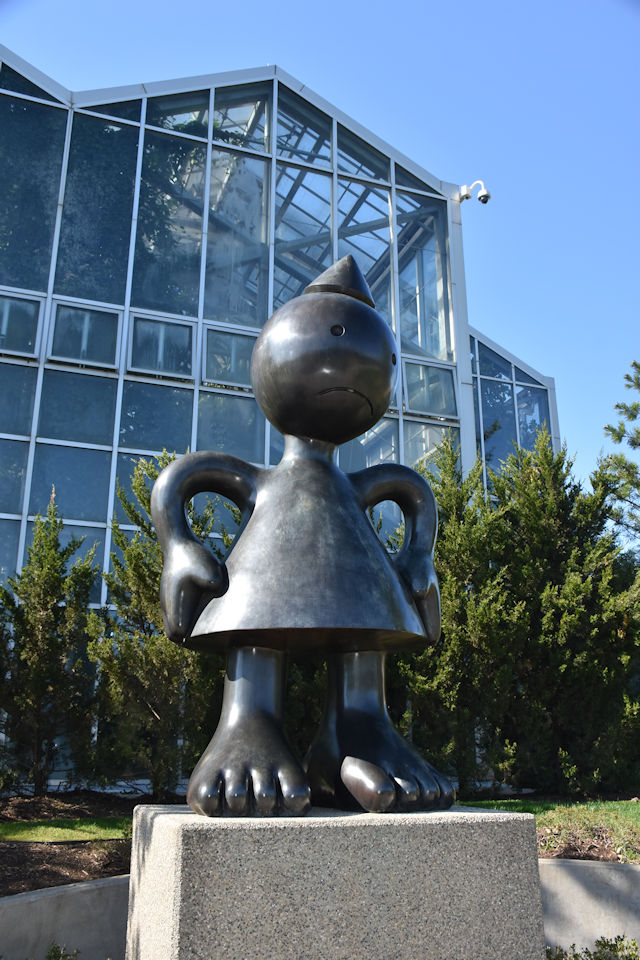
one of over 200 statues in the gardens.
Funny because there were several busloads of kids visiting the park today.
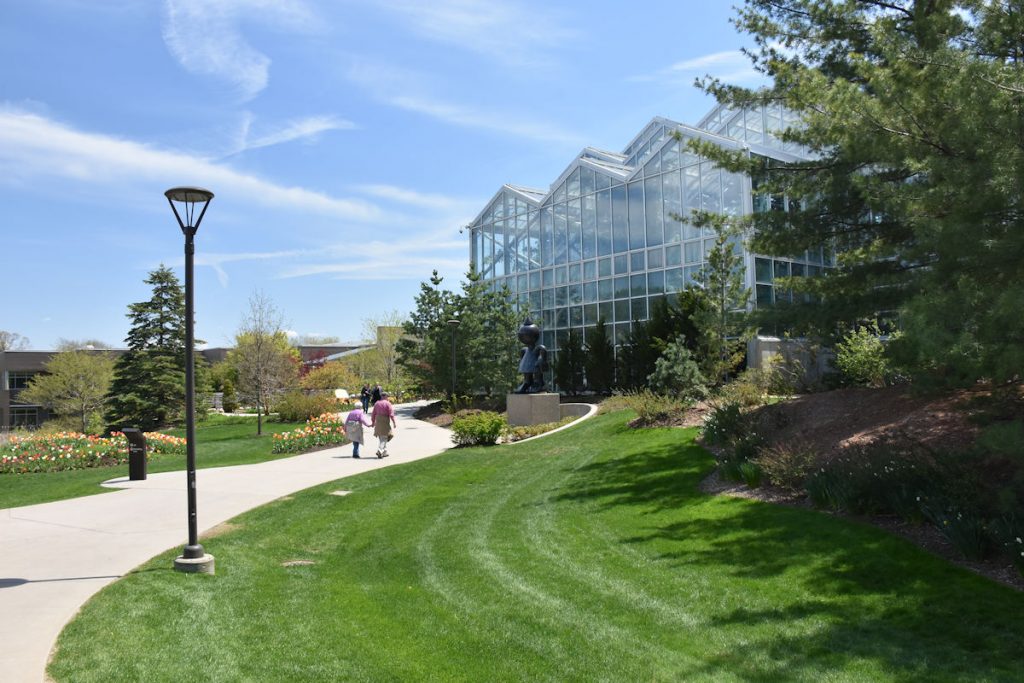
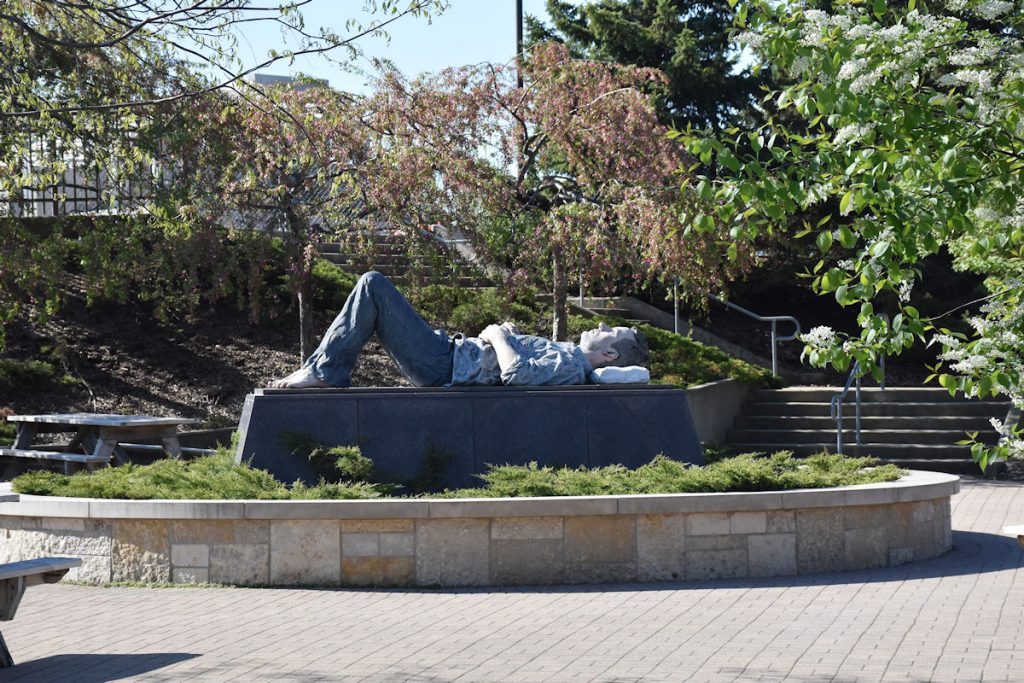
One of the most inventive figurative sculptors working today, Sean Henry’s interests lie in presenting subjects that, although individualized, speak to the universality of the human experience. He works from life creating highly detailed imagery of individuals in contemporary dress, but always manipulates scale so that figures are either much larger or smaller than life-size. Initially, he works through drawings and clay master models that are then meticulously translated into bronze. *
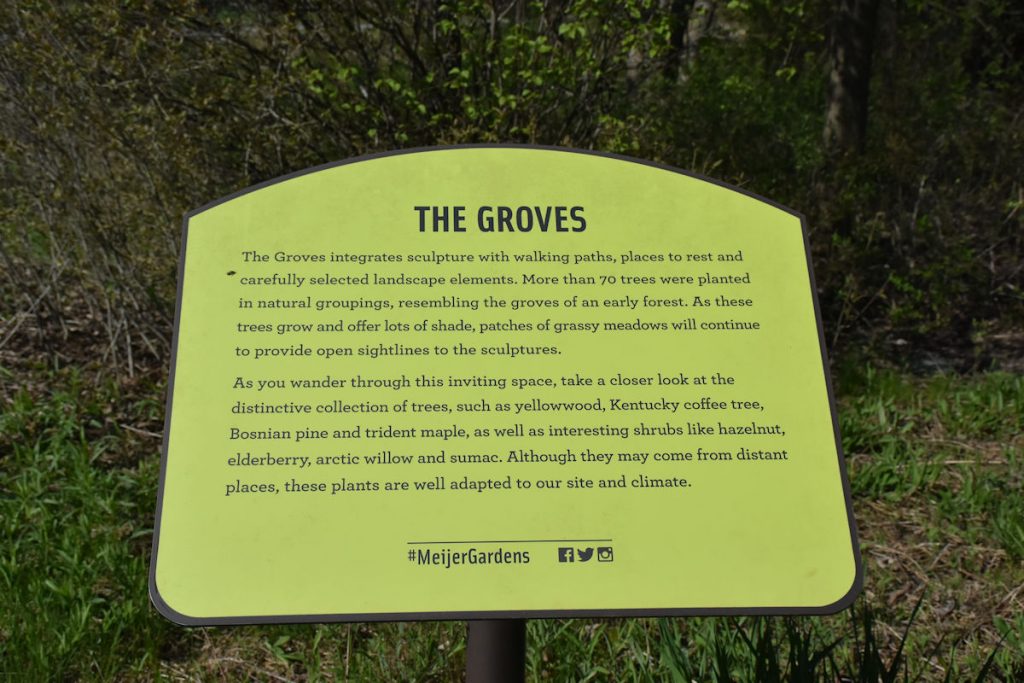

Roxy Paine is one of the most highly regarded Contemporary sculptors. Neuron reflects ideas about nature, industry, and artistic processes. It is one of Paine’s most inventive forms, extending out from a central mass. It derives from his critically acclaimed Dendroidseries which closely follow the shape and form of trees. Neuron goes beyond this tradition and simultaneously calls to mind a neuron and elevated root ball. *
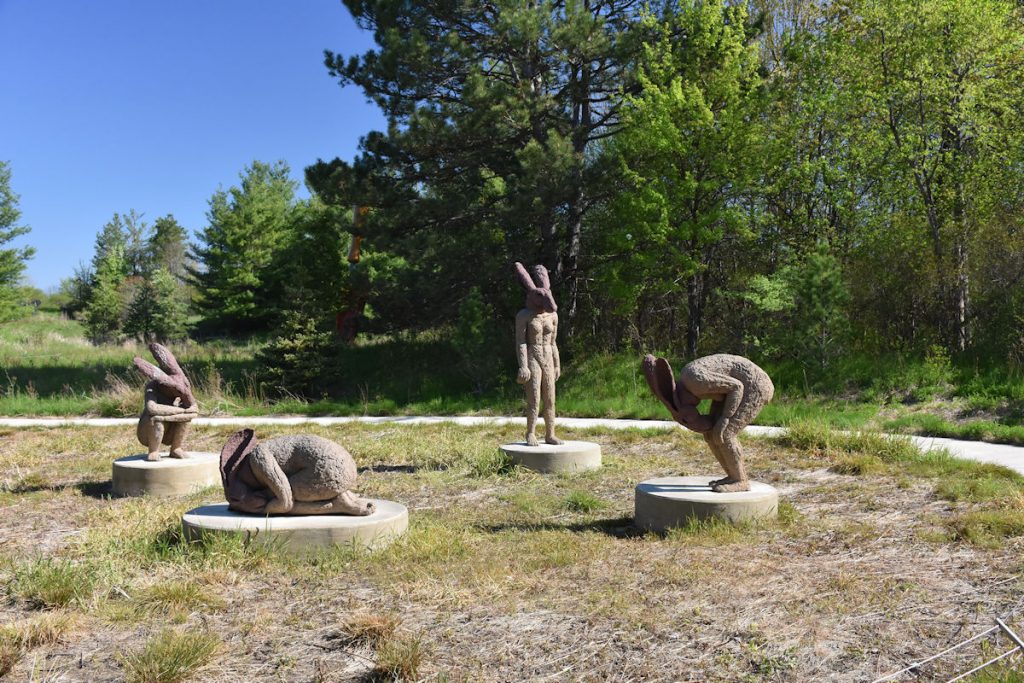
Sophie Ryder is a figurative artist who focuses on animal imagery, in particular hares, dogs, and minotaurs, to comment on universal human emotions and relationships. She creates drawings, bronze sculptures, collages, and prints, but is best known for her wire drawings and sculptures. Wire, which adds a heavy textured surface to the sculptures, is not suitable for outdoors, so some of the pieces are cast in bronze. This piece was created in response to the tragedy of 9/11 and the way in which many mourn. *
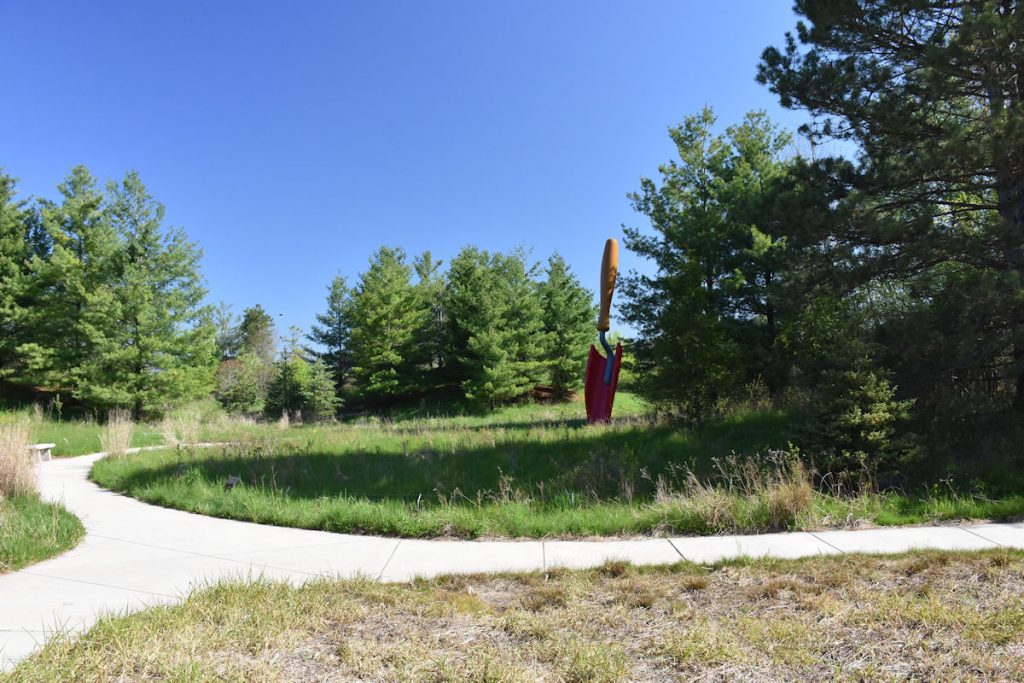
Over 22 feet tall. Appropriate statue subject for a garden.
Claes Oldenburg gained initial acclaim as one of the leaders of the Pop Art movement recreating ordinary objects from consumer or popular culture. Beginning in the late 1970s, he began to work with Coose van Bruggen as a husband and wife team on a series of large-scale public projects. The couple is celebrated internationally for the transformation of objects from everyday life into colossal projects. Plantoiris the first monumental sculpture created specifically for a garden context. It was cited specifically by the artist. *
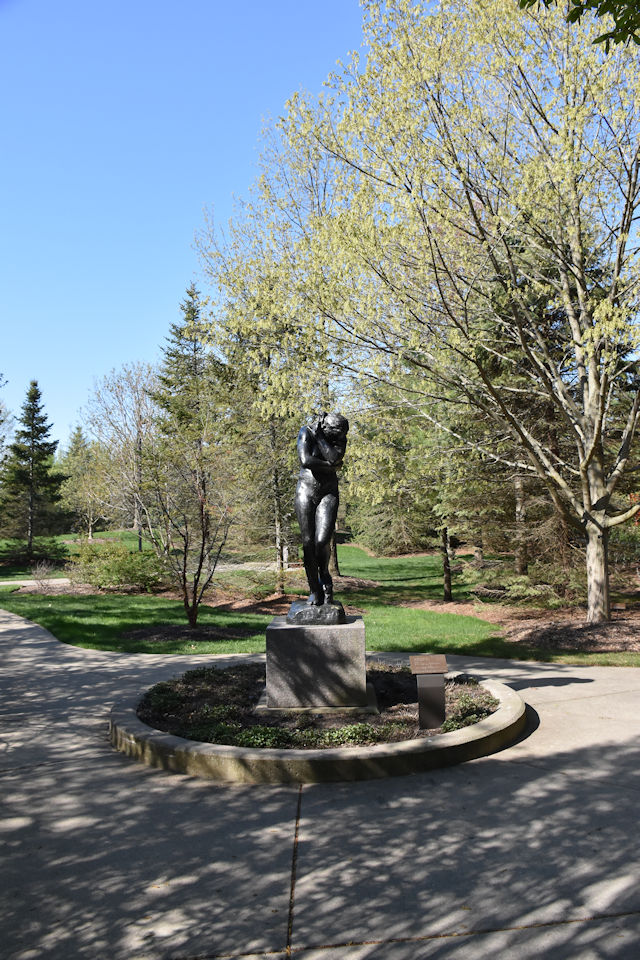
Originally created in association with his famed Gates of Hell for the never completed museum of decorative arts in Paris, Eve became one of the artist’s most celebrated descriptions of the female figure. Standing awkwardly in an attempt to cover her body, the figure distorts the classical “controposto” or “weight shift” position. Additionally, Rodin has forsaken the traditional smooth surfaces and rounded contours apparent in figurative sculpture since the Renaissance in favor of something highly textured and emotive. This is one of twelve known full-scale casts of Eve. *
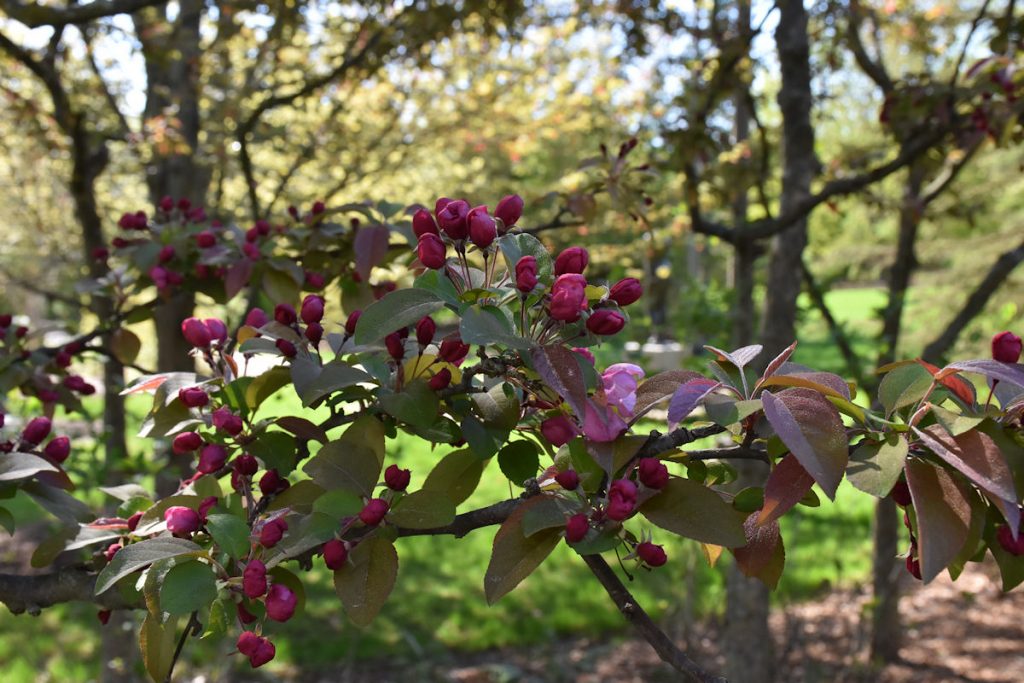
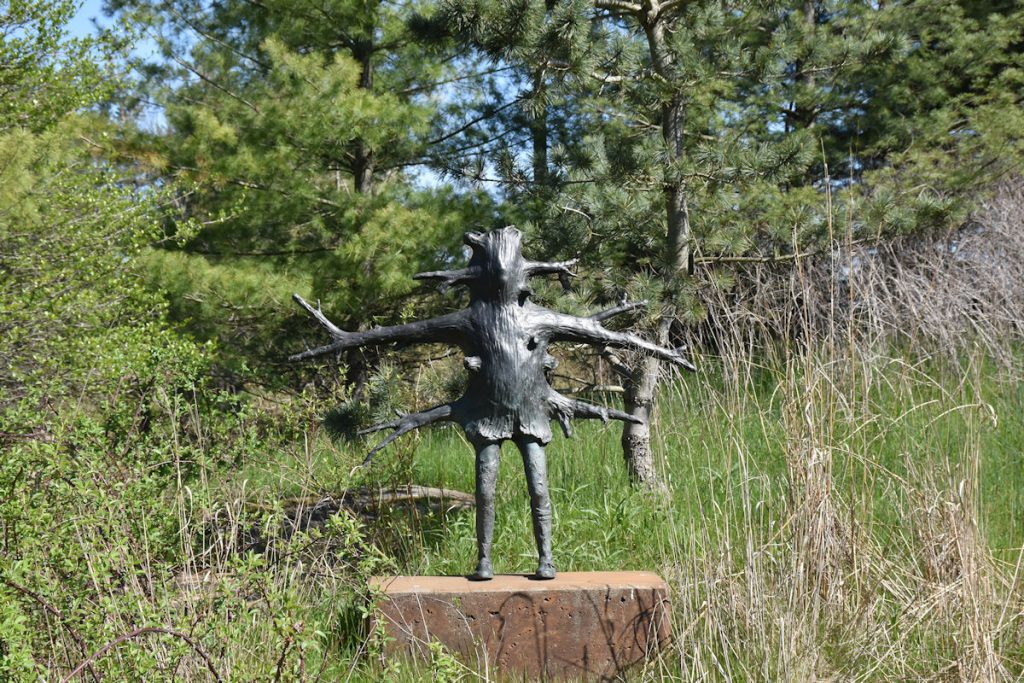
Laura Ford is a Welsh artist who creates psychologically intriguing and narrative works. In Espaliered Girl, Ford blends references to the natural world and children. Espaliered is a French term that refers to both a plant grown in a pattern and to the vertical support. Espalier involves forcing branches to grow in the direction you want. This sculpture combines the desire that many children have to be noticed with the desire to be hidden or disguised. *
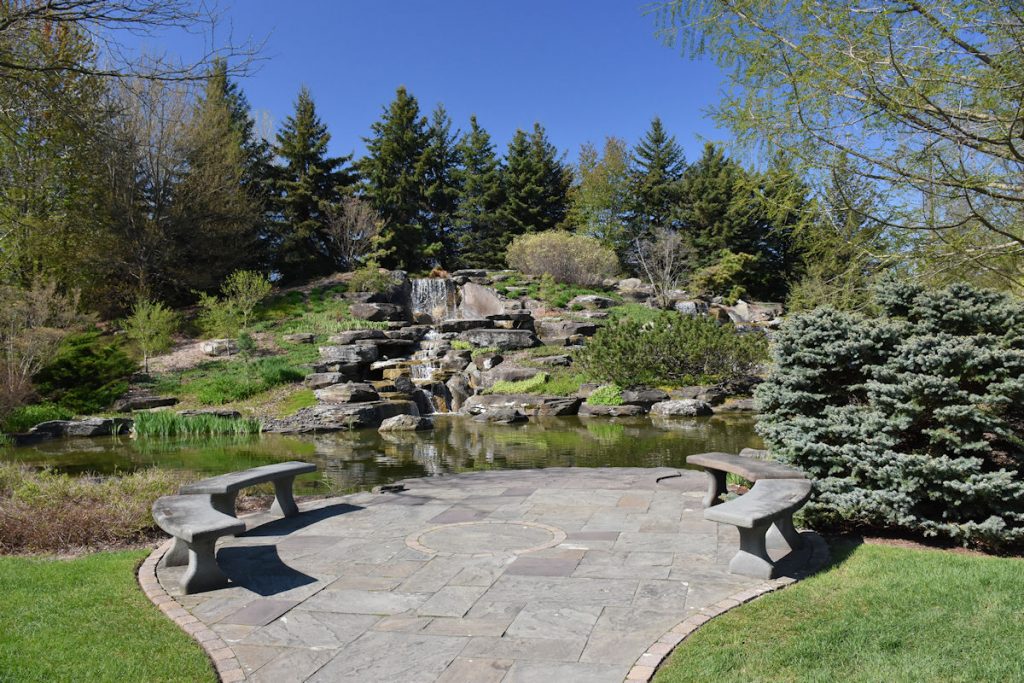
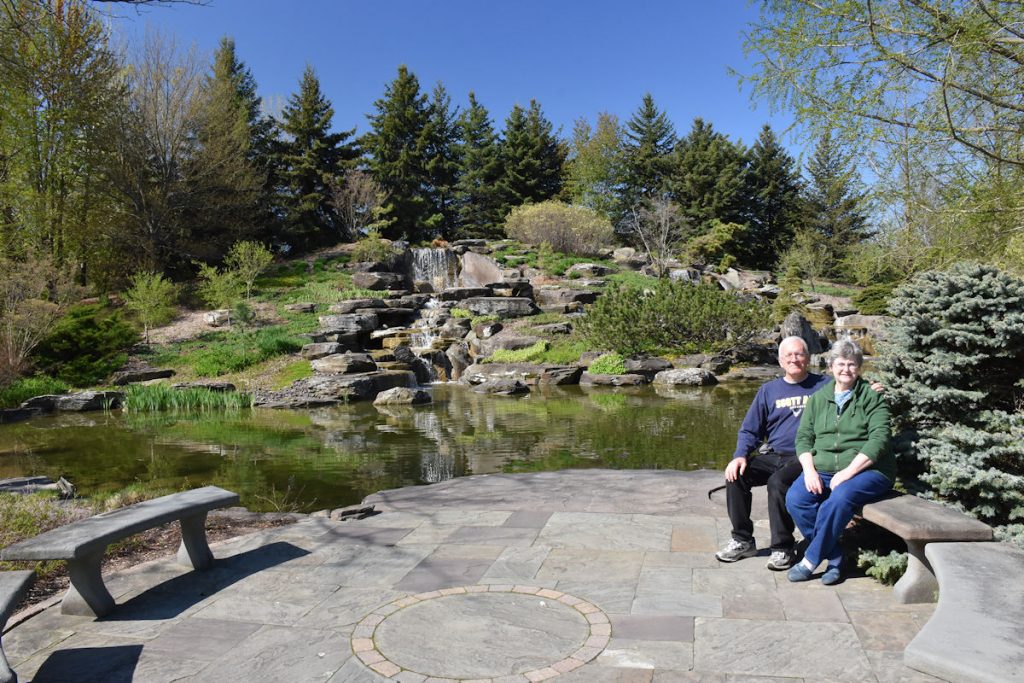
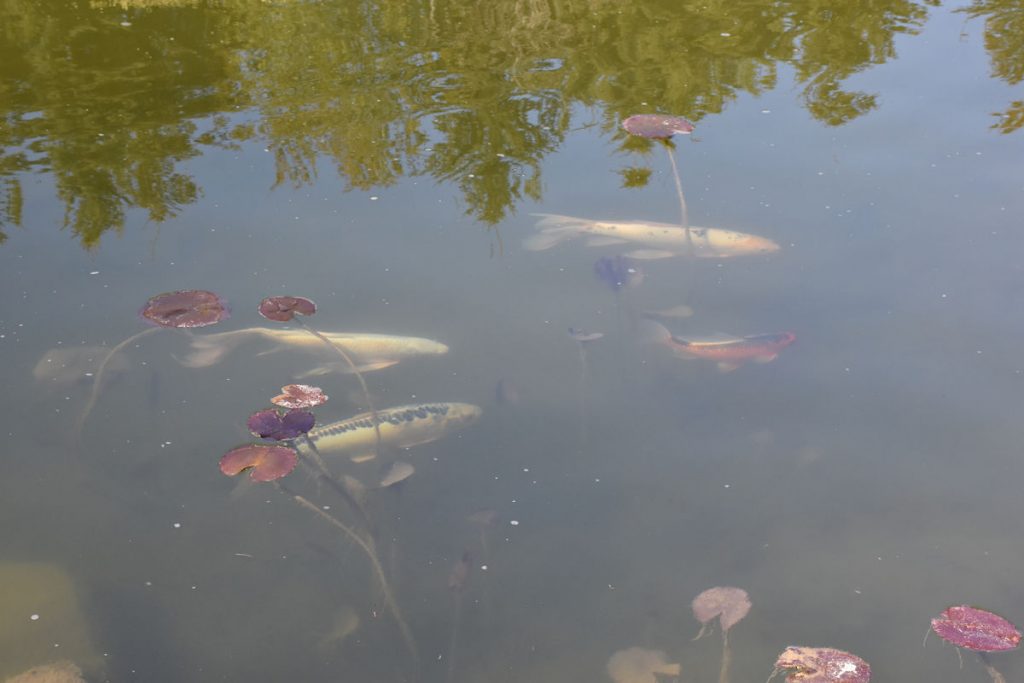
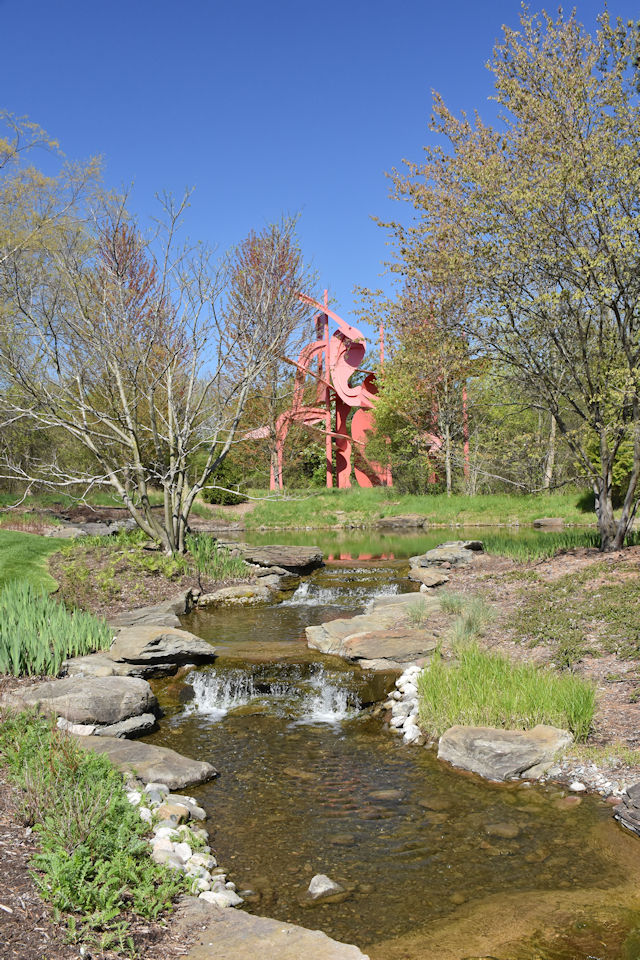
Concurrent with a distinguished career in publishing, Alexander Liberman was actively engaged as an artist, finding critical and popular acclaim for his paintings, photographs, and sculptures. Standing more than 42 feet tall, enabling viewers to walk around and through the work, Aria clearly references the artist’s admiration for architecture. An “aria” is an elaborate melody sung by one voice. The organic shaped elements of Aria seem to suggest music notes, while linear elements seem to reference a music staff or interlocking sounds, with red color unifying the composition. *

A desert rose is a naturally occurring stone formation and the inspiration for this piece. Italian-born Arnaldo Pomodoro began his career creating theater sets, costumes, and jewelry before turning to large scale sculpture. Disk In The Form Of A Desert Rose reveals the interior as well as the exterior components of polished forms. The meticulous concern for detail, in both form and casting, are hallmark to the artist. *
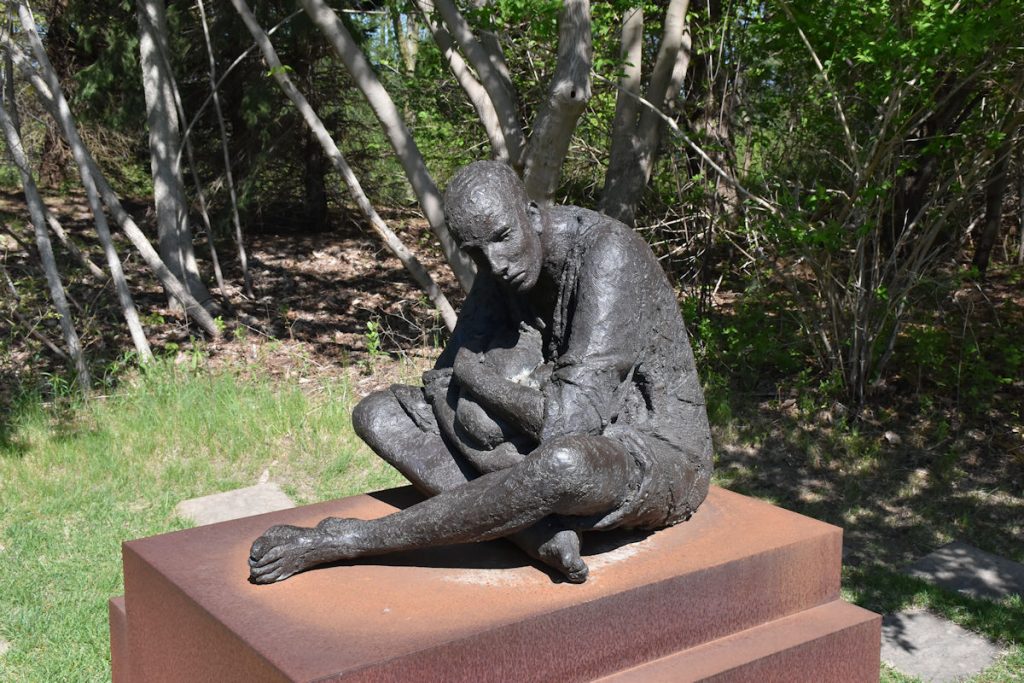
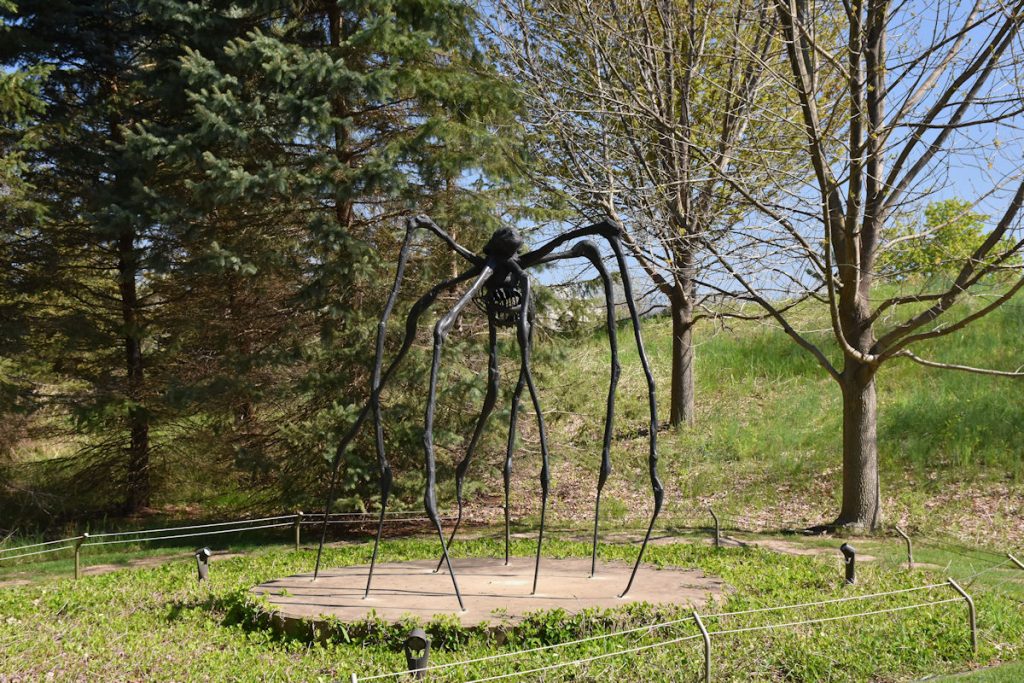
Louise Bourgeois was one of the most intriguing and influential artists in Contemporary Art. Beginning her career as a painter, sculpture and installation work became her focus and strongest legacy. Biography and the relationships among family are frequently addressed in her work and Spider, one of her most iconic themes, is no exception. In tribute to her mother who made a living repairing ancient tapestries, Bourgeois portrays spiders as clever, dainty and protective. The eggs described in the lower portion of the body emphasize the maternal symbolism of the sculpture. *
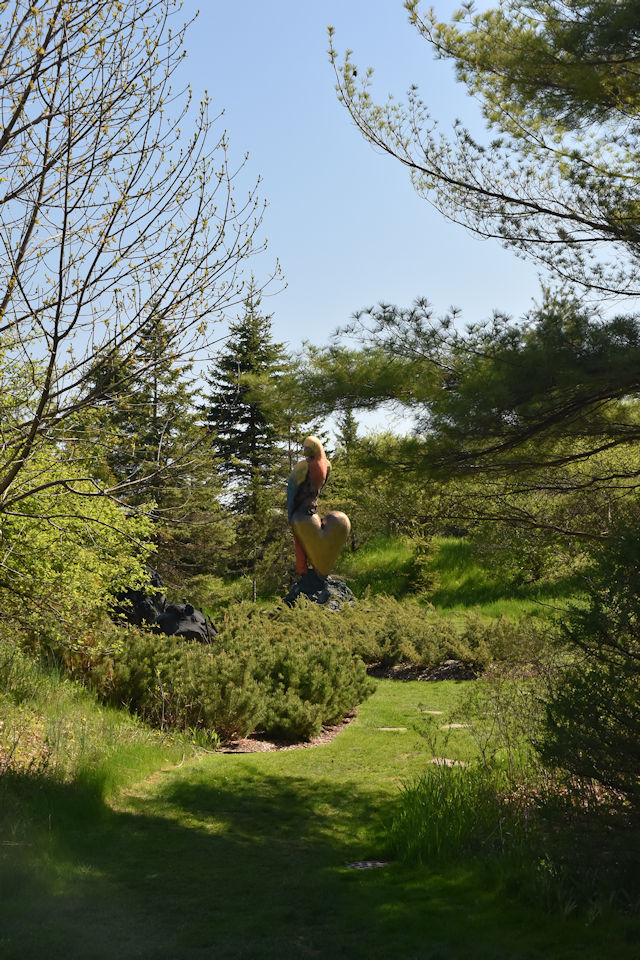
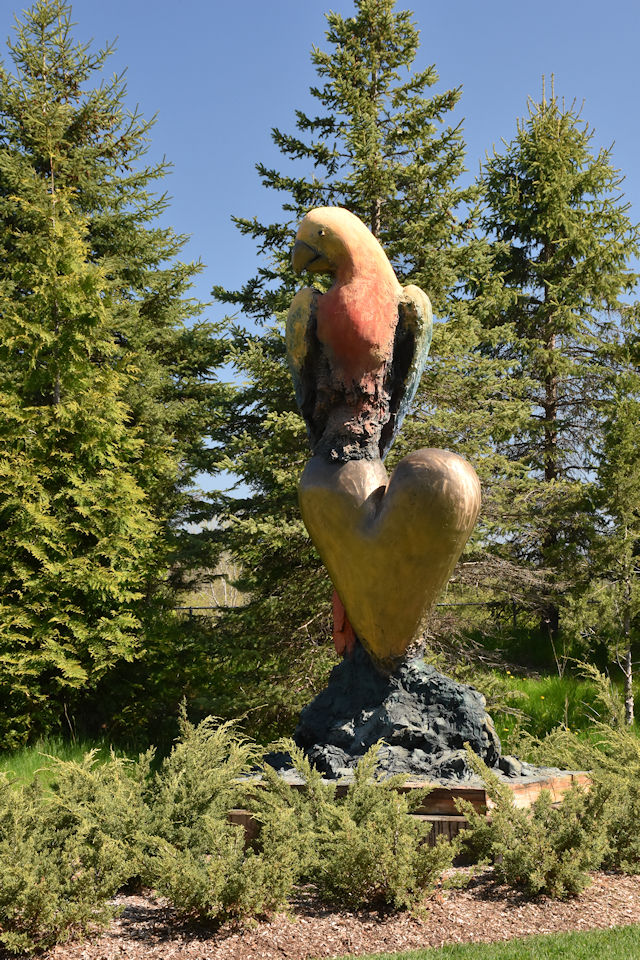
Together with Claes Oldenburg, Andy Warhol, and Roy Lichtenstein, Dine helped define the Pop Art movement, which transformed the art world with the use of imagery from popular culture. The form of the heart has been a part of Dine’s artistic vocabulary since the mid 1960s and it has appeared prominently in his paintings, drawings, and prints as well as in his sculpture. *
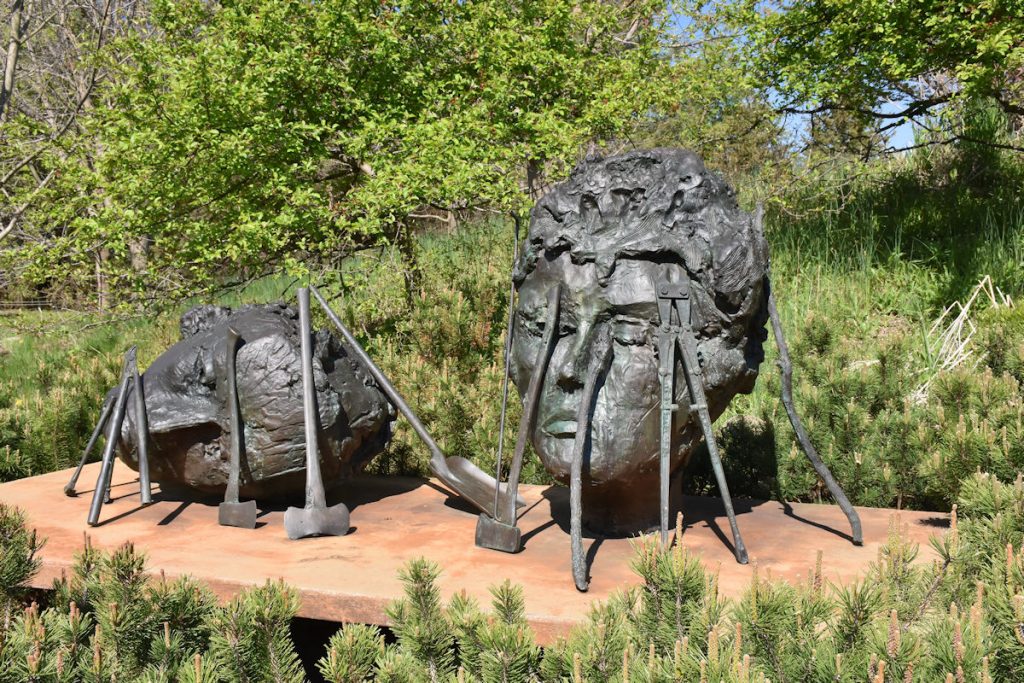
In paintings, prints, and sculpture, Dine frequently uses everyday objects – in this case, tools. For him, they reference work, but also connect with his biography as his grandparents owned a hardware store during his youth. *
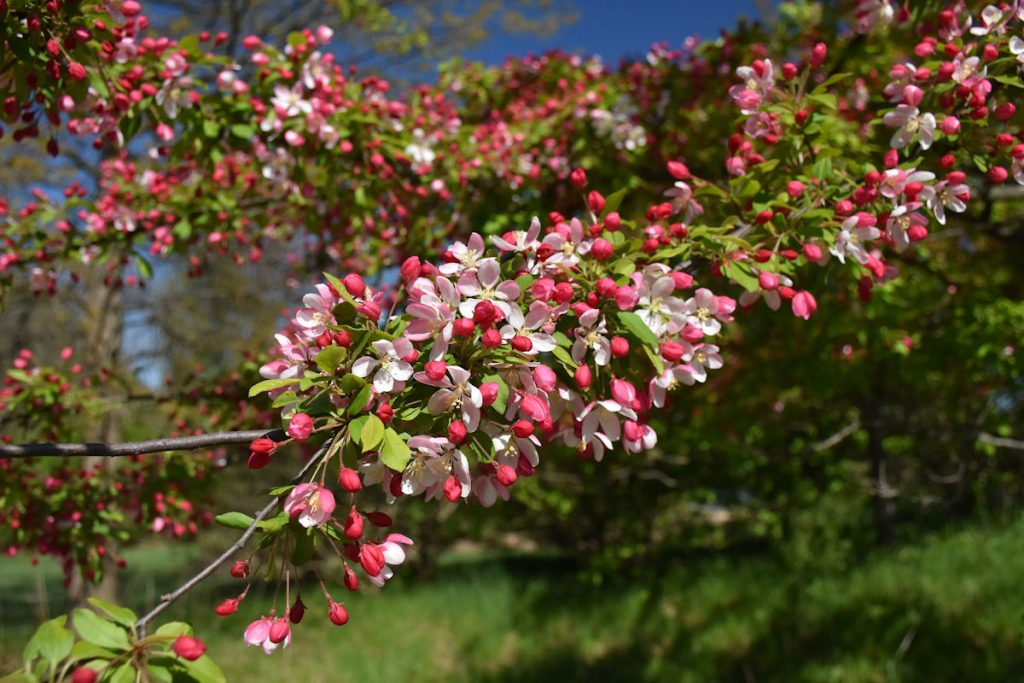
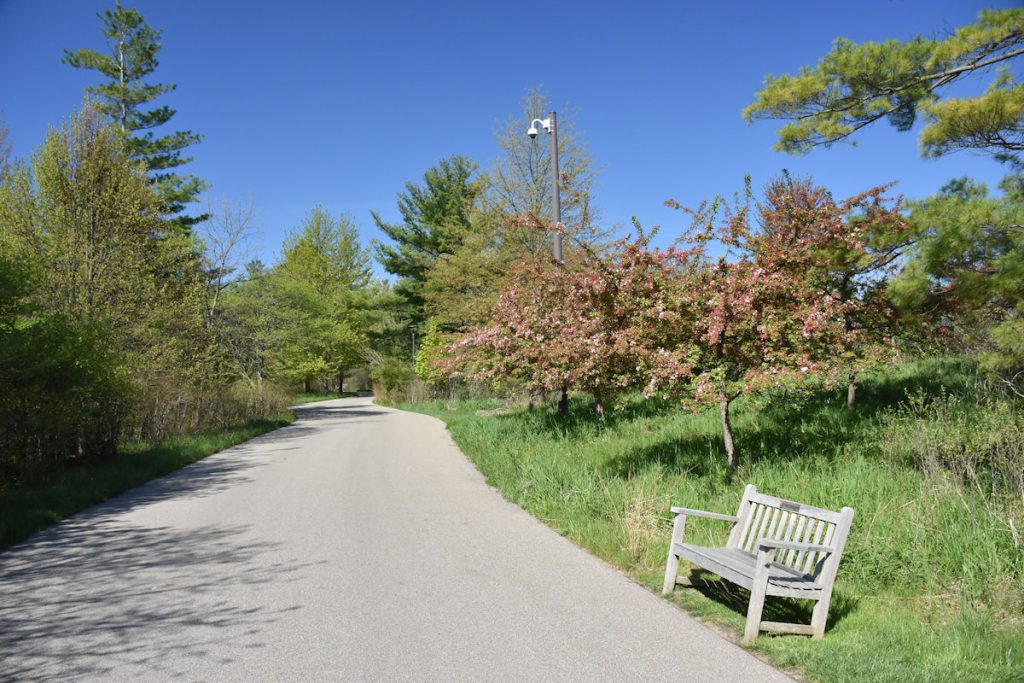
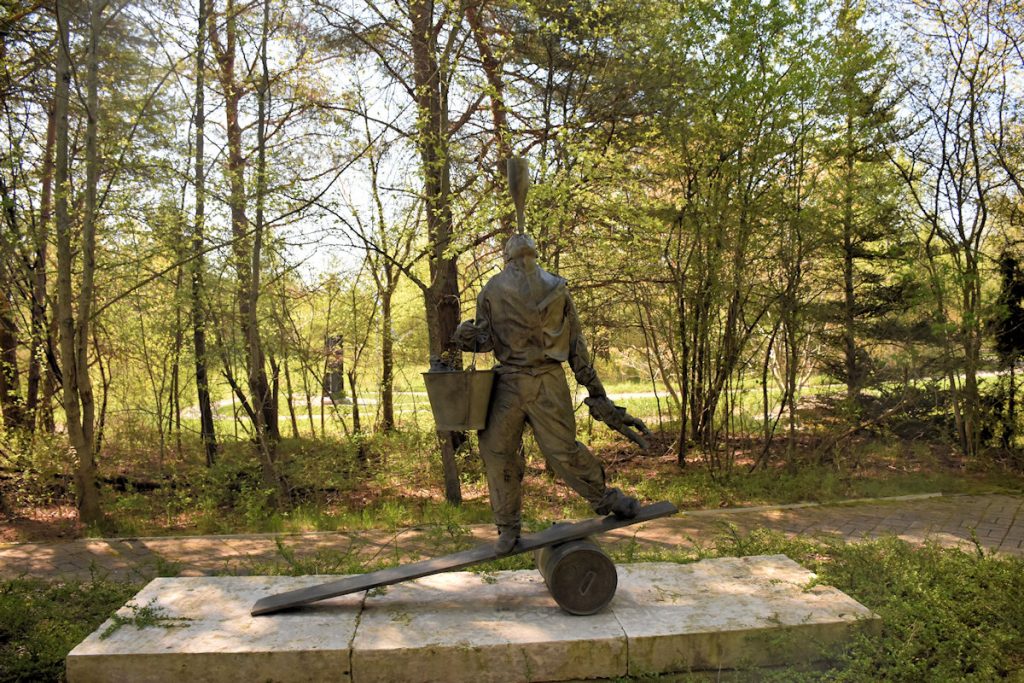
Juan Muñoz was born and raised in Madrid, Spain but went on to study art in London and New York. Before his untimely death, he was an important figure in contemporary sculpture and held exhibits internationally and was collected worldwide. He is known for his unexpected placement of figures which create tension between works and viewer. Muñoz was also a writer and was interested in other creative fields such as music, literature, history, and architecture. *
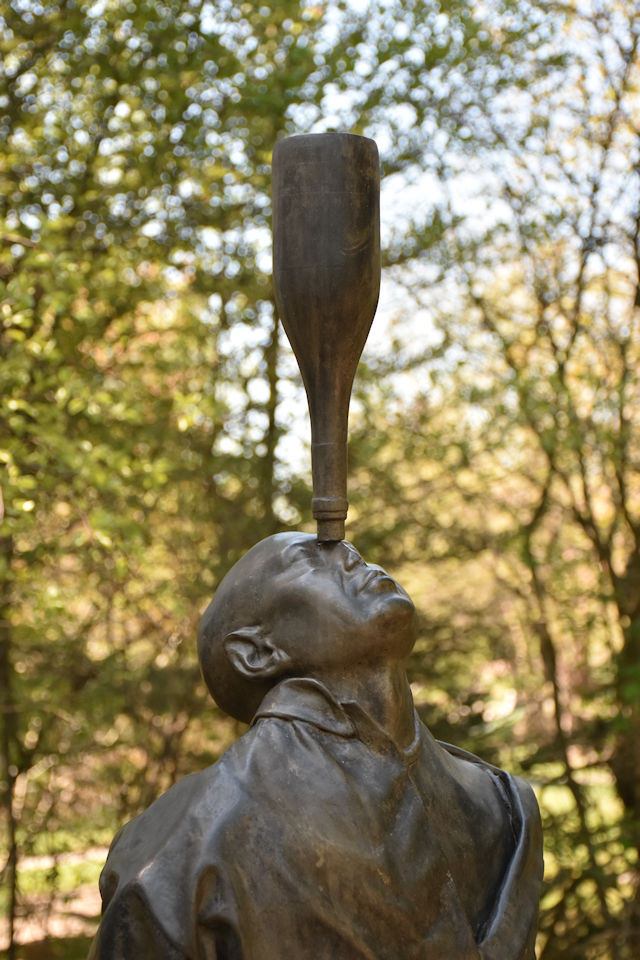
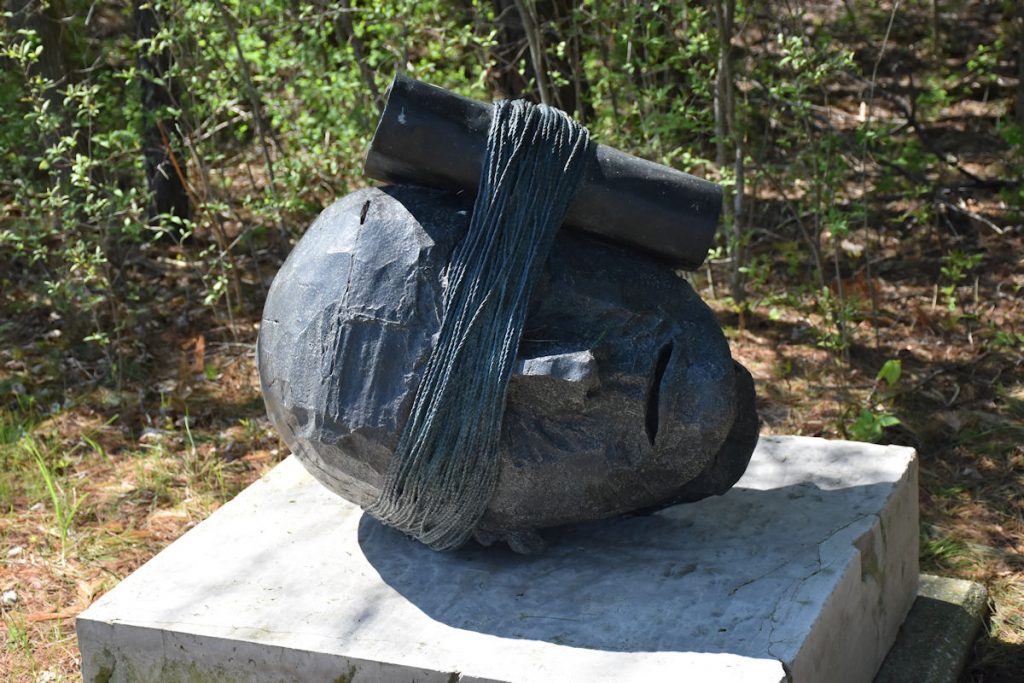
Bill Woodrow is one of the leading British sculptors. He often addresses issues of humor and irony with his work. In his early pieces, he combined found objects to create new meaning. In Listening To History, the placement of the head on the ground with the book tied against it and blinding the eyes suggests many narrative meanings: learning from history, being blind to history, open/closed mindedness, and so on. Note the meticulous concern for detail in this work. *

Dietrich Klinge is a highly respected German artist who received training in drawings, printmaking, and sculpture. Much of Klinge’s early imagery references woodland spirits from tales of German folklore and legends. This sculpture was originally carved in wood and then cast in bronze to preserve the characteristics of the wood. The bold form and textured surface reflect early 20th century expressionism and non-western traditions. *
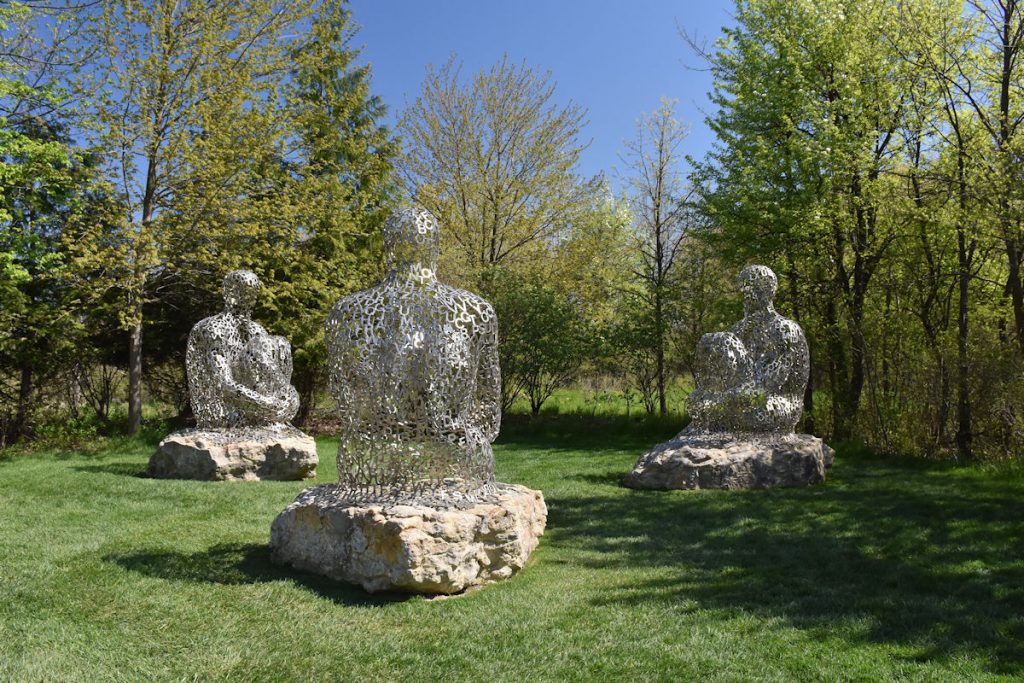
Jaume Plensa is primarily a figurative artist, often using ideas about language and communication in his sculptures and installations. This commission for Meijer Gardens includes a composition of three figures seated on boulders, whose shells are made of stainless steel letters. Faces are left unfinished to encourage the universality of the forms and visitors are encouraged to walk among the sculptures. The composition and setting were selected by the artist and he intends it to represent a kind of ongoing, silent conversation. Although most well-known in the United States for his Crown Fountain in Chicago’s Millennium Park, Plensa is one of the leading international sculptors working today. *
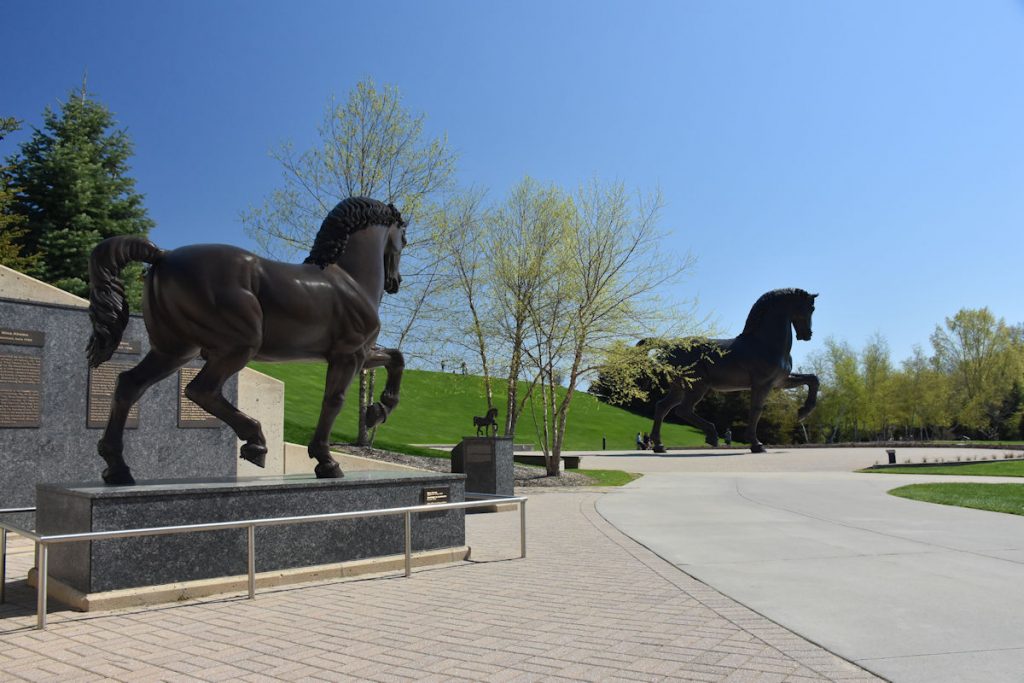
This eight-foot bronze was originally created in plaster by the artist as the master model for the colossal American Horse. At this scale the sculptor was able to address every aspect of the form from the overall shape and stance to the details of mane and tail. Once completed, the plaster figure was first translated to the 24-foot scale of the American Horse and, following, cast into bronze as a permanent work in its own right.
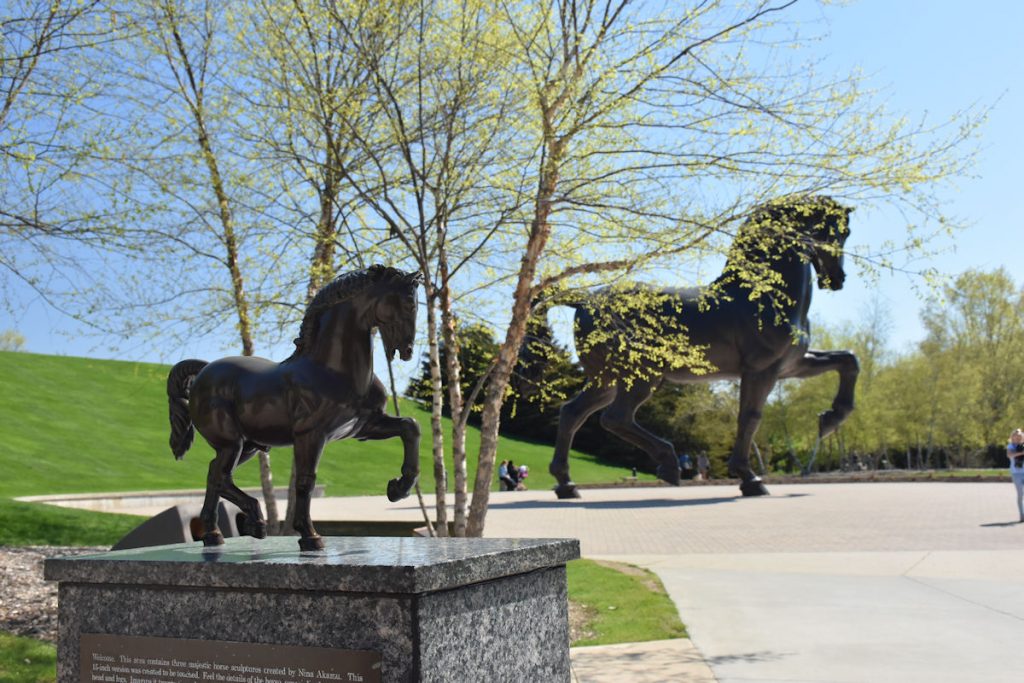
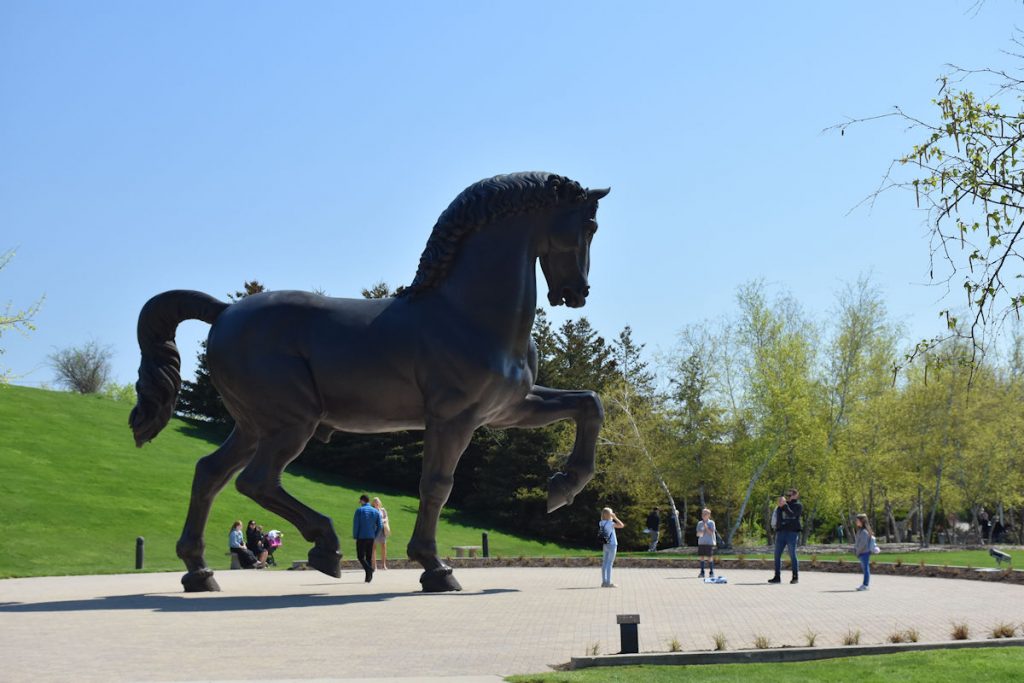
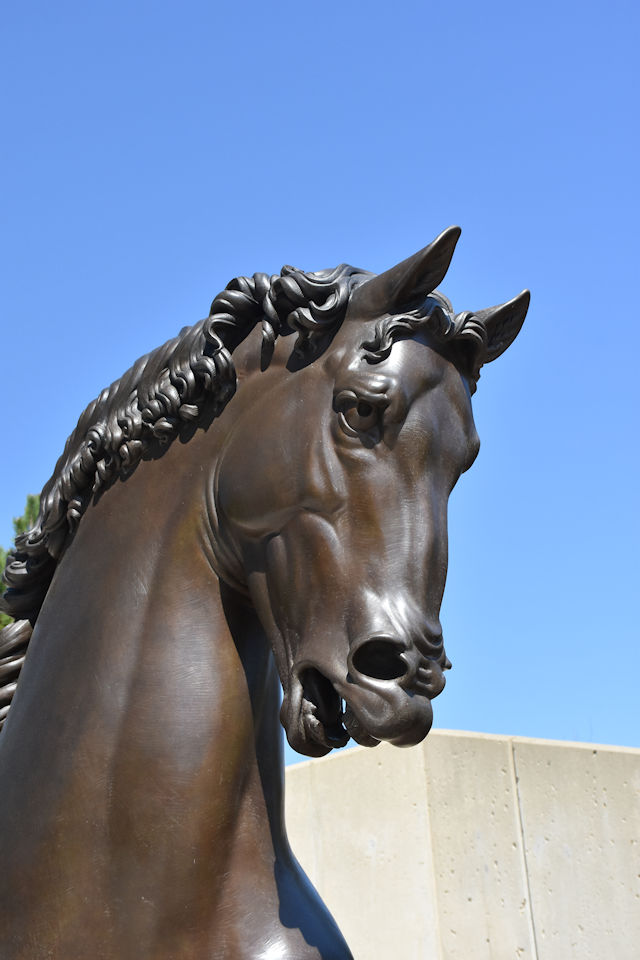
The following four people were instrumental in this display.
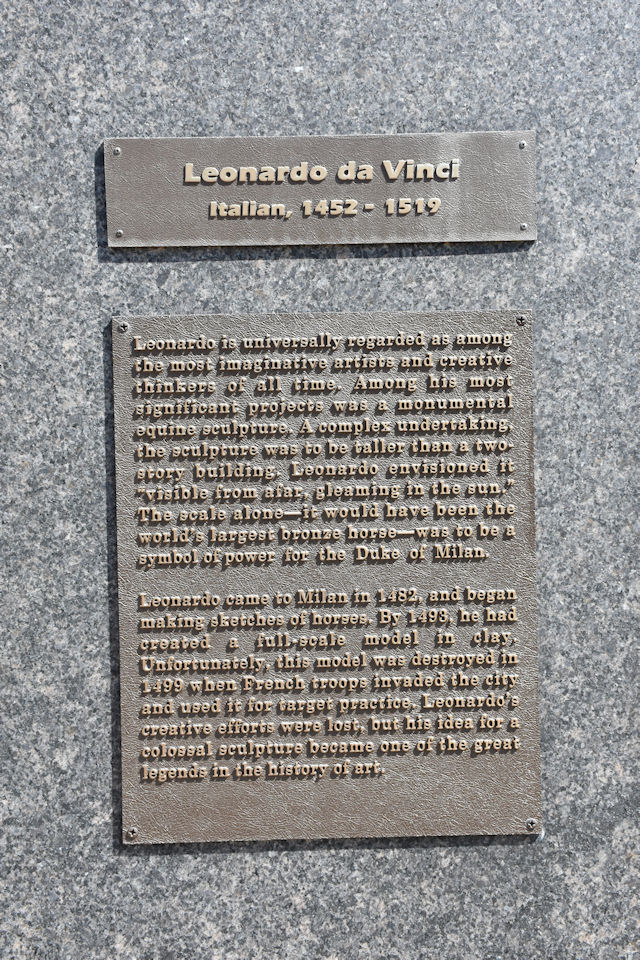
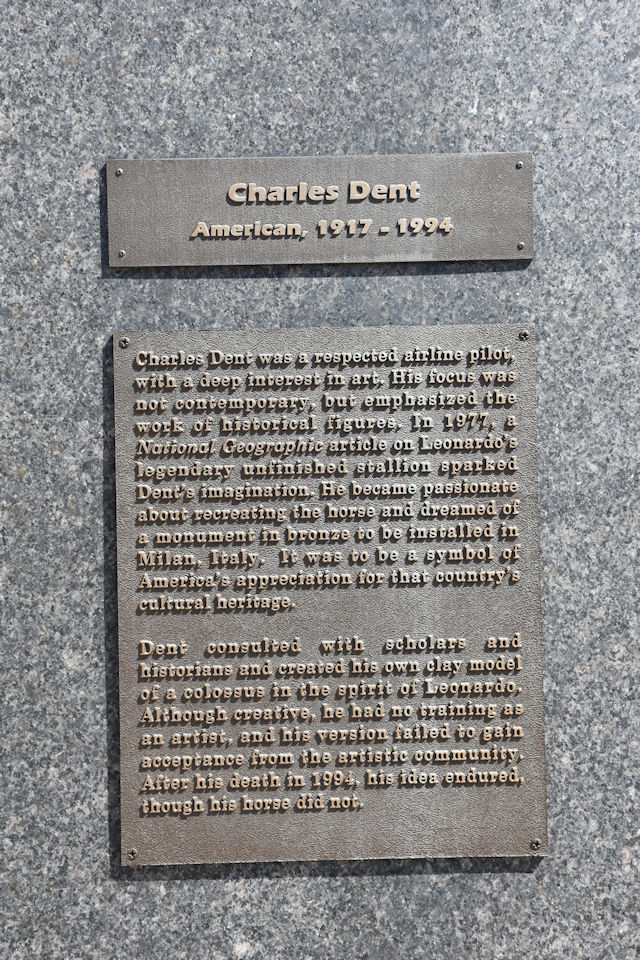

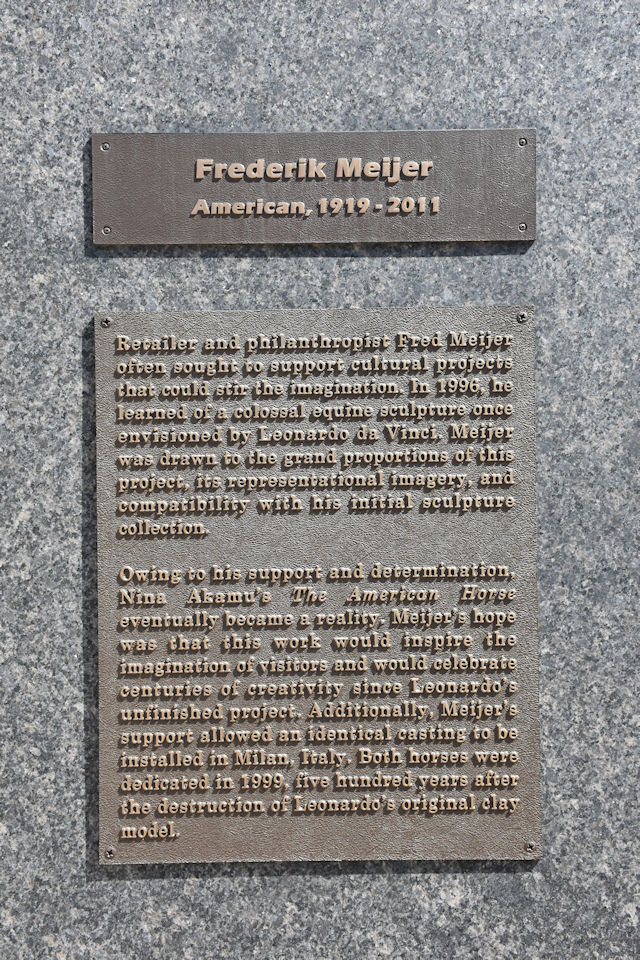
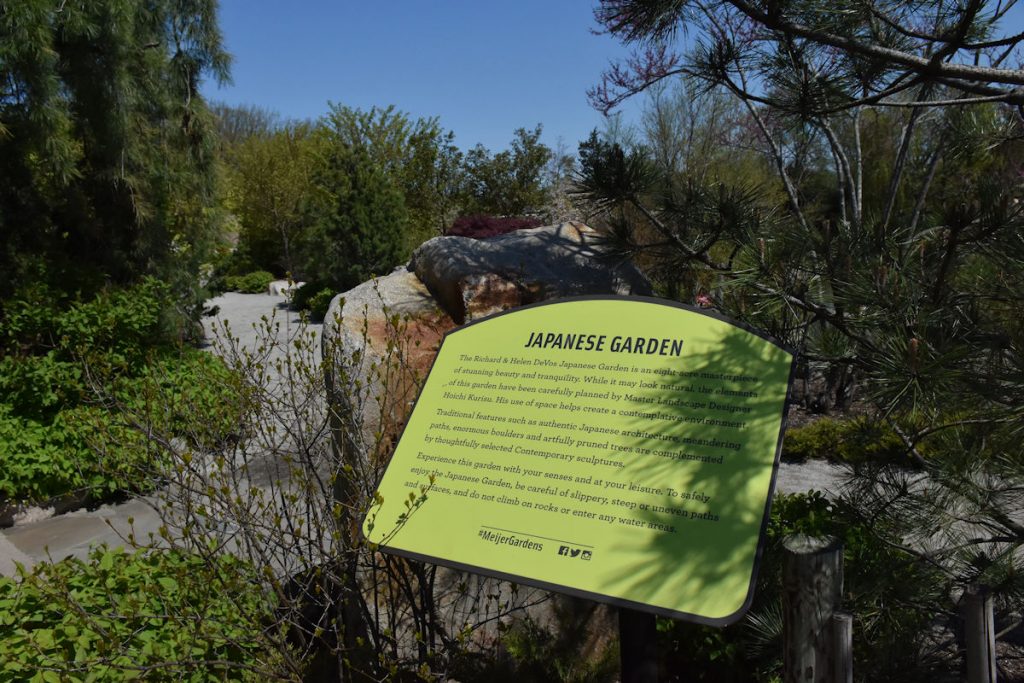
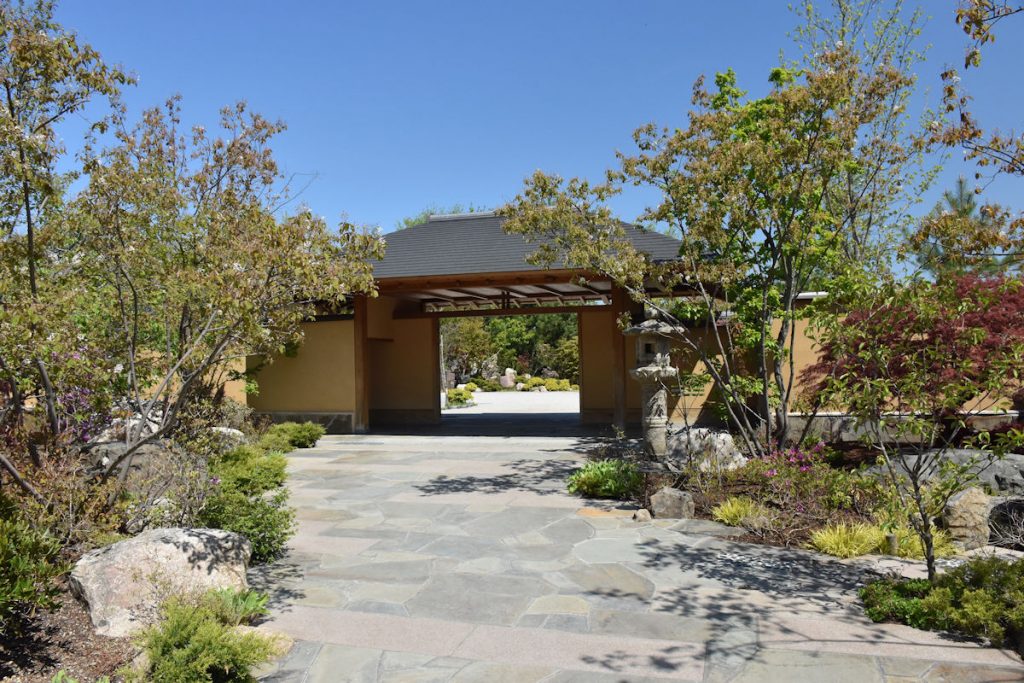


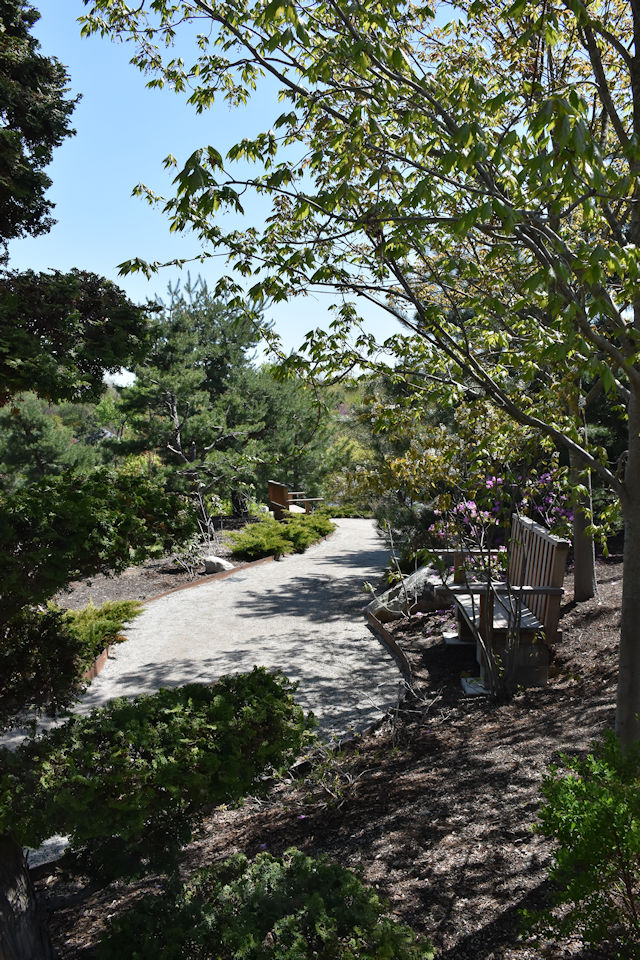

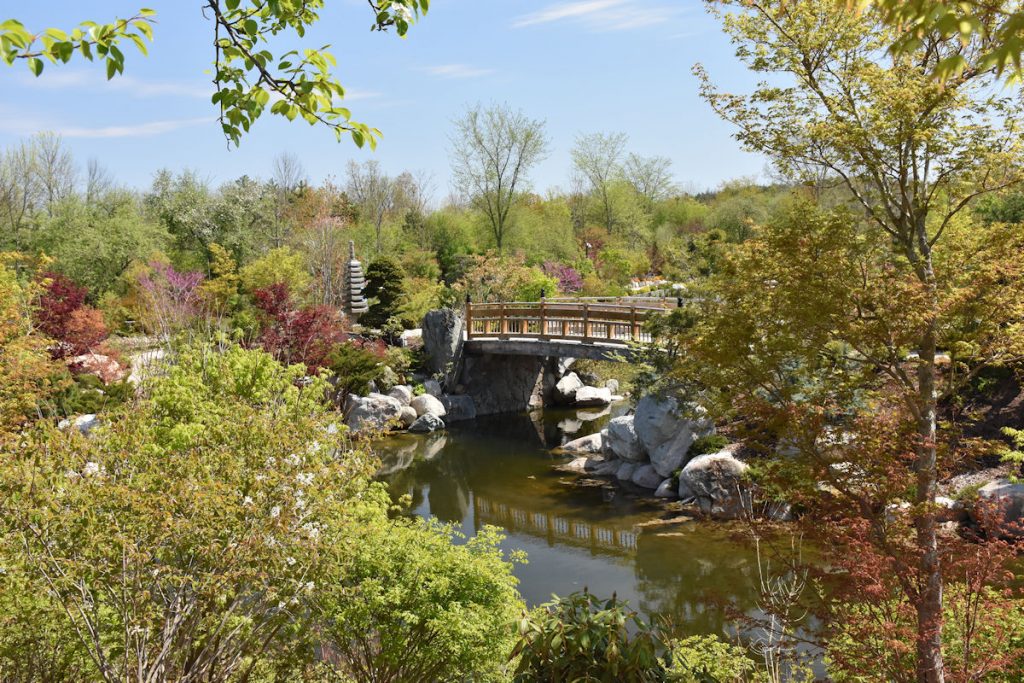
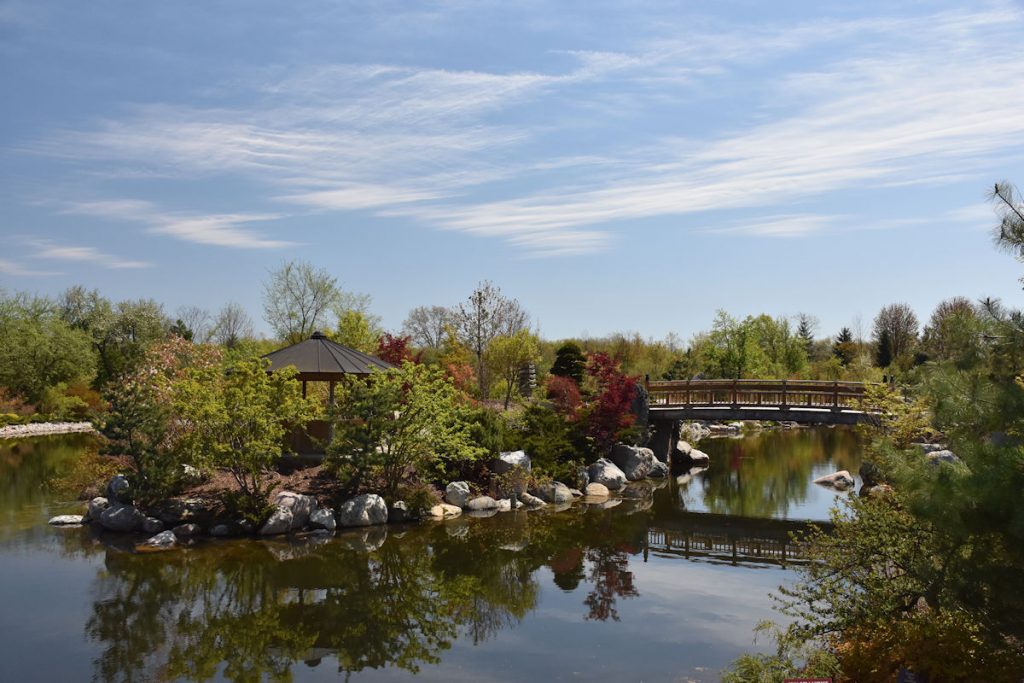
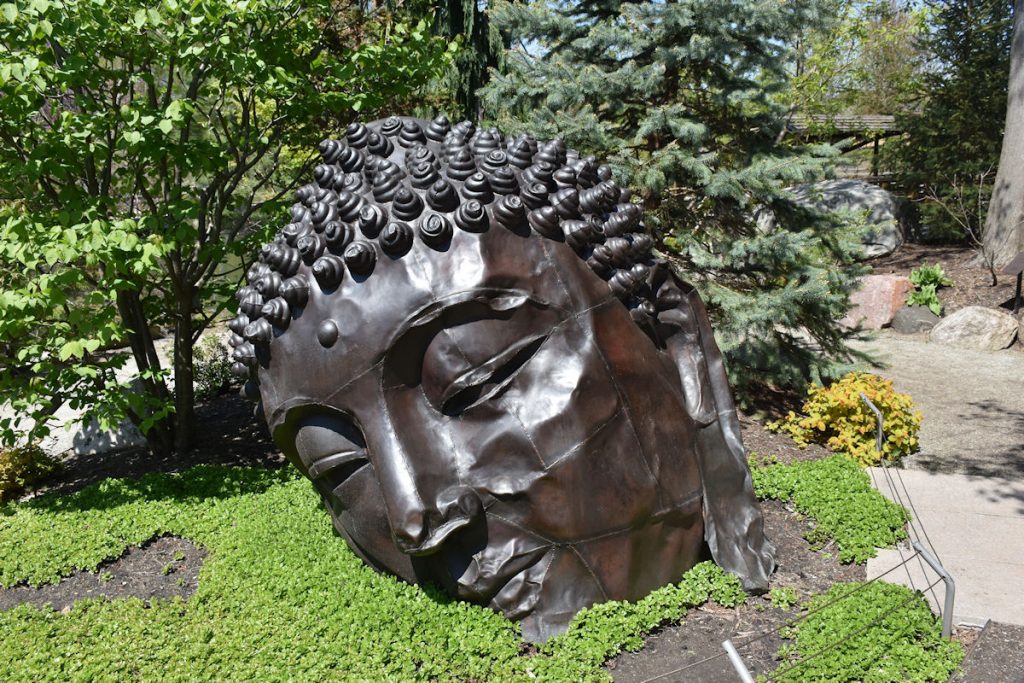
Based in Shanghai, Zhang Huan has captured widespread international acclaim for his performative work, installations, and sculpture. Devoted to both Buddhism and the history of Chinese culture, the artist has created numerous works inspired, directly and indirectly, by images of the Buddha. The large steel and copper sculpture, Long Island Buddha, is not intended as a religious image, but its roughened, fragmented form is intended to reflect on the seemingly endless chapters of human history where human violence often leads to the destruction of culture and its artifacts. *


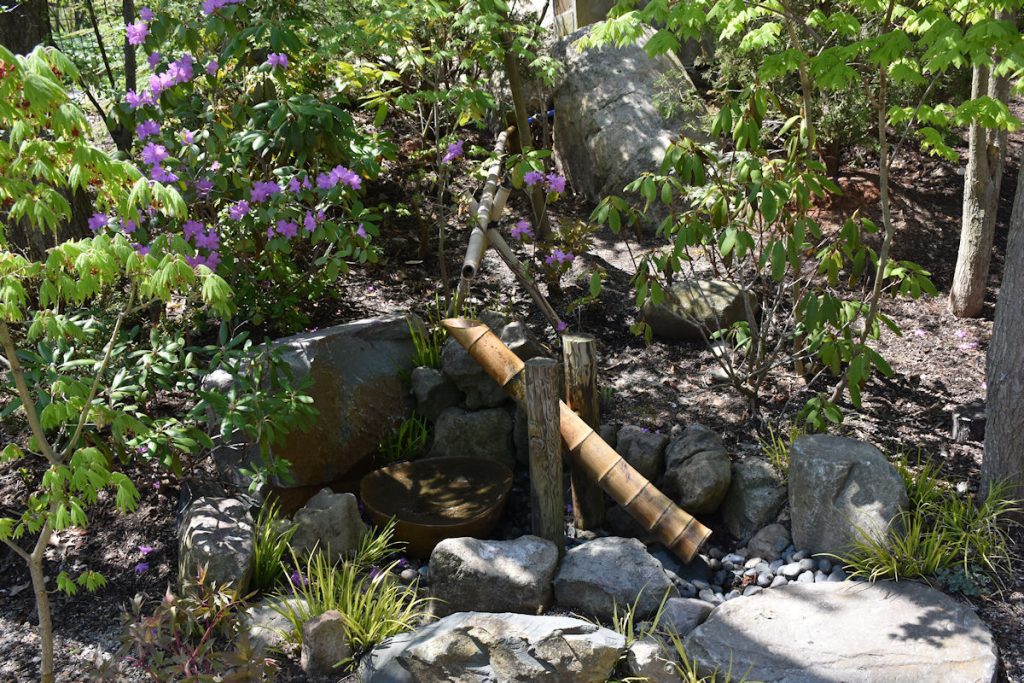
This scares the deer away. Simple, elegant solution.
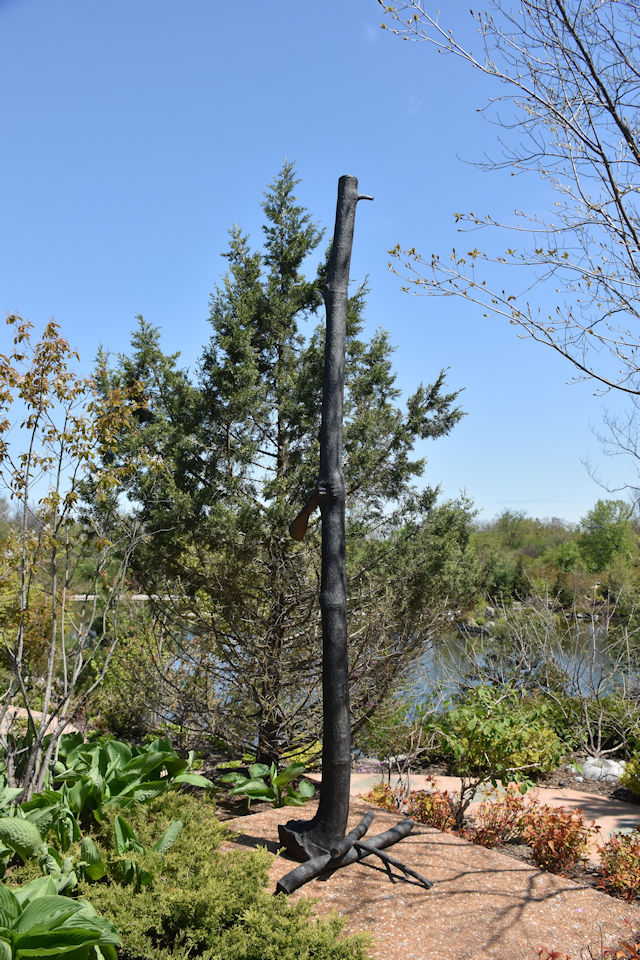
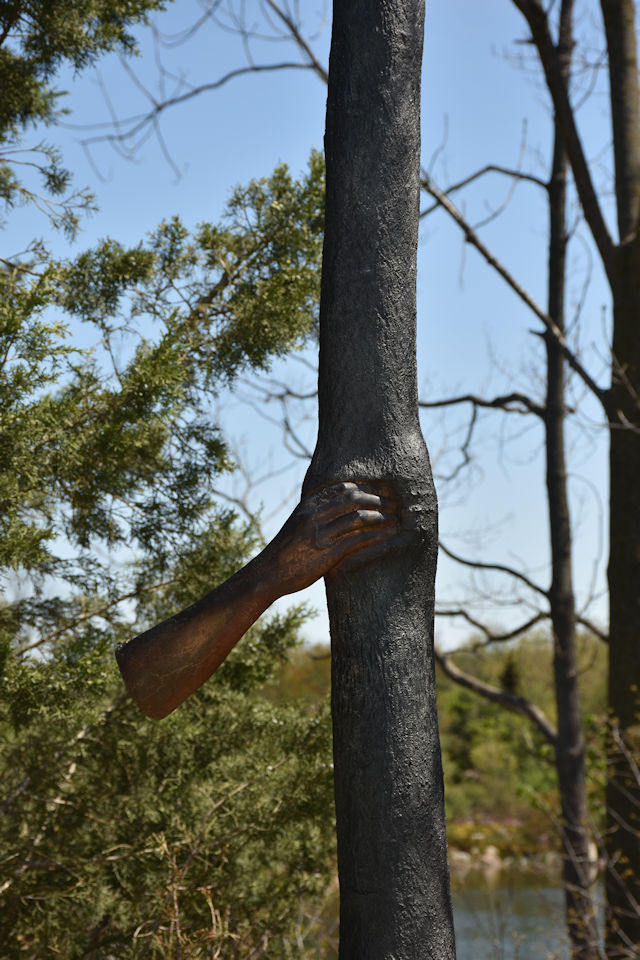
(Left) This one is hard to see, but look about halfway up on the left side. (Right) Close-Up of subject.
“It Will Continue To Grow Except At That Point” – by Giuseppe Penone, 2010. Appx 11 feet tall.
As a member of the “Arte Povere” movement where artists turned to the use of non-traditional, natural materials as the basis of their work, trees and vegetation play an important role in Penone’s sculptures and installations. It Will Continue To Grow Except At That Point is amongst the most iconic of Penone’s broad and diverse repertoire. Based on actual installations and photographs thereof, it discusses the idea of mankind’s relationship with nature. *
Michigan Farm Garden
Next on the Meijer Gardens loop is the Michigan Farm Garden exhibit.
It appears to be modeled after Lena Meijer’s childhood home.
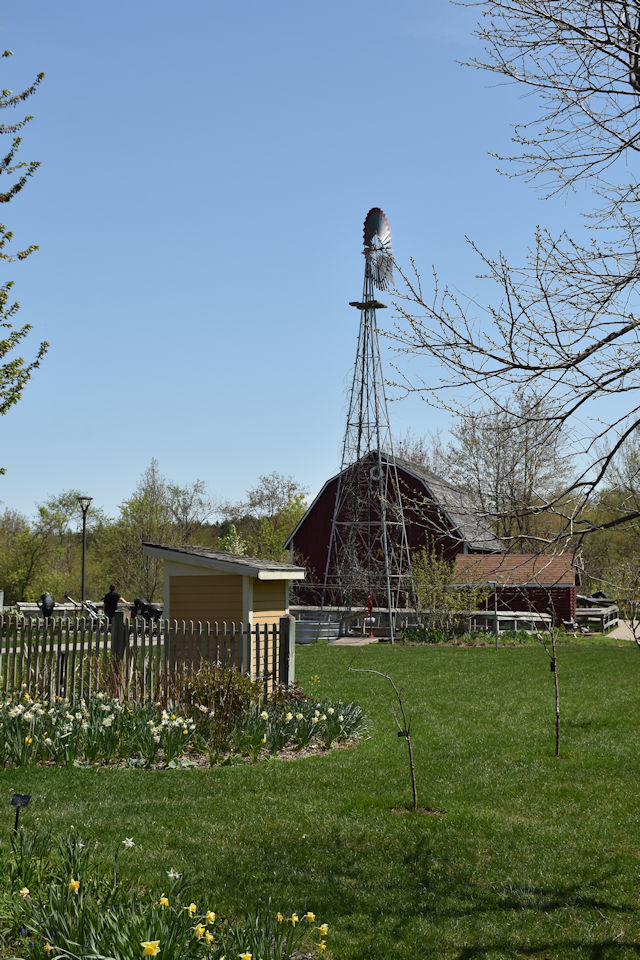
I bet I know what the small building in the foreground is.
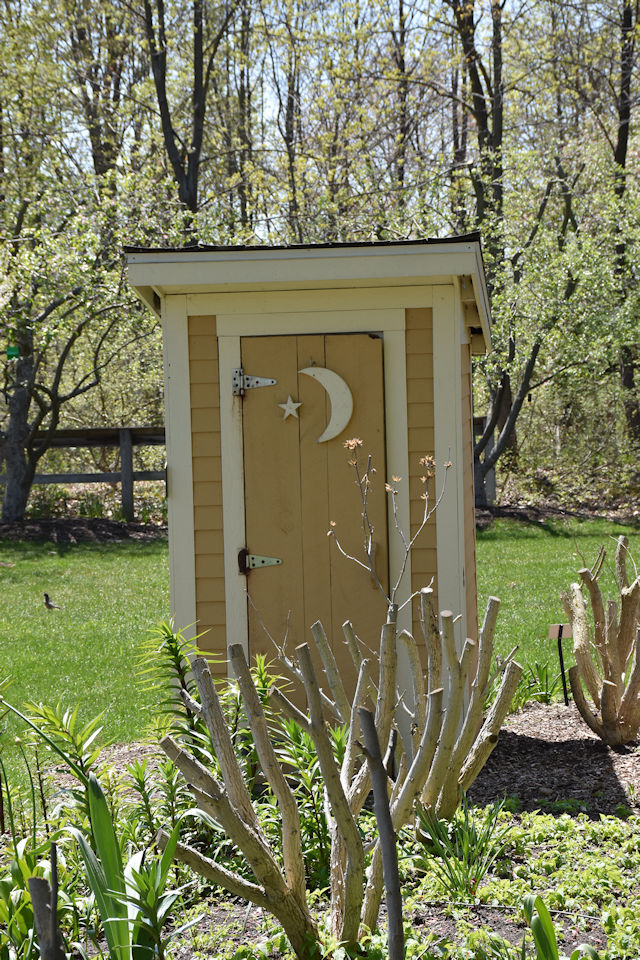
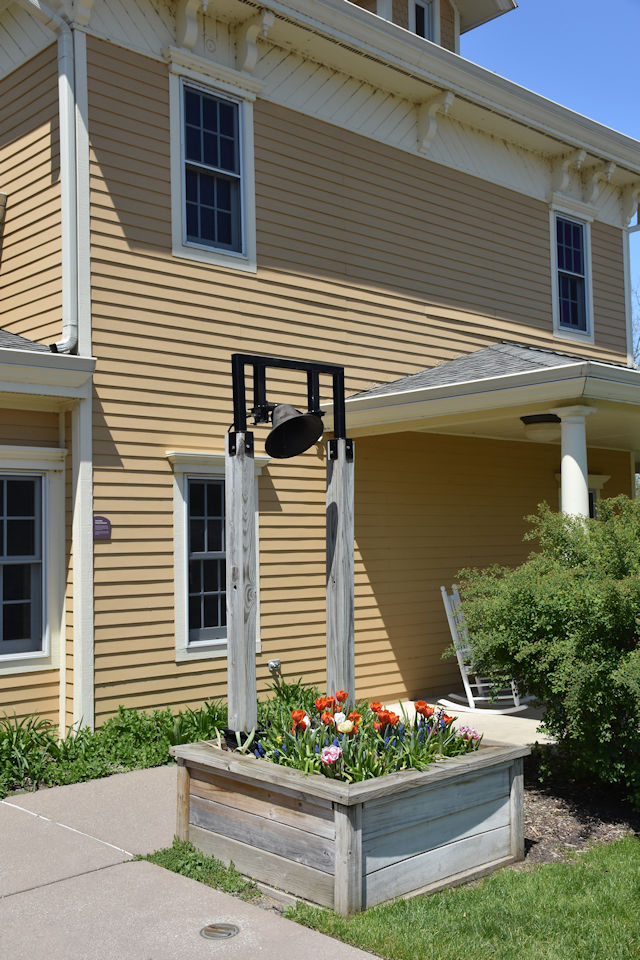
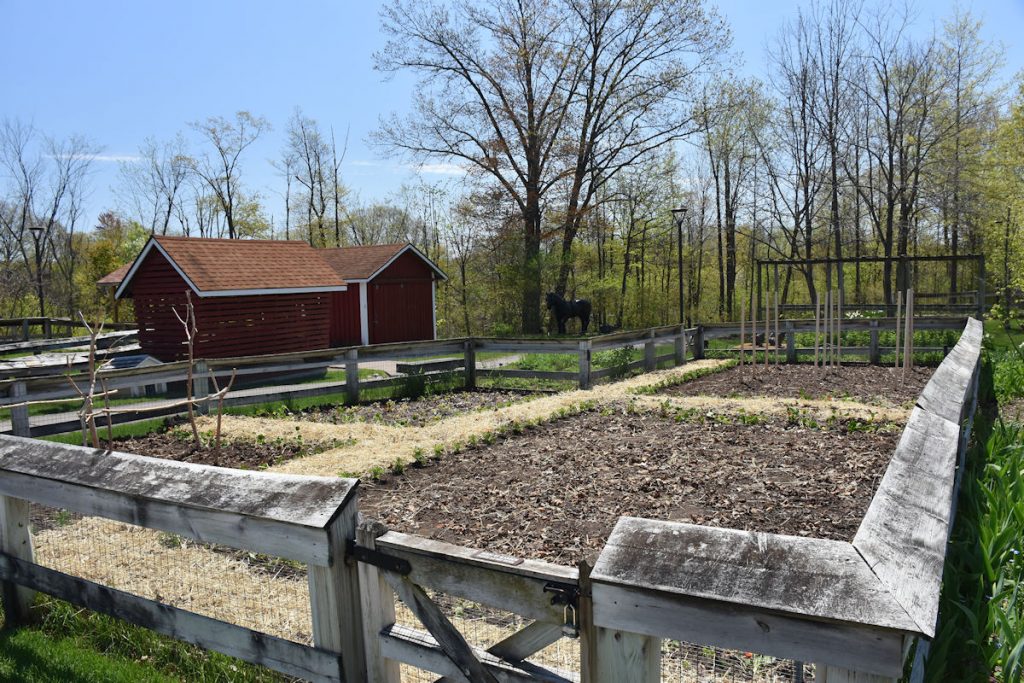
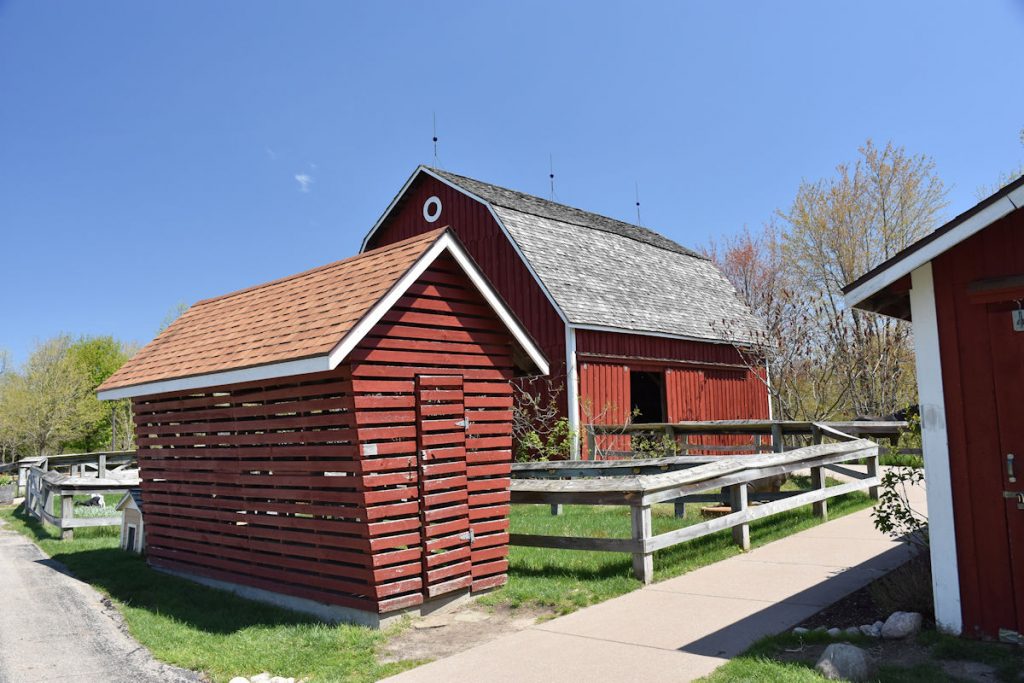

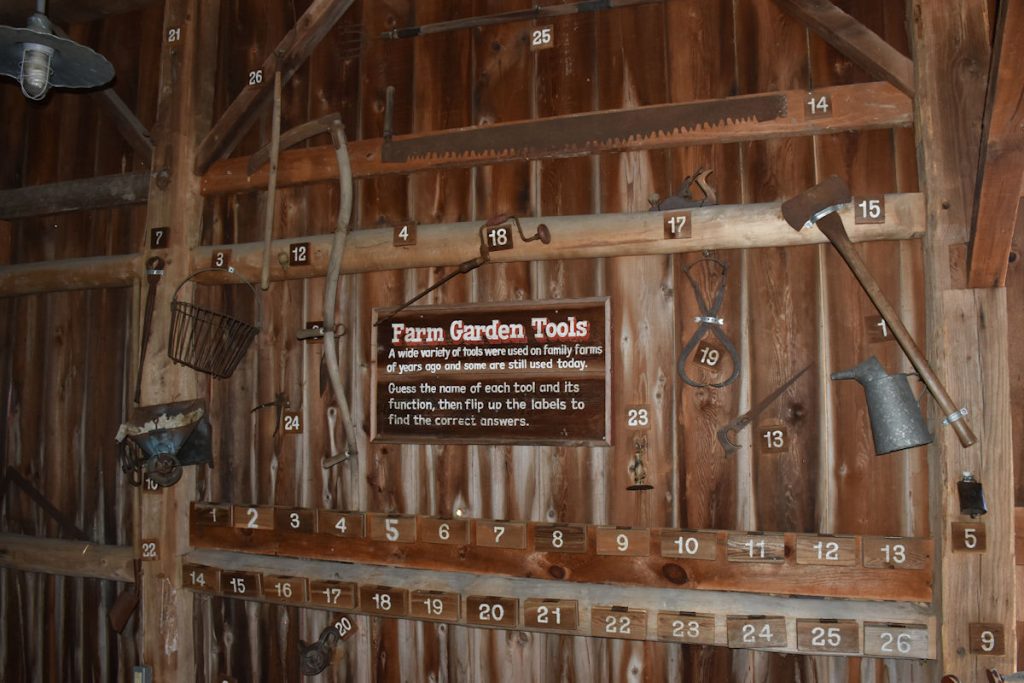
You guess what the tool is for and then check for the answer.
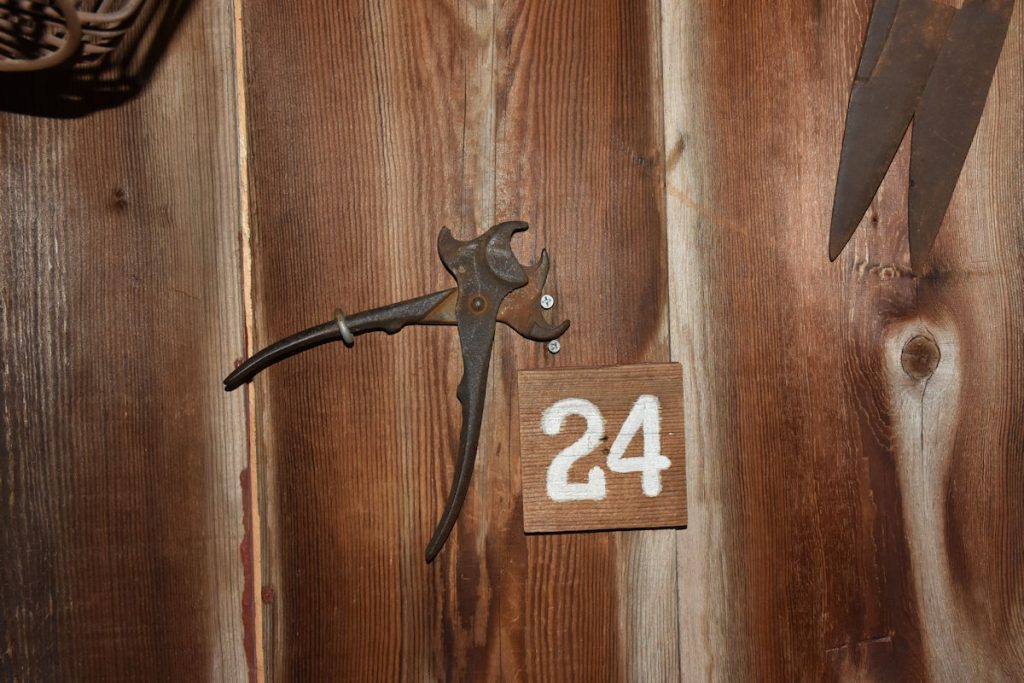
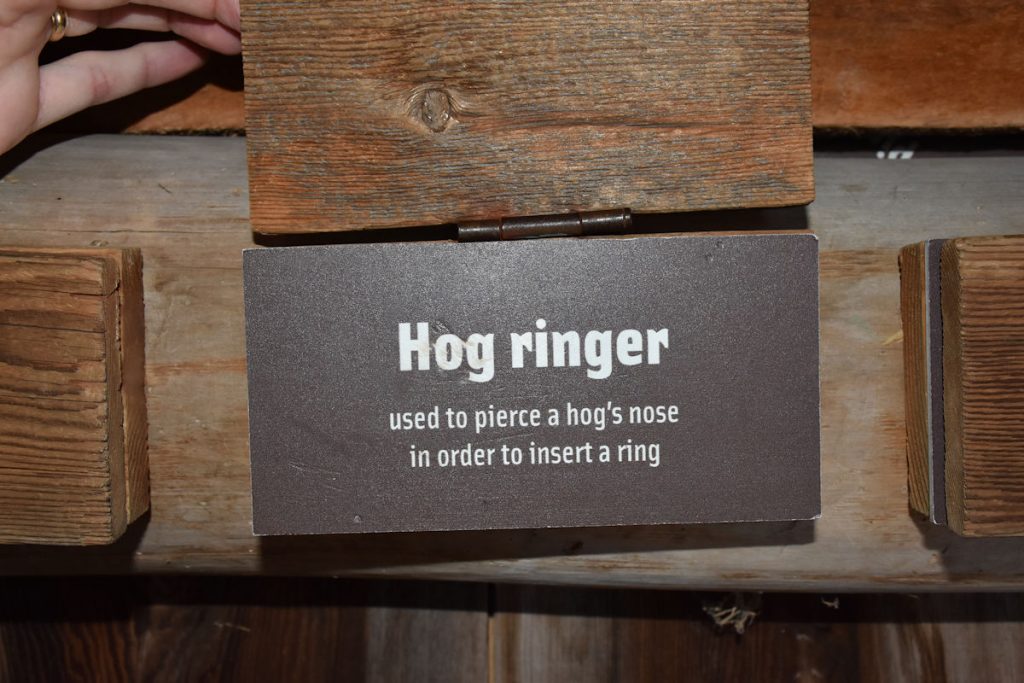
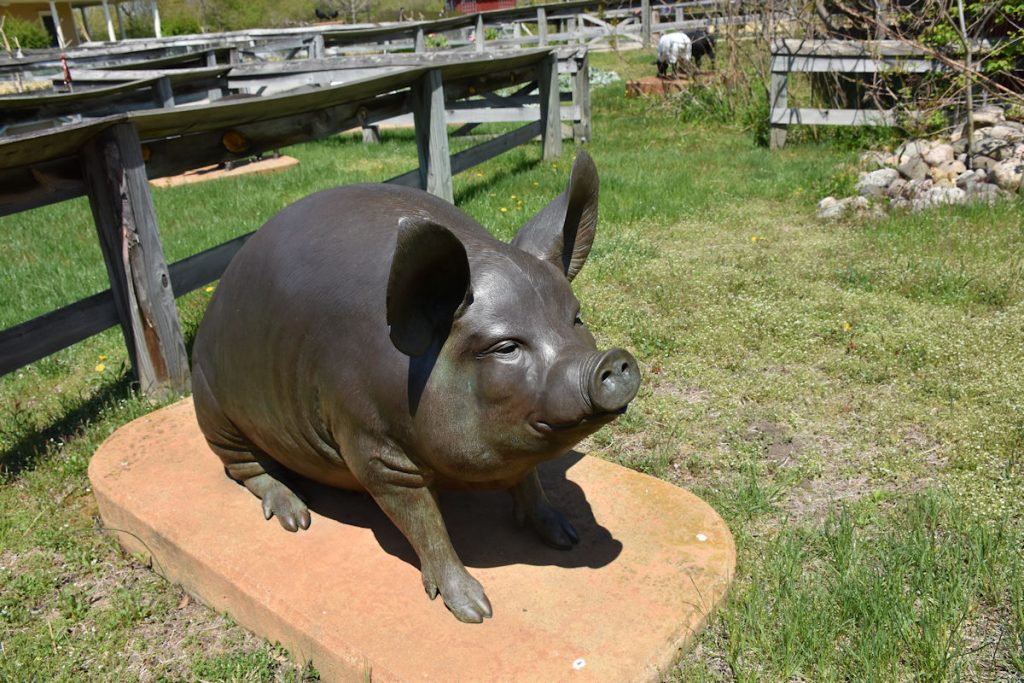
André Harvey was a realist, meaning he liked to focus on what is authentic. Many ideas came from the countryside where he grew up alongside the Brandywine River in Southeastern Pennsylvania. Helen is modeled after a particular sow who took an interest in Harvey and always came to him when he called. *
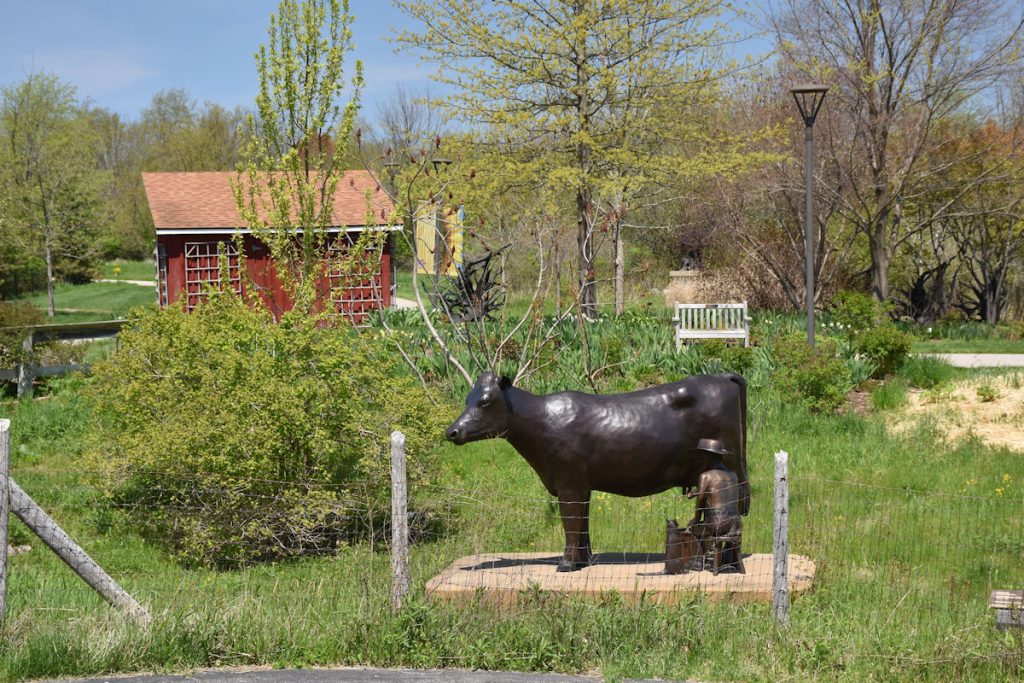
Carl Jensen was always interested in art and sculpture and took related classes. He produced works while in the military and during his career at Boeing. He retired to pursue his passions of agriculture and art. Lena Milking A Cow was commissioned by Fred Meijer and shows Lena at an early age when she lived on a farm. *
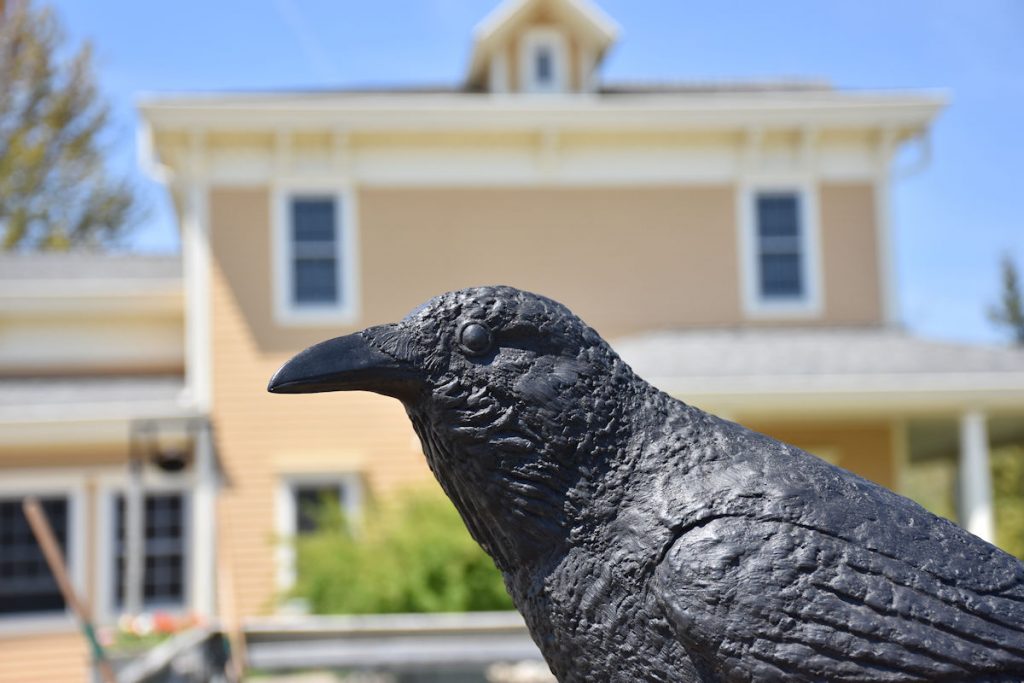
American sculpture is well populated with animal imagery – even today. Jim Eppler is fond of depicting images of nature in his work. He has been praised for his lifelike creations and interpretations. In his bronzes, details of movement are subtly emphasized. Eppler was fond of creating images of nature and has earned praise for his lifelike bronzes. *
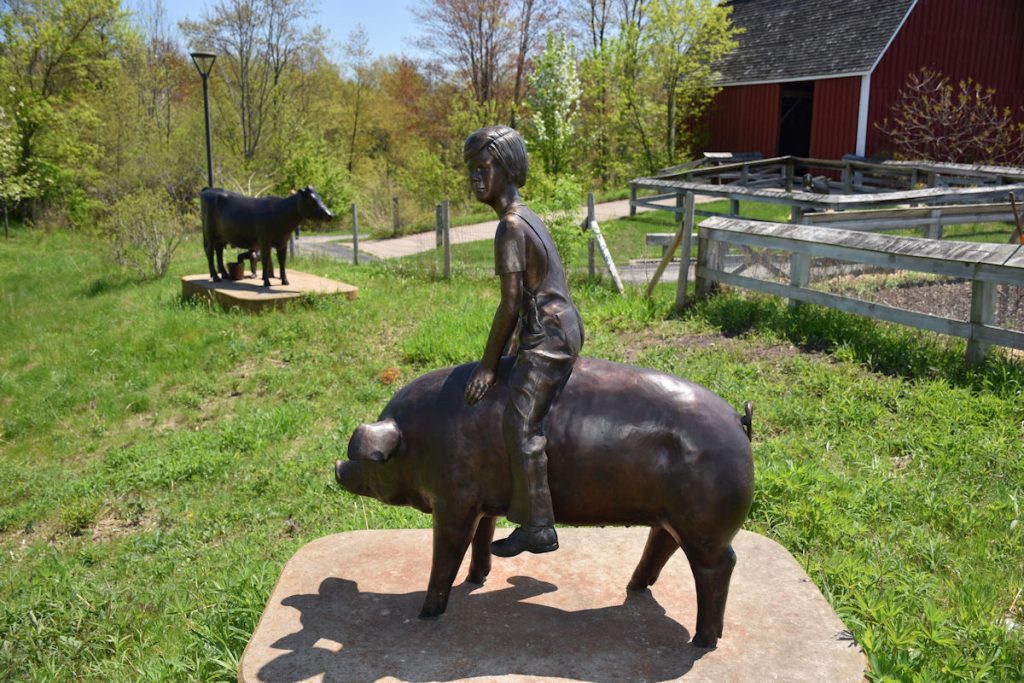
Michigan’s Farm Garden is full of playful reminders of Fred and Lena Meijer’s childhood. Carl Jensen wanted his work to revive memories and establish new understanding, as well as being instantly recognizable. Lena Riding A Pig was commissioned by Fred and depicts his wife Lena at a young age. *
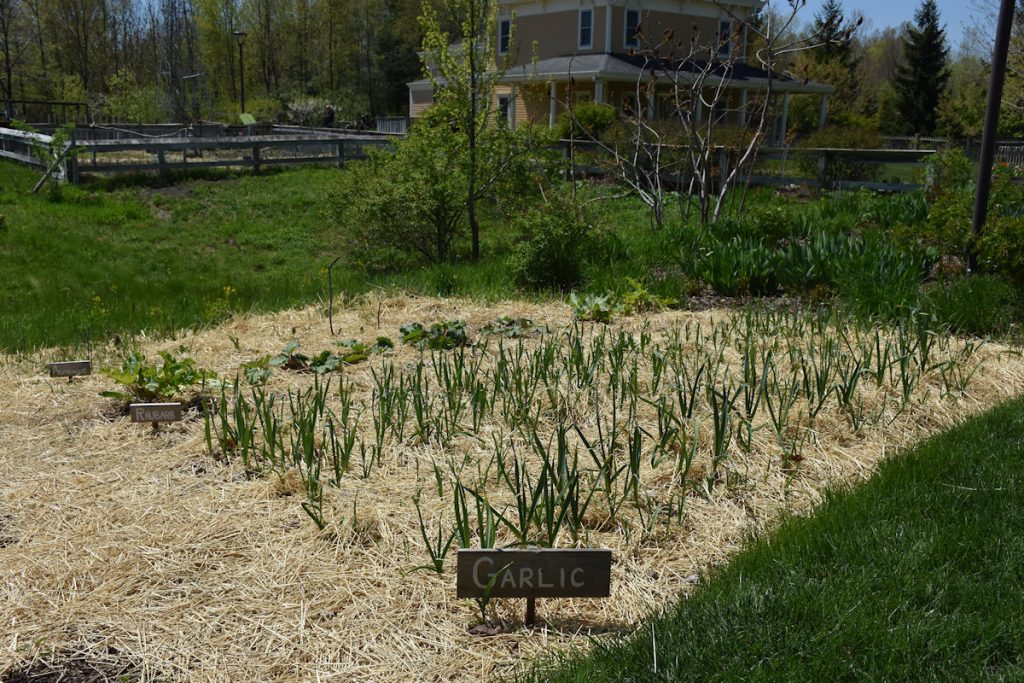
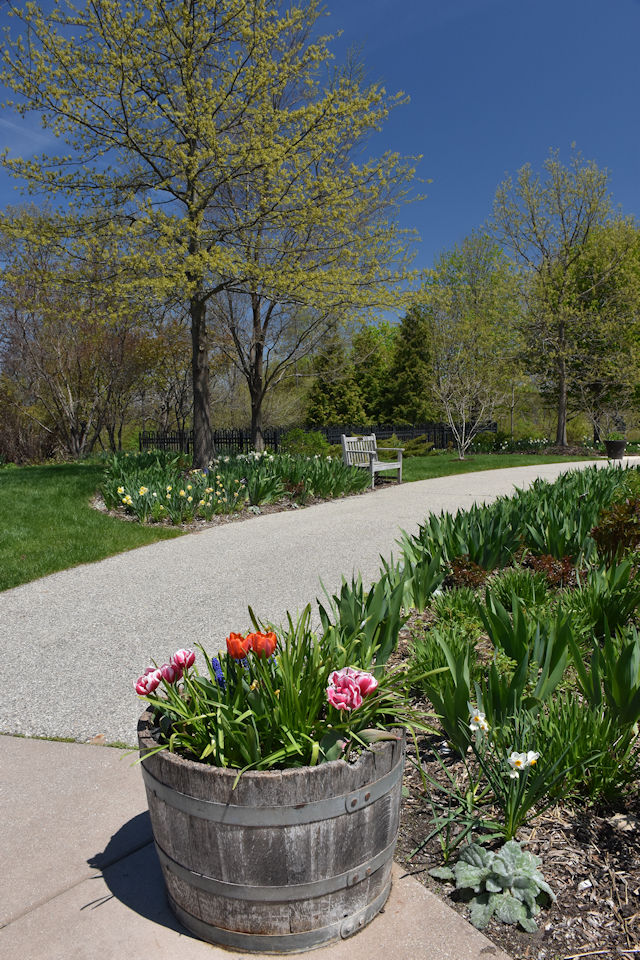
Behind the fence in the background is the family cemetery.
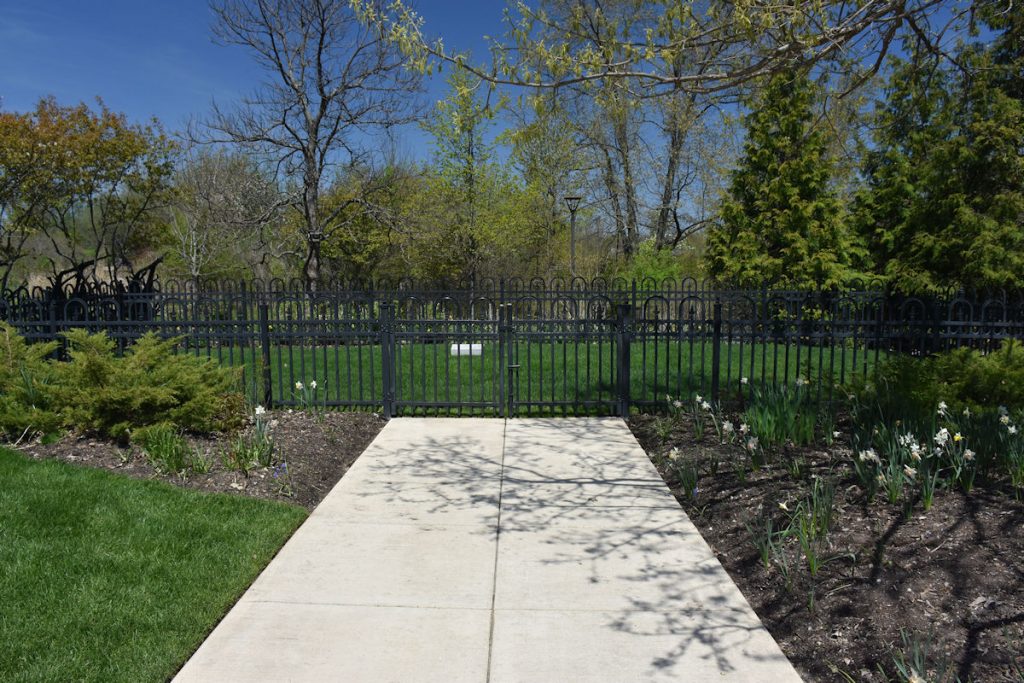
Very peaceful and quiet resting place.
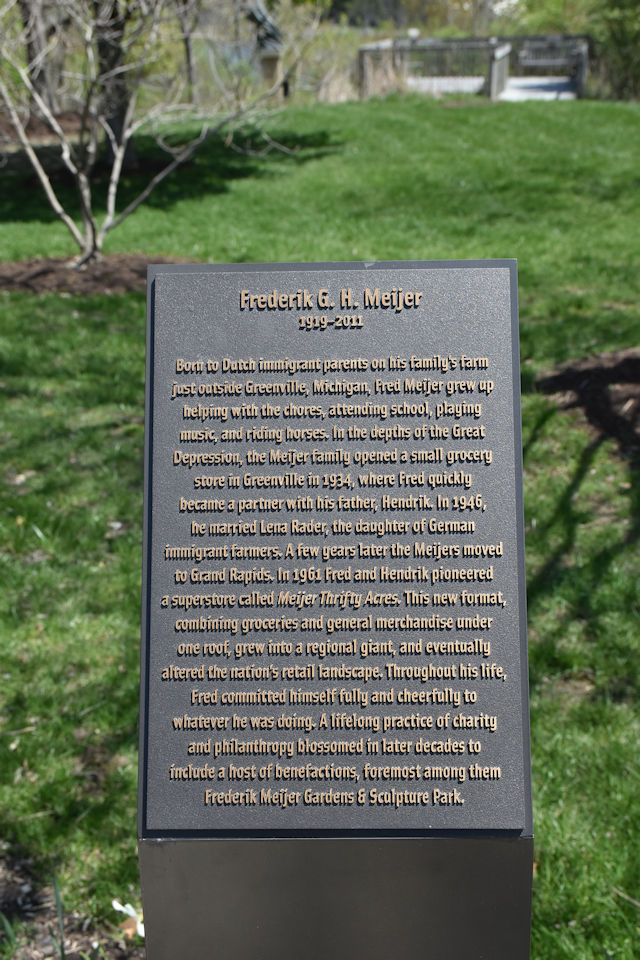
The Boardwalk
Next on the Meijer Gardens loop is the Boardwalk through the marshes.
Lots of birds, turtles, and more.
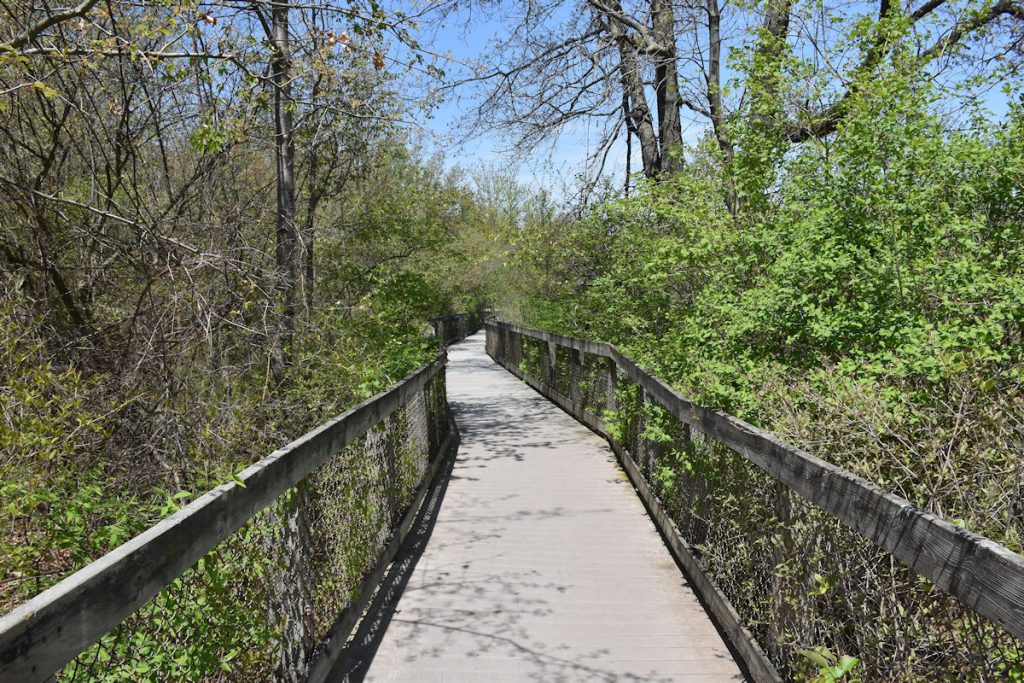
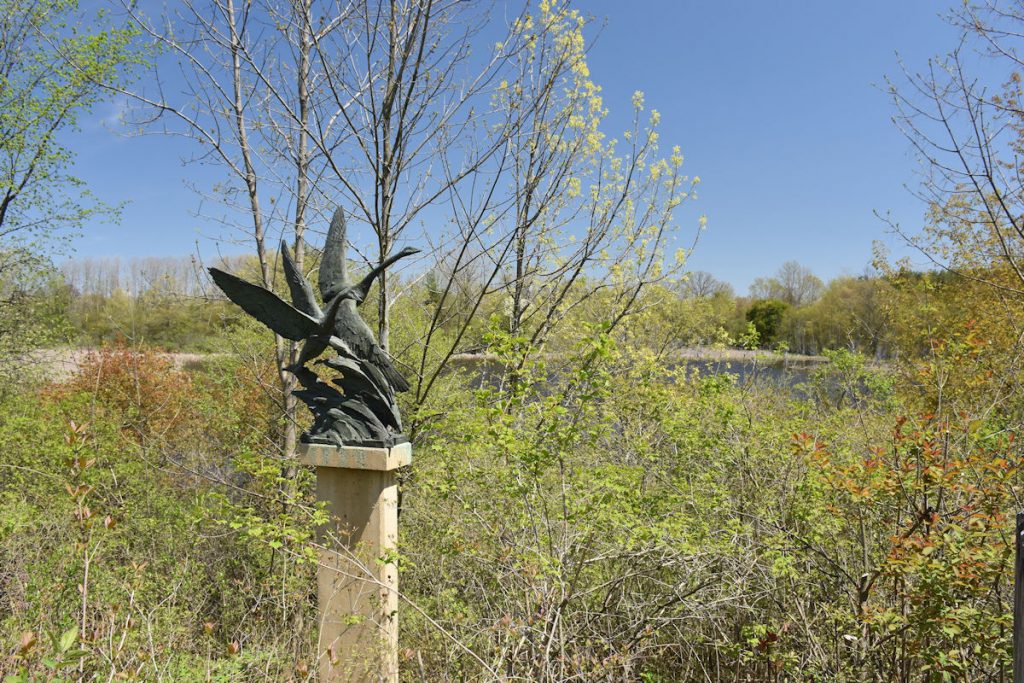
This American sculptor is known for his animal and figurative images cast in bronze. Price loves sculpting birds and Swans’ Flight is one of his favorite pieces. Representing freedom and grace, swans have the wonderful ability to rise above the earth and see things in their proper perspective. *
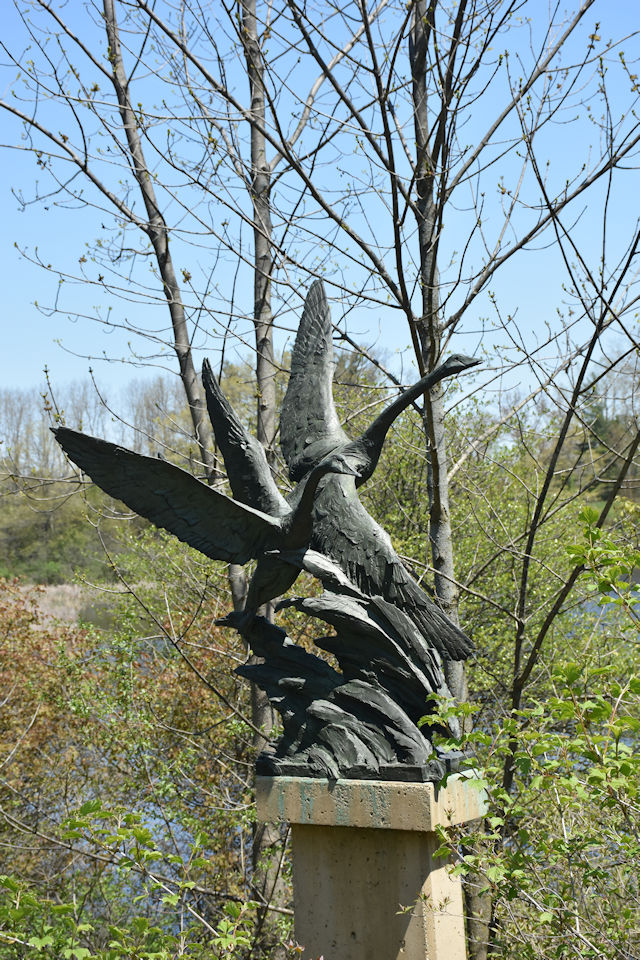
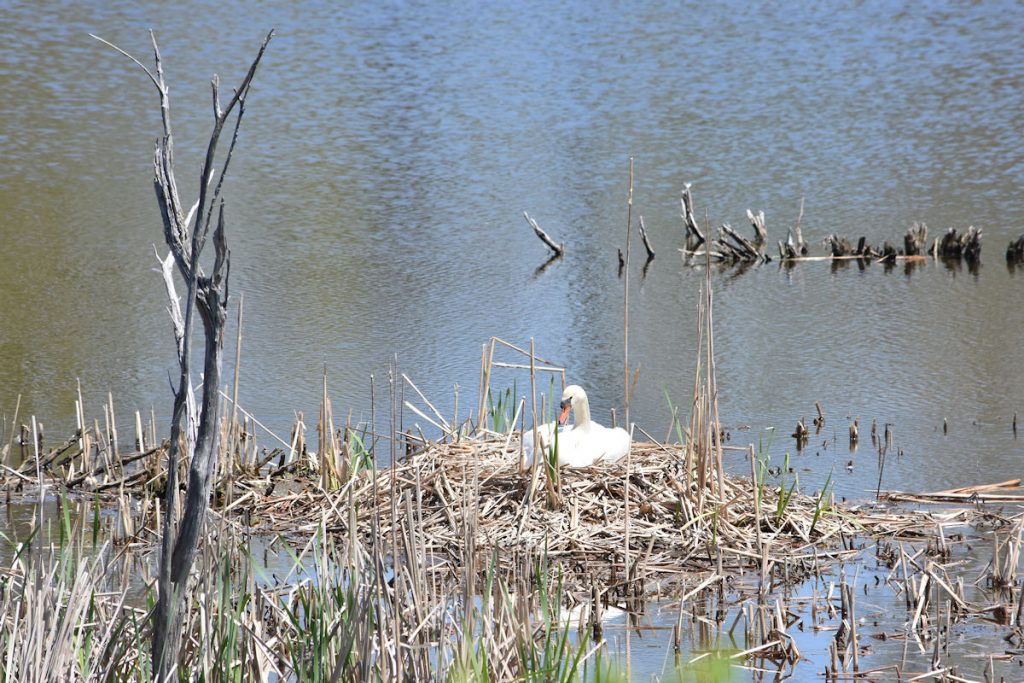

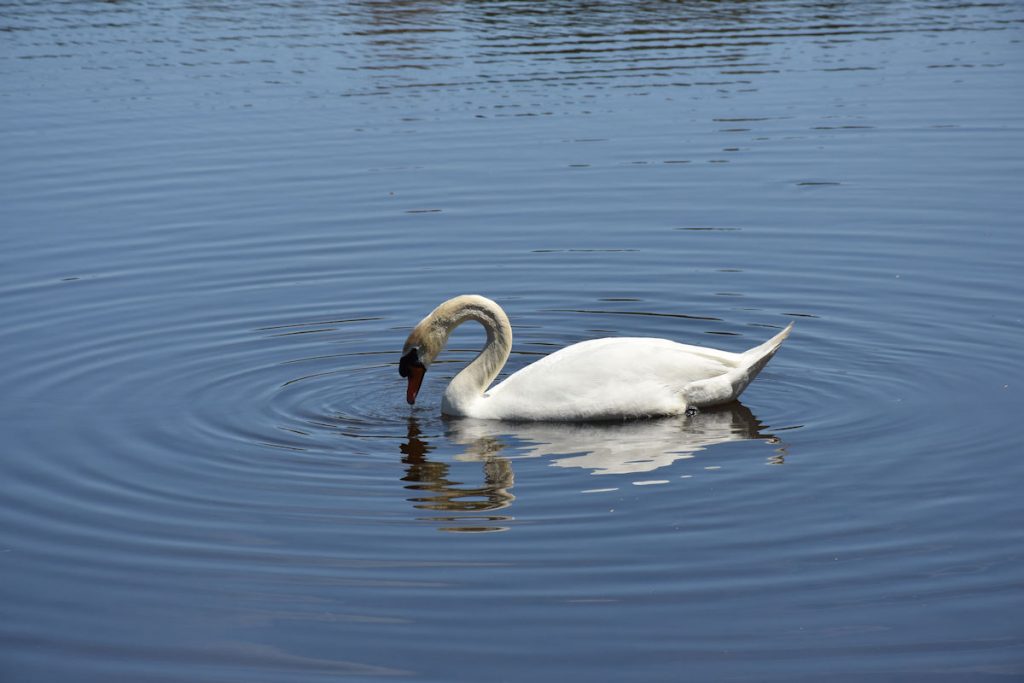
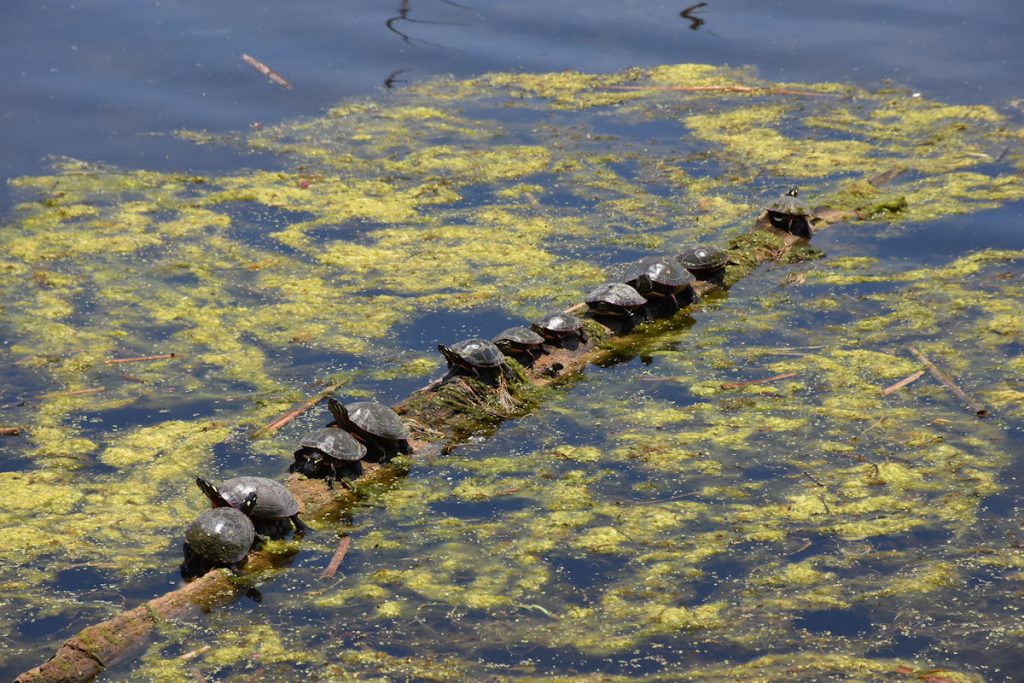

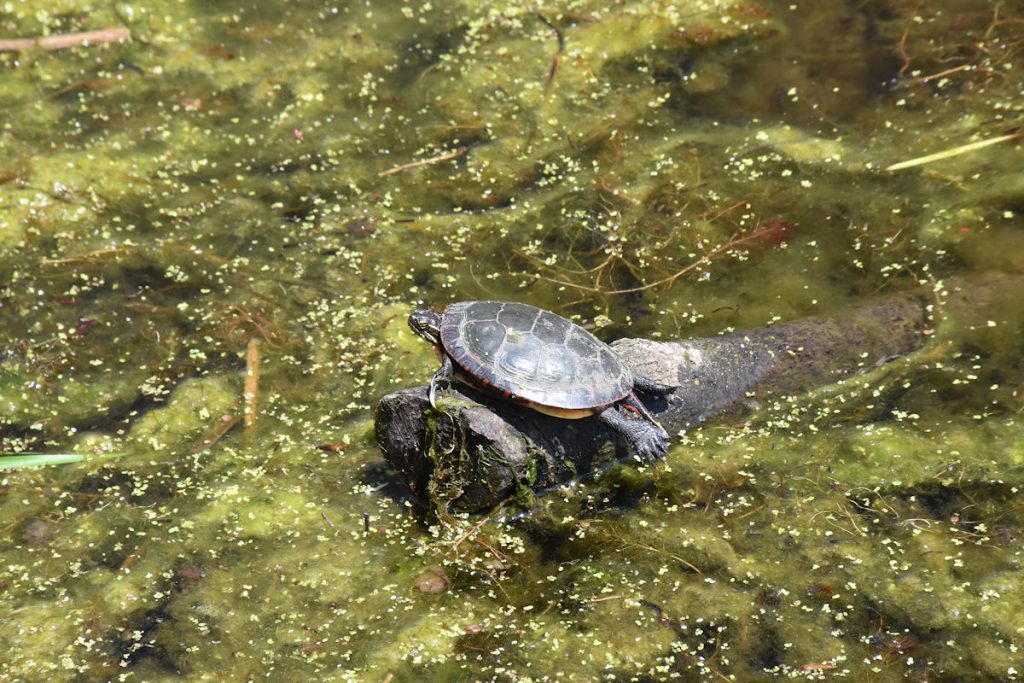
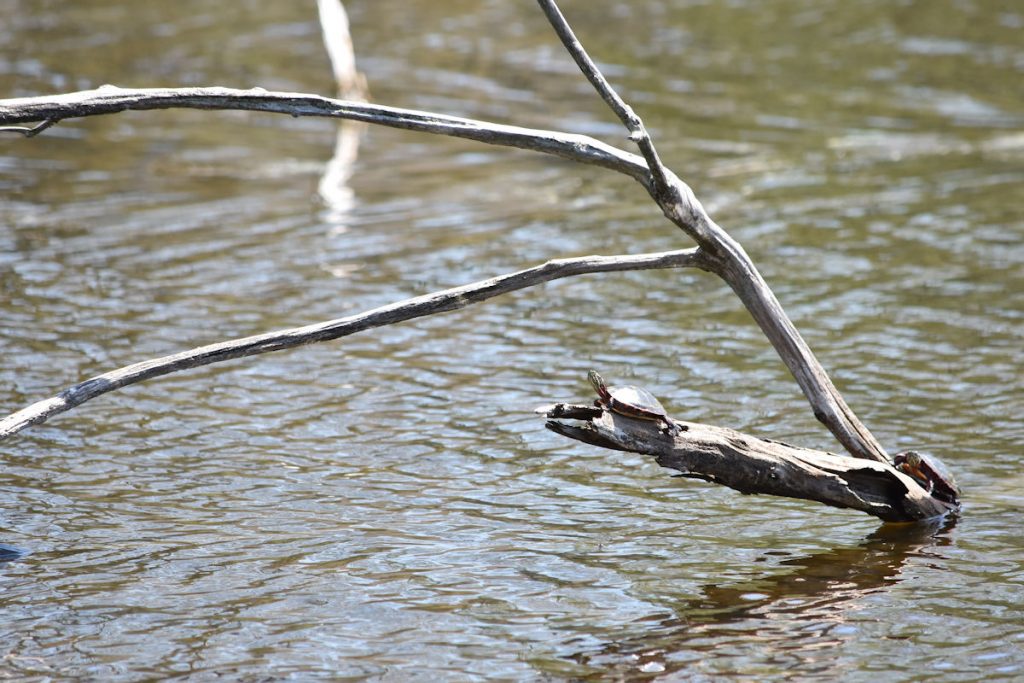

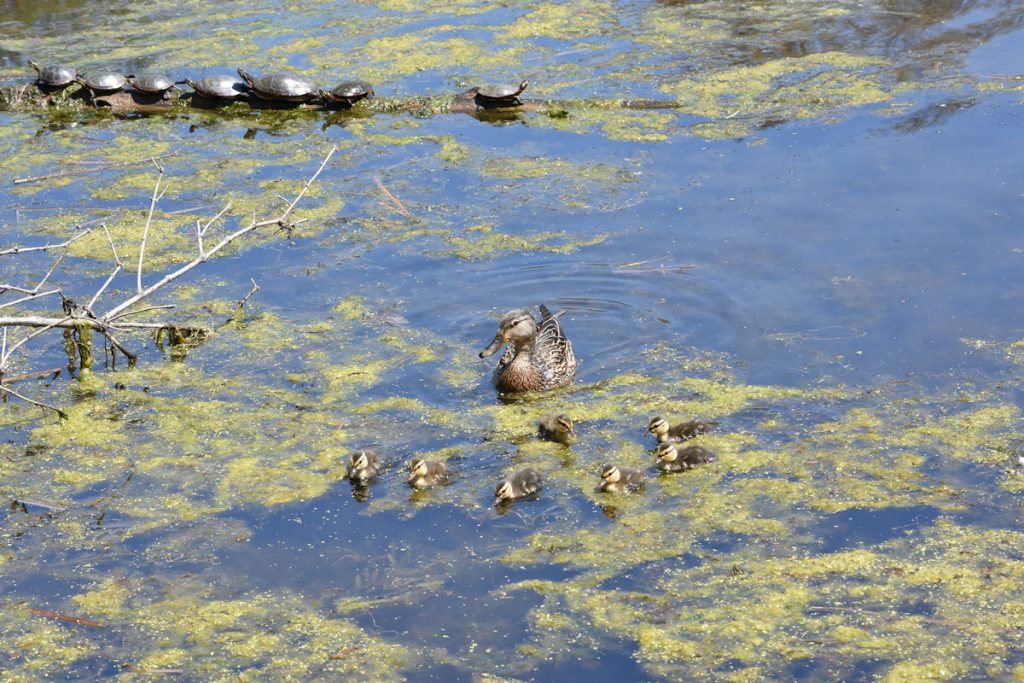
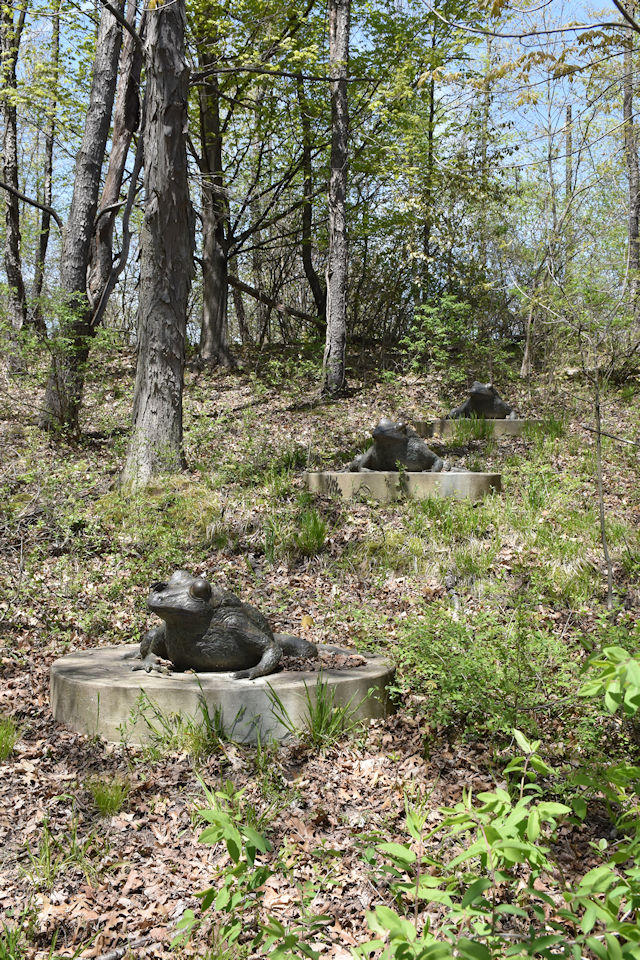
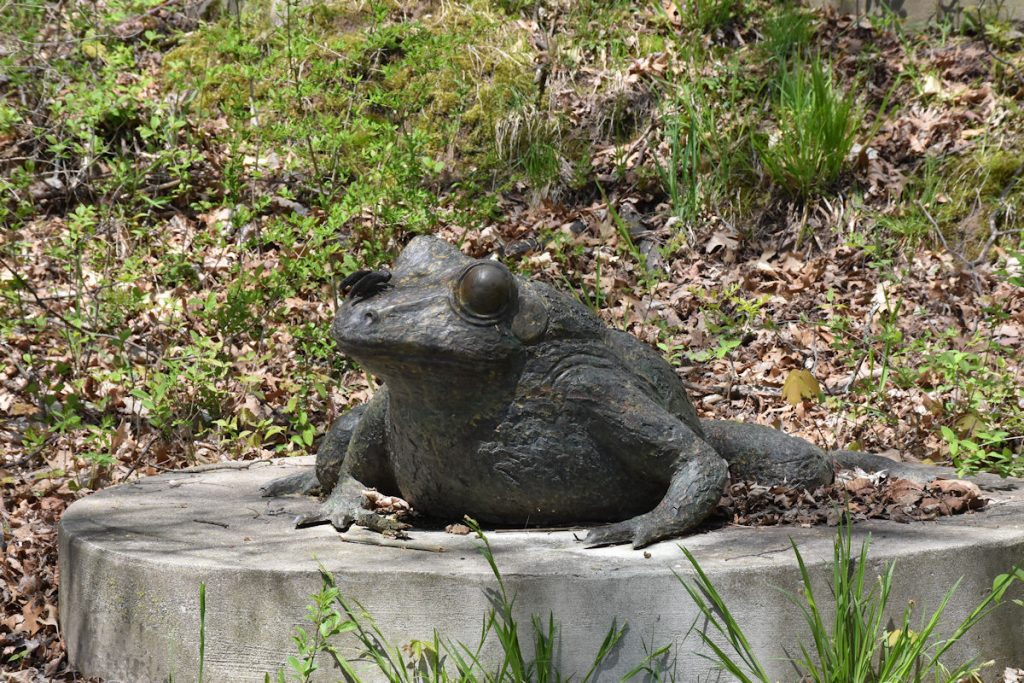
Whimsical pieces such as this factor into Fred Meijer’s early collection and remain popular with general audiences and children. This group was placed along the boardwalk to draw attention to the wetland creatures nearby. *
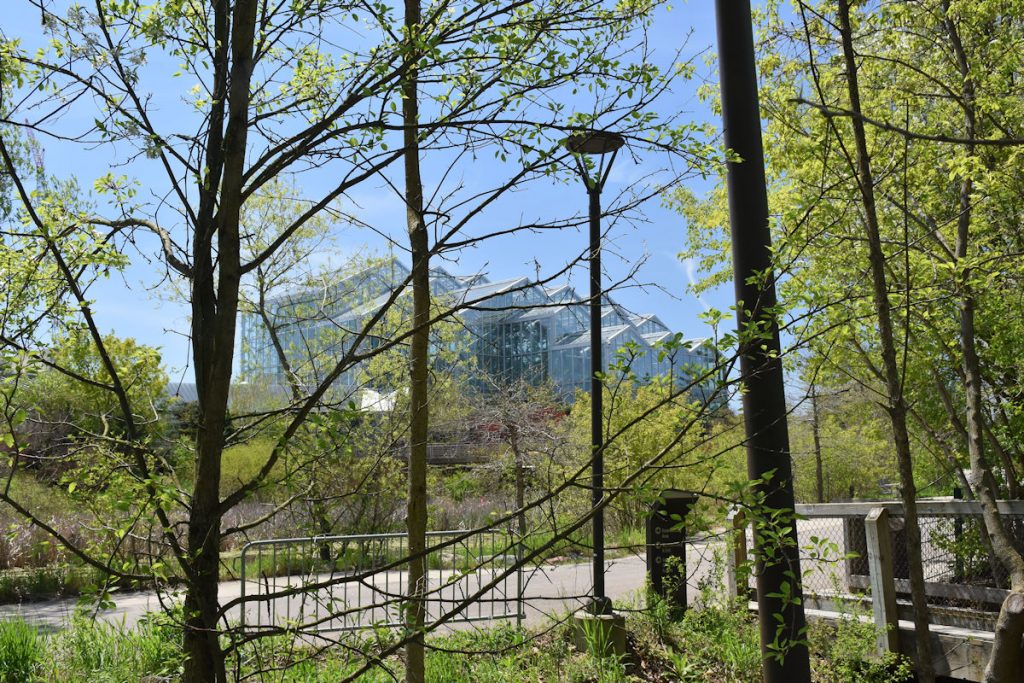
The Meijer Gardens Children’s Garden
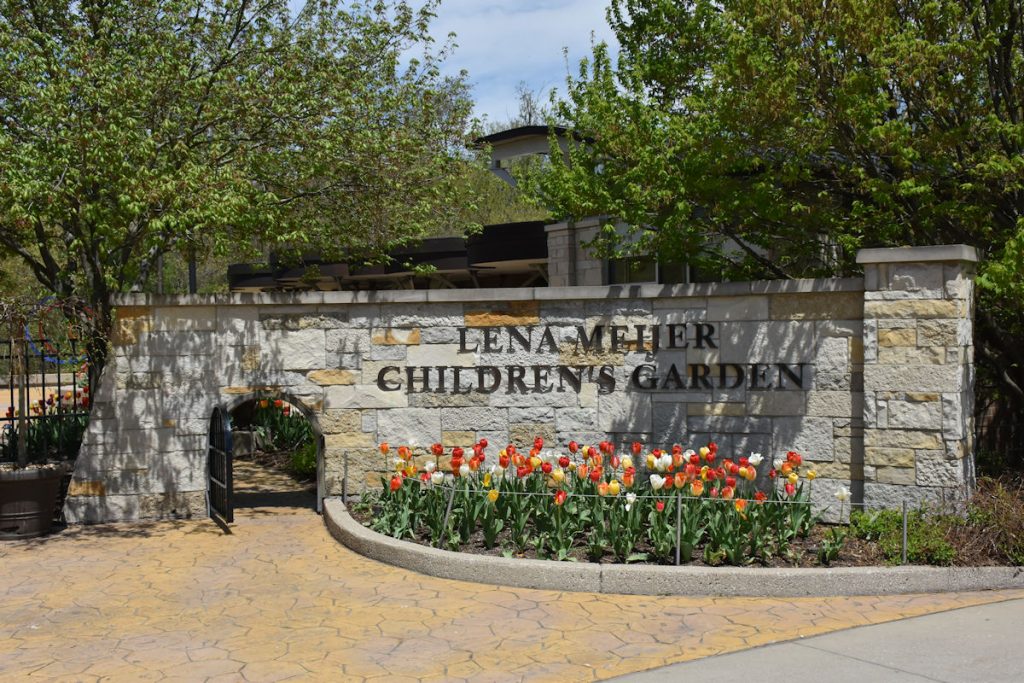
There are numerous water exhibits where the kids can get wet and touch the plants and statues.
I did not take many pictures here because of privacy issues (an old man taking photos of kids).
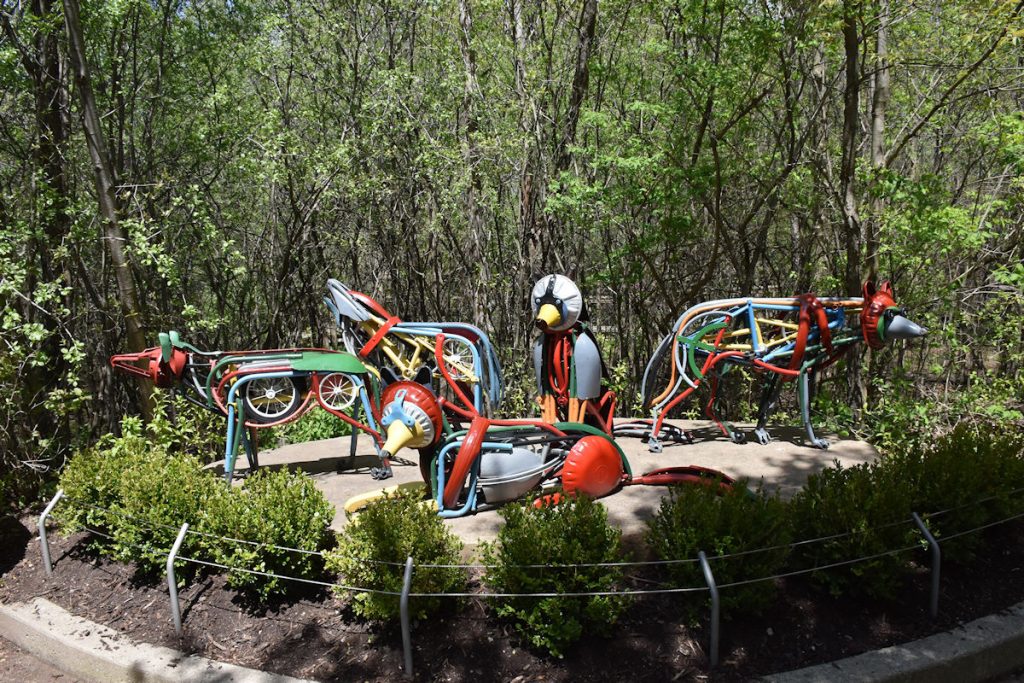
Family Of Wolves has been delighting youth and adults alike for many years. It is a much loved feature in the Lena Meijer Children’s Garden. Specifically, it is sited along the “Sculpture Trail” area. This colorful sculpture is made of found objects which can be identified as pieces of each wolf. Its placement is not only to delight young audiences, but to help them understand the importance of sculptures that use found objects and that make use of fabrication techniques. *

Very fitting in the Children’s Garden.
Victor Issa is a figurative sculptor known for his narrative imagery. In Grandpa, The Storyteller you can see how lifelike the child and the grandfather look. This piece evokes the familiar feeling of being with, and learning from, your grandparents or elders. Appropriately enough, this work is placed in the Storyteller’s area in the Lena Meijer Children’s Garden. *
Inside the Meijer’s Gardens Visitor Center
After several hours of enjoying the outside gardens, we ventured inside to see the indoor gardens and tropical forest.
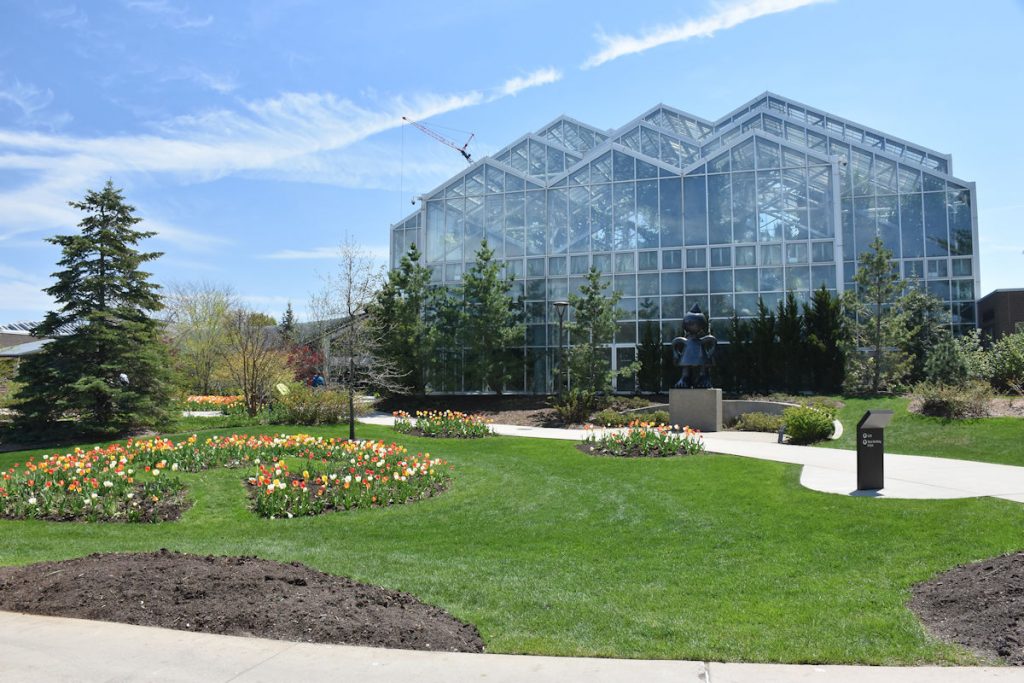
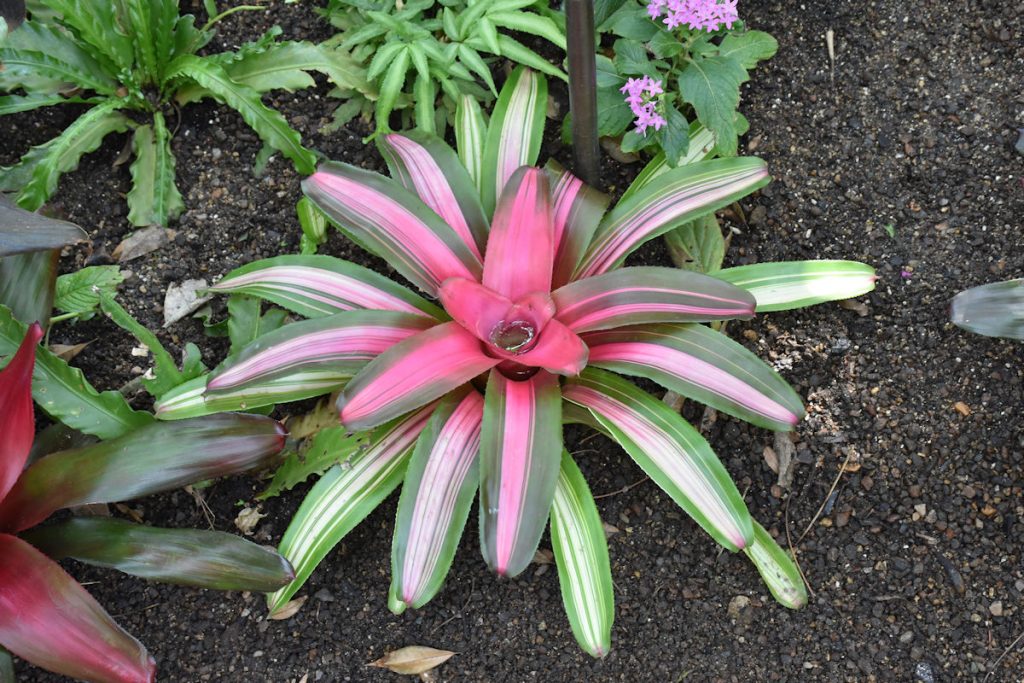
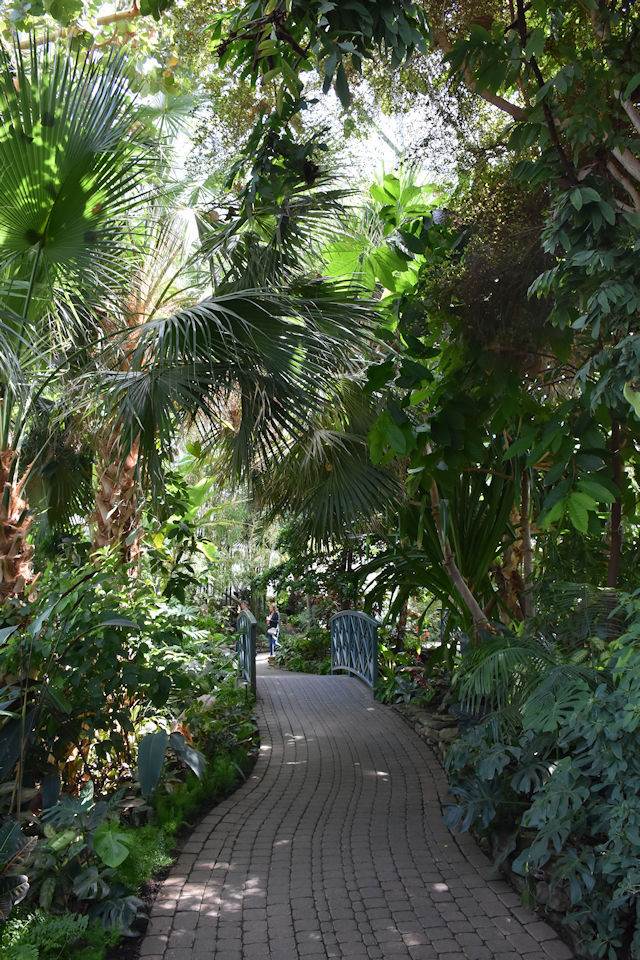
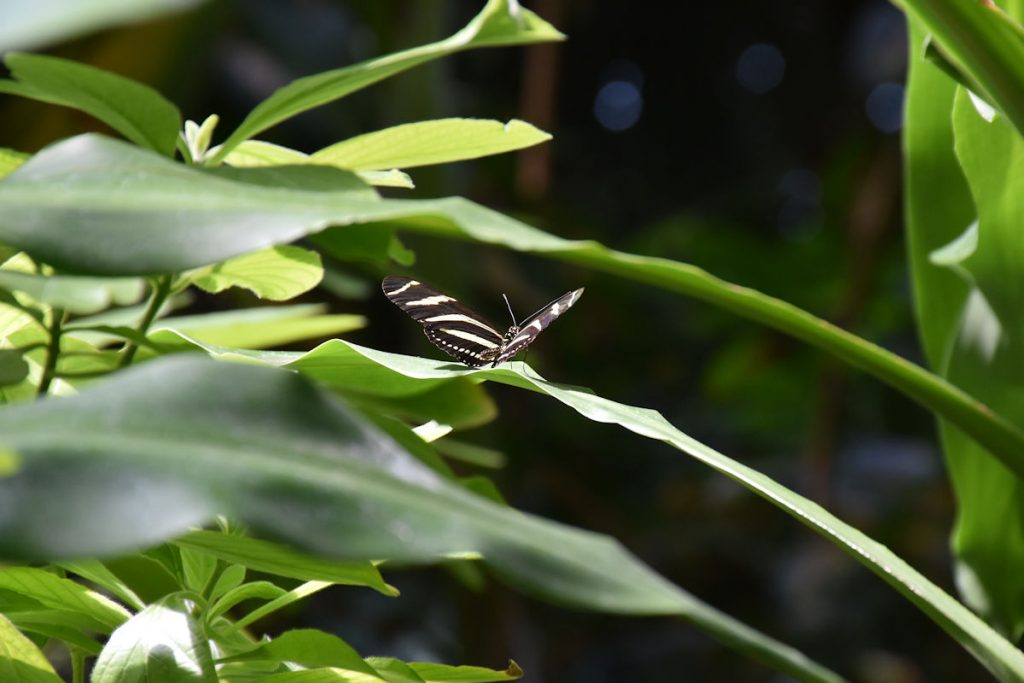
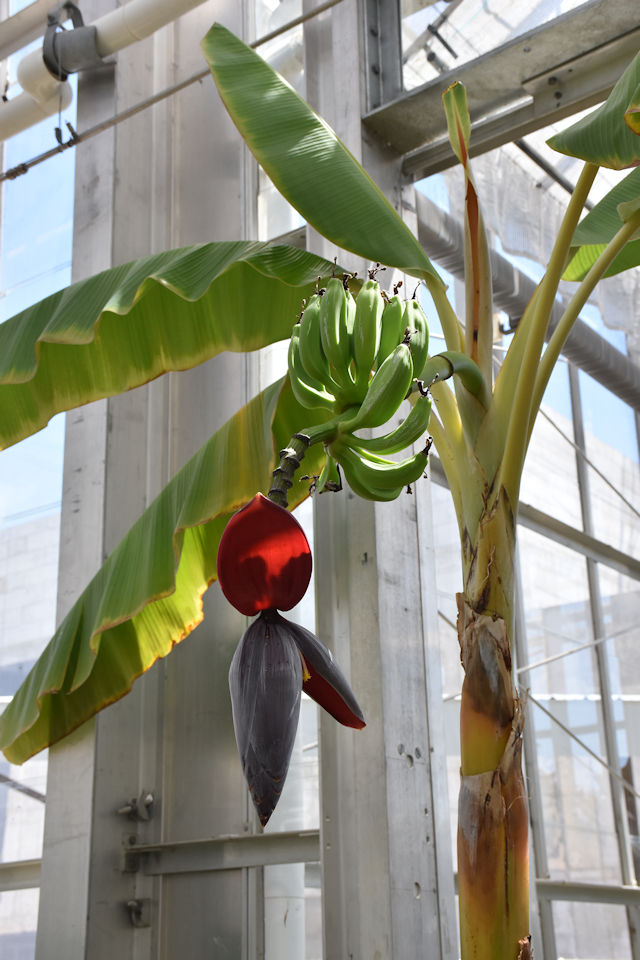
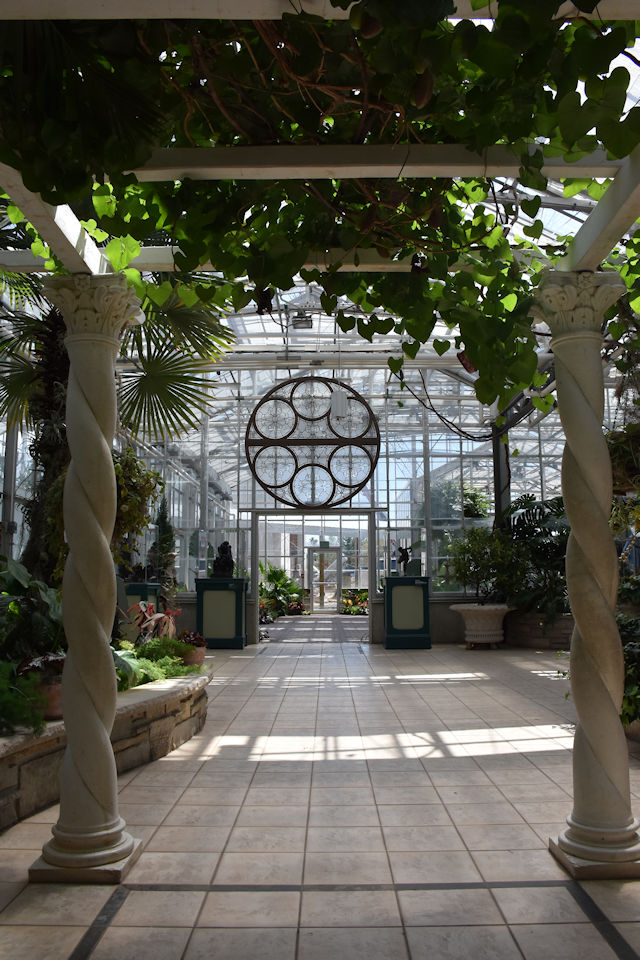
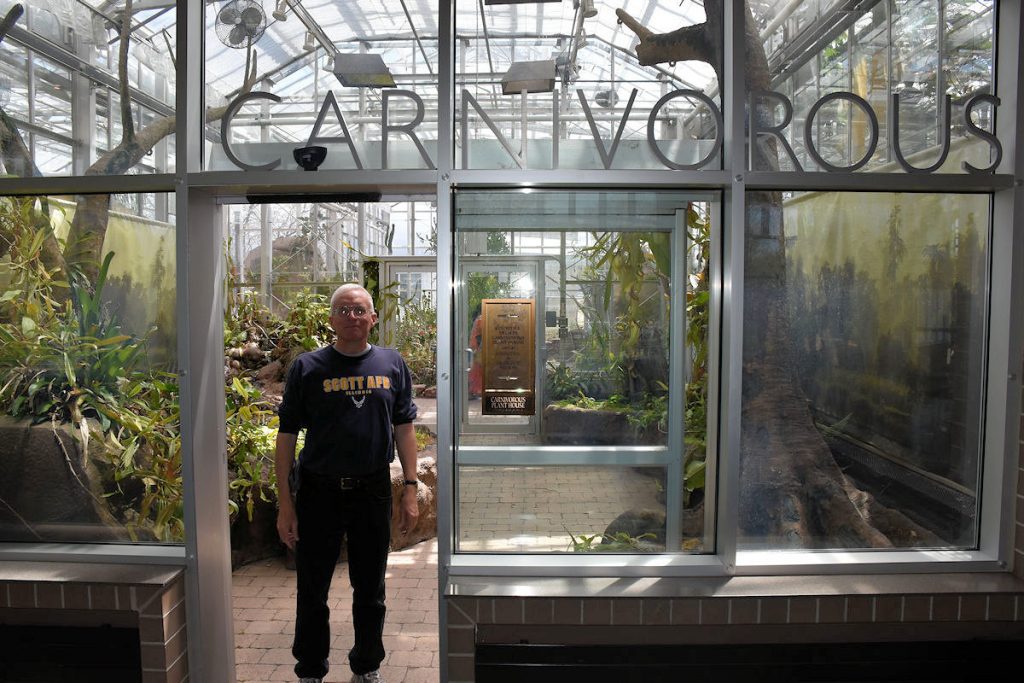
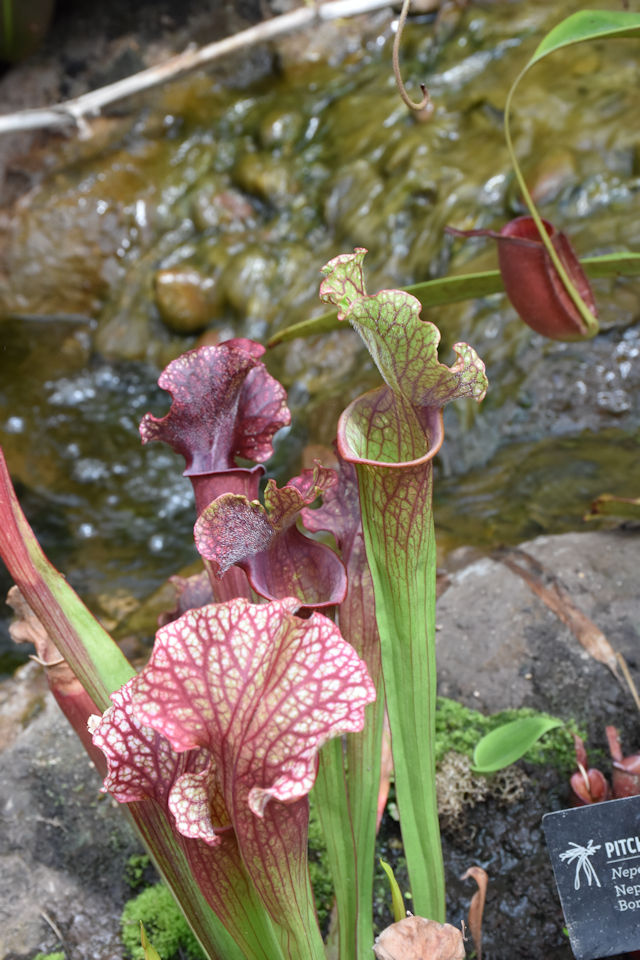
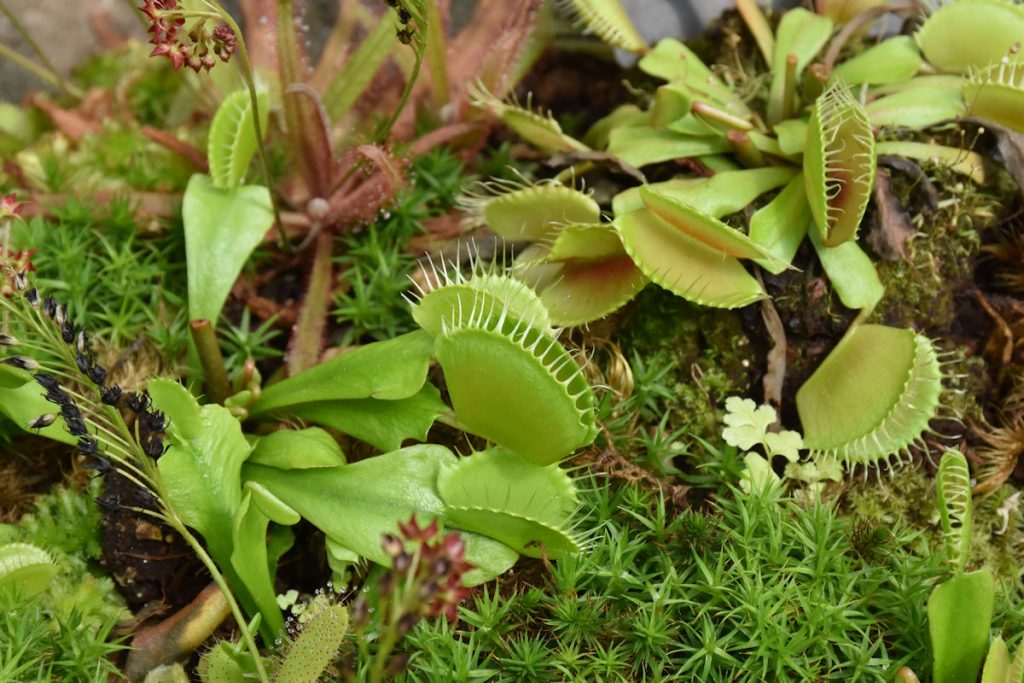
When an insect goes inside, the leaves snap shut. It takes about a week to digest the insect.
Well, it was a wonderful day at the Meijer Garden and Sculpture Park, but it is time to head down the road.
We are heading east to the Detroit area to stay overnight. Tomorrow, we will explore the north shore of Ohio (Lake Erie).
Ohio – Lake Erie Shoreline
Wednesday – May 15
On Wednesday, we were going to stop at the Henry Ford Museum in Dearborn, Michigan, but the weather was so nice, we decided to go to the north shore of Ohio along Lake Erie (between Toledo and Sandusky, Ohio). We didn’t know it, but this is a birdwatcher’s paradise. Apparently, there are thousands of migrating birds at various times of the year. There were miles and miles of marshes and bird-watching areas.
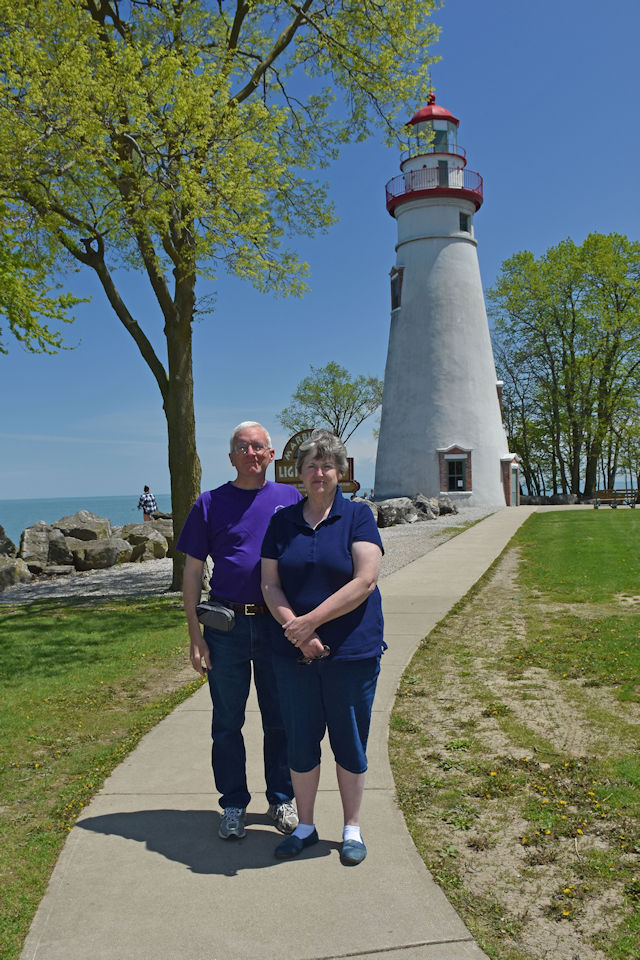
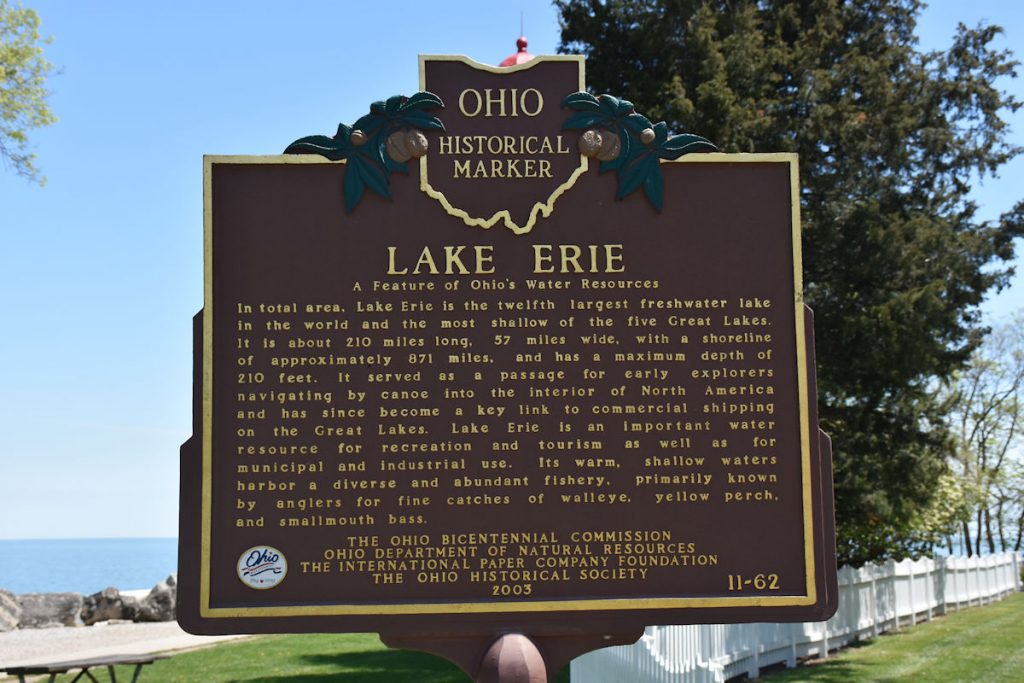
After some sightseeing, it was time to head to Cleveland, where we met up with a good friend (Patty) who introduced Beth and I to each other way back in 1984. We had dinner and caught up on lots of news. It was great to see her again.
Tired, we fell asleep as soon as our heads hit the pillows that night. The next day, we explored Ohio back roads on our way southeast towards home.
Glad you could join us for this fun trip!
